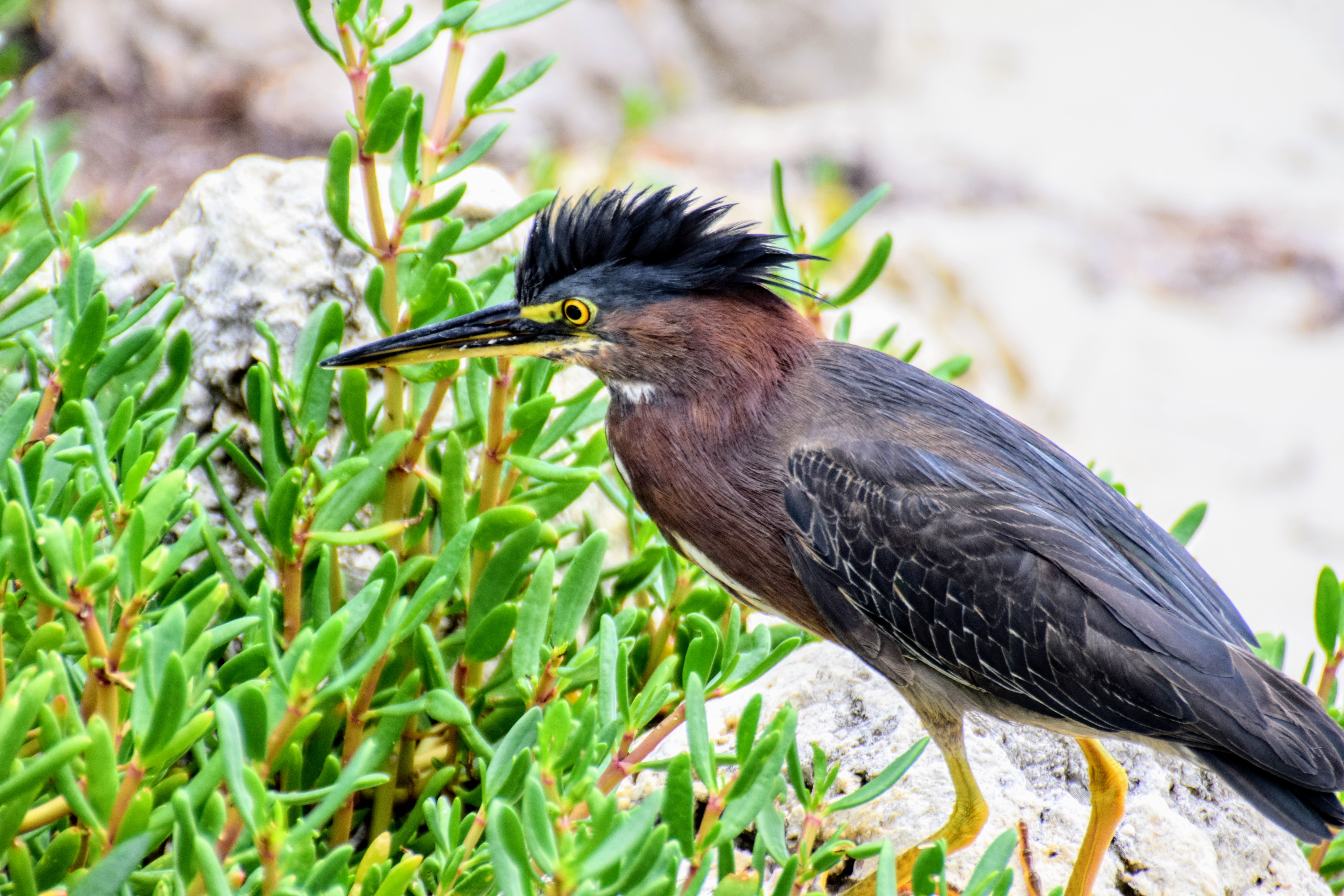I recently went to Miami for vacation and a conference. It’s on every birder’s bucket list for two reasons: first, it’s the only place in the continental US that’s nearly tropical and shares a lot of fauna with the Caribbean (take a look at how close Key West is to Cuba), and second, its long peninsula makes a great partial land bridge for birds that migrate along the east coasts of the Americas. It’s a major stopover point for all kinds of warblers along the Atlantic Flyway, and since I visited in late September, I was able to see some of the first migrants starting to trickle in (their numbers peak in October). I was able to make it out to Key Biscayne (the one key that’s closest to Miami), the other Keys, and, of course, the Everglades, as well as enjoying the everyday birds around town, which are somewhat different than in the rest of the US.
In addition to birds that are new to me, Florida is home to lots of unfamiliar ectotherms such as turtles, gators, lizards, and bugs. Many are invasive; it’s not uncommon for exotic pets to escape wherever they are being kept, but in Florida, the tropical climate lets them survive in the wild. The importation of crops grown in the Caribbean on ships landing on the East Coast also brings small foreign animals to Florida.
I didn’t know this until I went there, but a key (also known as a cay) is an island built entirely upon coral. Large coral reefs collect sediment over time, forming landmasses. You can see the coral in a lot of places you’d normally see rocks, such as in retaining walls and landscaping, and on the edges of beaches.
Without further ado, here are the birds!
Birds of the Everglades
When I went to the Everglades, I was able to see three distinct biomes: the “river of grass” swamps, which had lots of bugs but not that much other visible life; the rainforest, which had lots of birds and bugs that were both much easier to hear than to see; and the long pines, a strange, flat forest with skinny pine trees with needles only on their tops. I’m not sure what makes them grow that way.
The weather was monsoon-y: blue skies one moment, impressive downpour the next. Each downpour lasted only twenty minutes or so, so they were easy to wait out, though they made everything muddy. There was also frequent lightning and thunder.
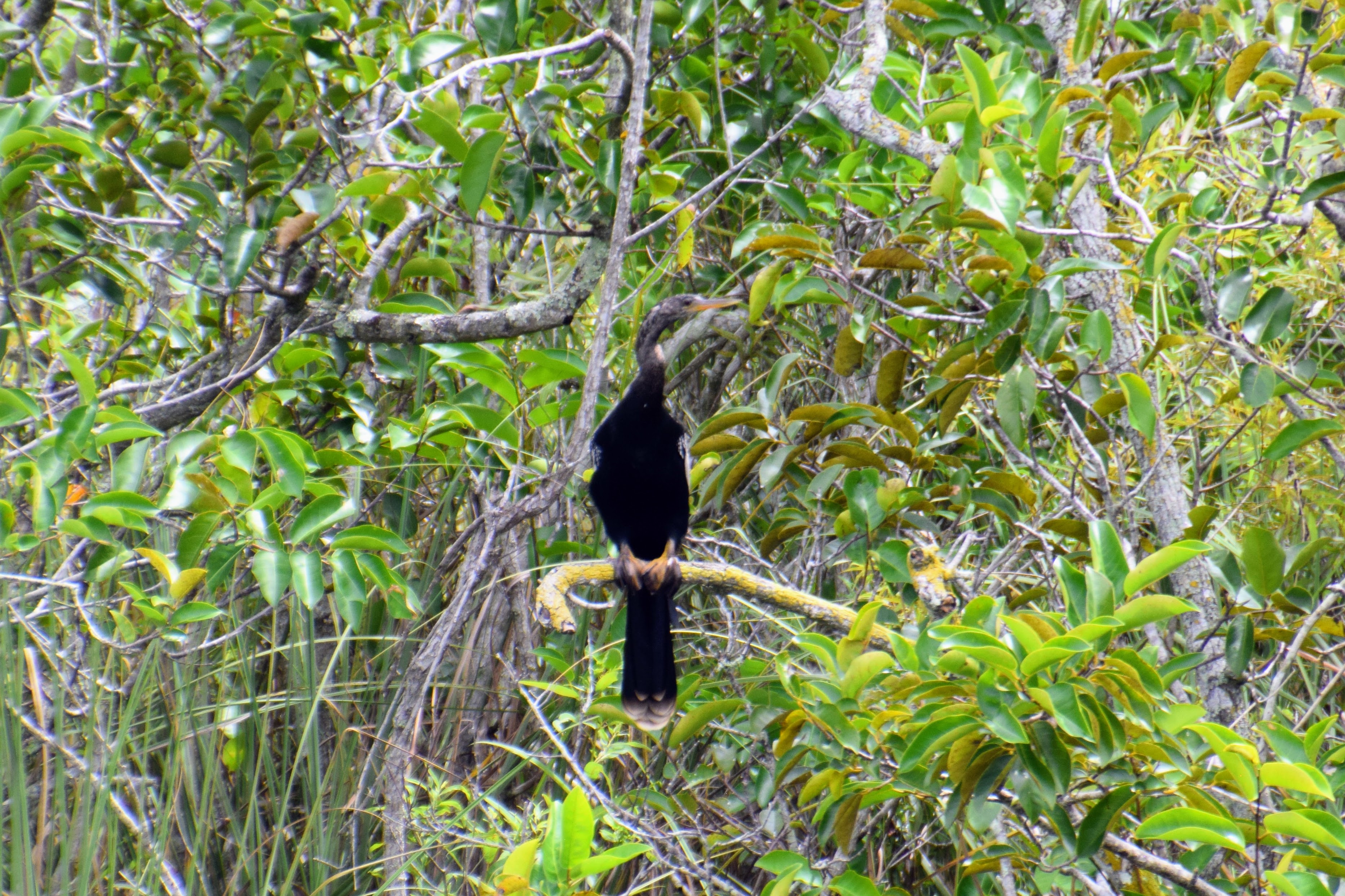
While I didn’t come at peak Anhinga season, I was lucky to see a single Anhinga on the famed Anhinga Trail. I’d almost given up on seeing one, and when I was heading back to the car, there he was. This one is probably an immature male, with his baby brown head and neck starting to turn black.
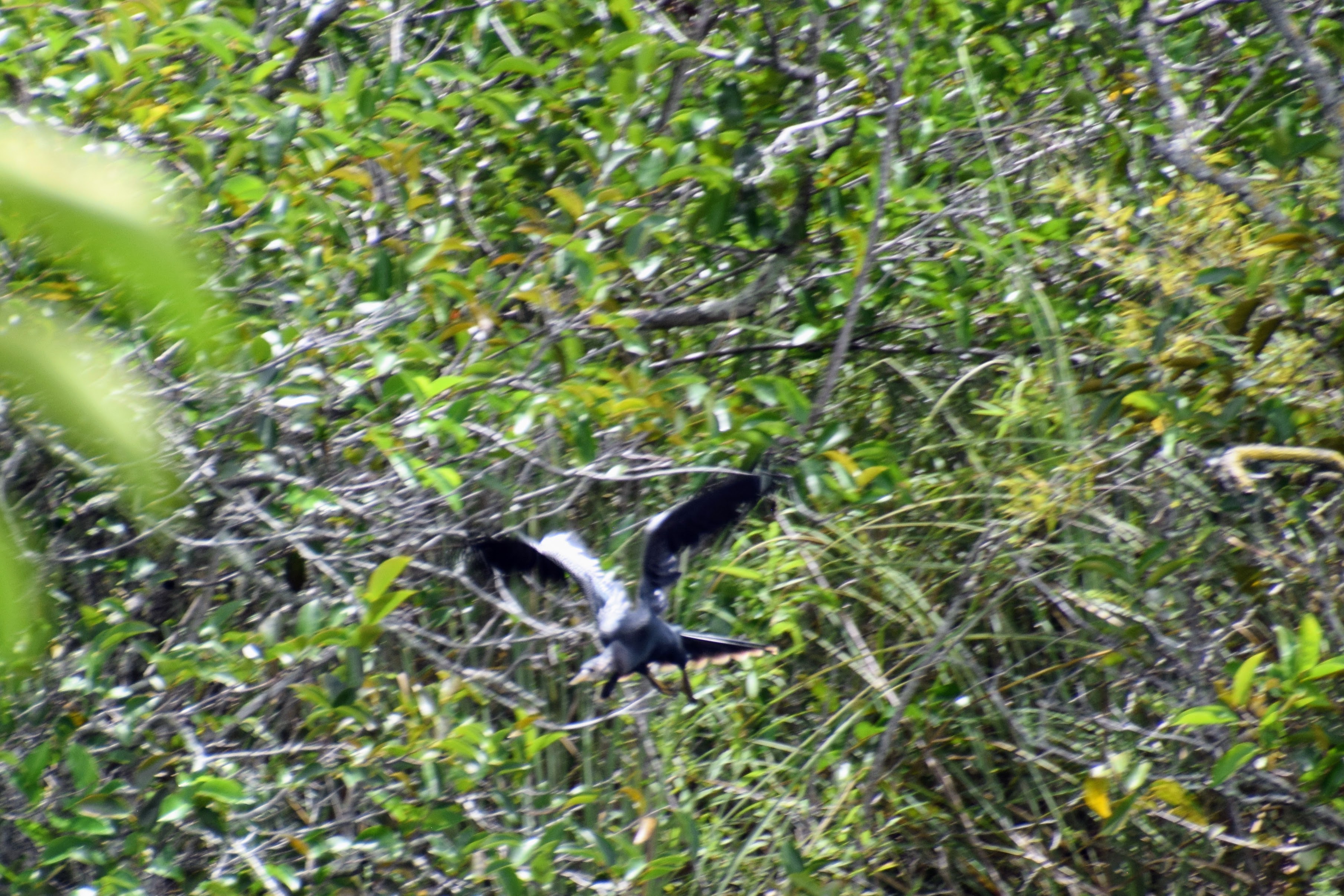
Anhingas are also known as “snake birds” because when they swim, only their long neck and head are visible above the water. They’re related to, but not the same as, cormorants, and while they do the same horaltic wing-drying pose, Anhingas are better fliers, with broader wings enabling them to soar without flapping, but worse swimmers, ambushing fish instead of chasing them. Cormorants have a hooked upper bill for grabbing fish, while anhingas have a straight bill for spearing.
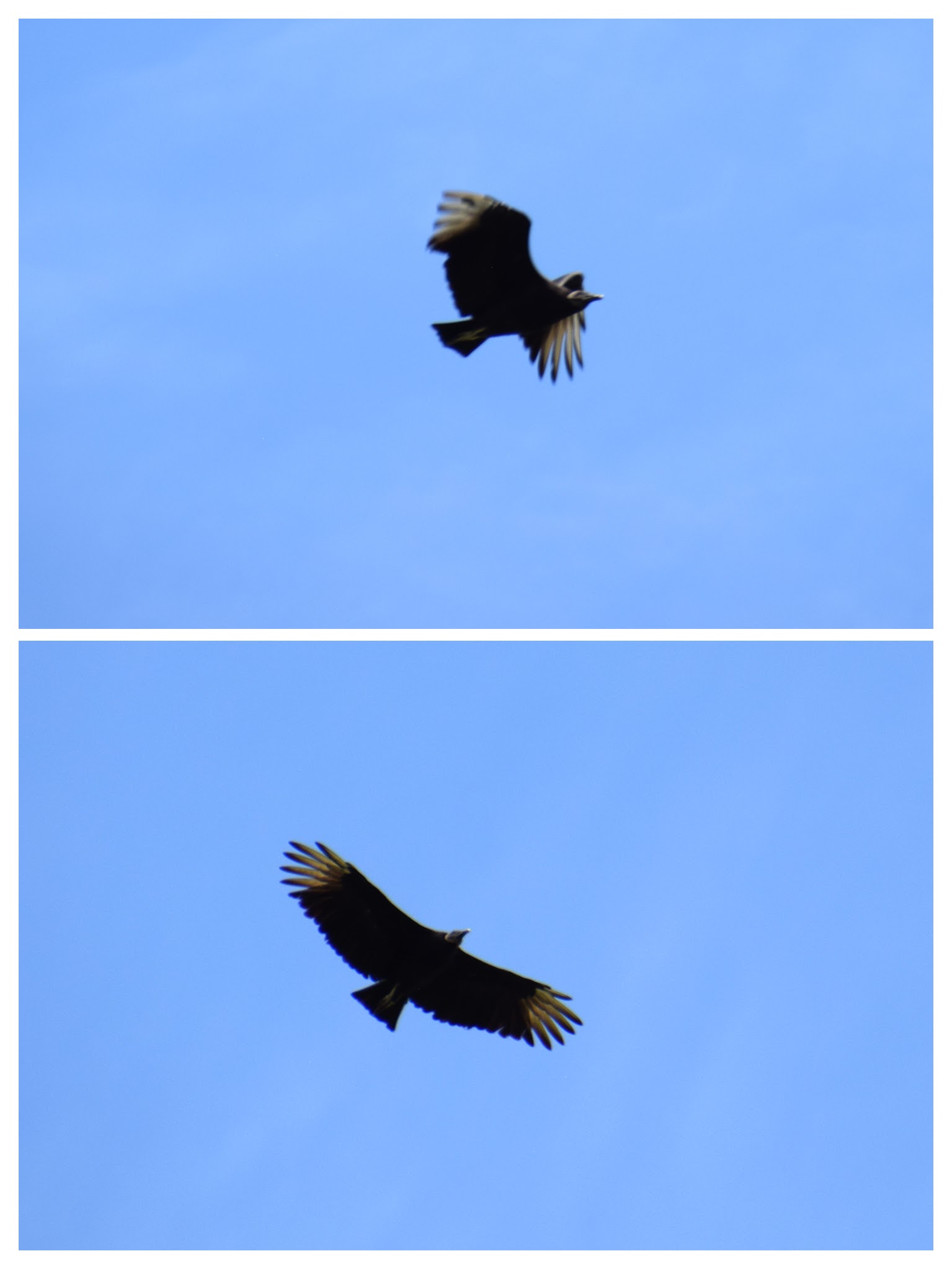
In addition to Turkey Vultures, which live all across the US, in Florida there are Black Vultures, which look similar but they have larger heads with bald, black skin. They don’t have as good a sense of smell as Turkey Vultures, and are known to follow Turkey Vultures around to locate a carcass.

There were lots of Black Vultures riding thermals above the river of grass. They never descended close enough for me to get a good photo, though. Fun fact: a group of birds circling on a thermal like this is called a “kettle”.
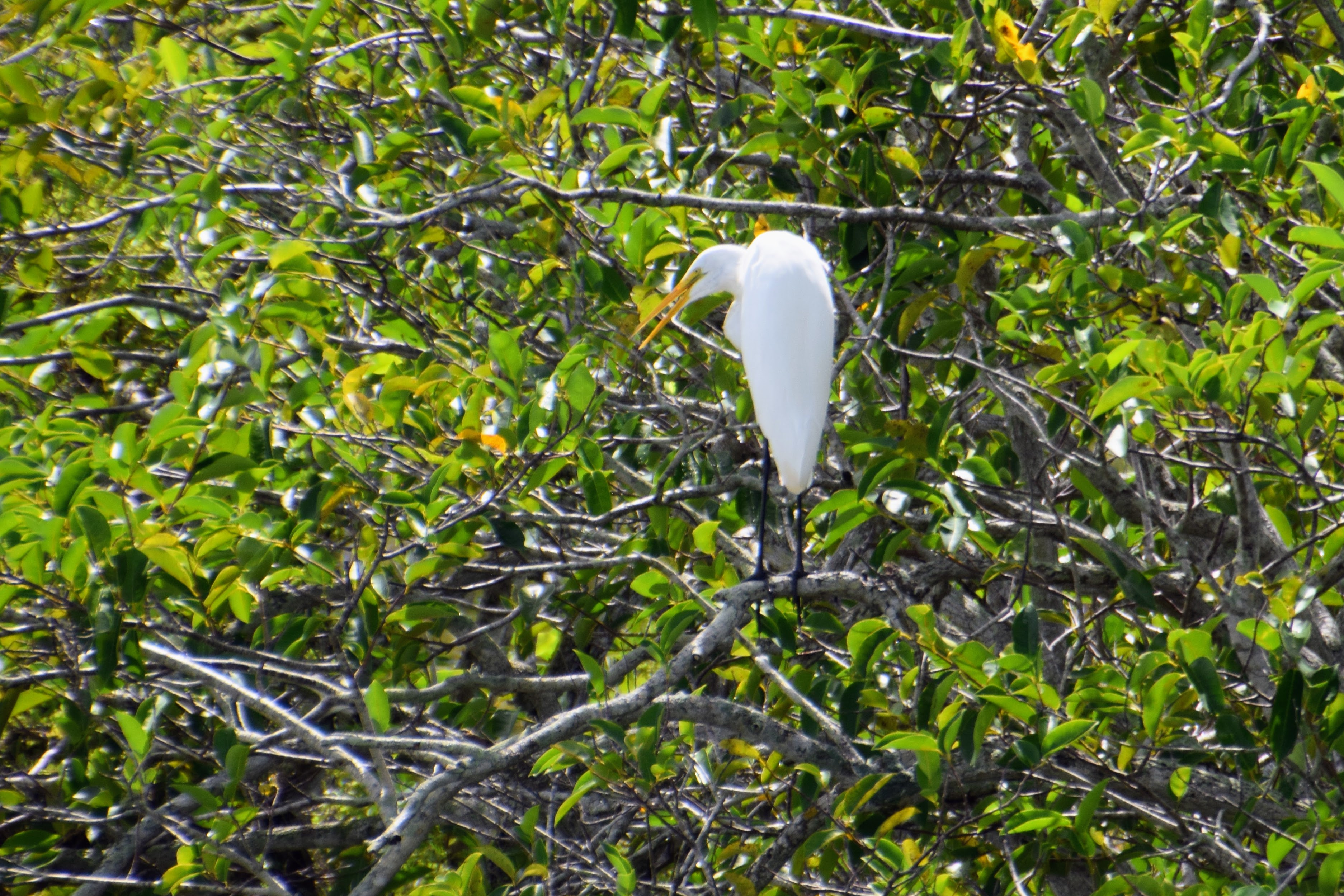
We have Great Egrets in California too. This one was standing on a mangrove above the river of grass.

There weren’t supposed to be ravens in Florida according to Merlin (the birding app), only fish crows. But this was an unmistakable Common Raven couple: large-bodied and making a deep croak sound instead of the Fish Crow’s nasally “keh”. I think they were nesting in this tree, because they cawed aggressively at me when I approached to take this photo.
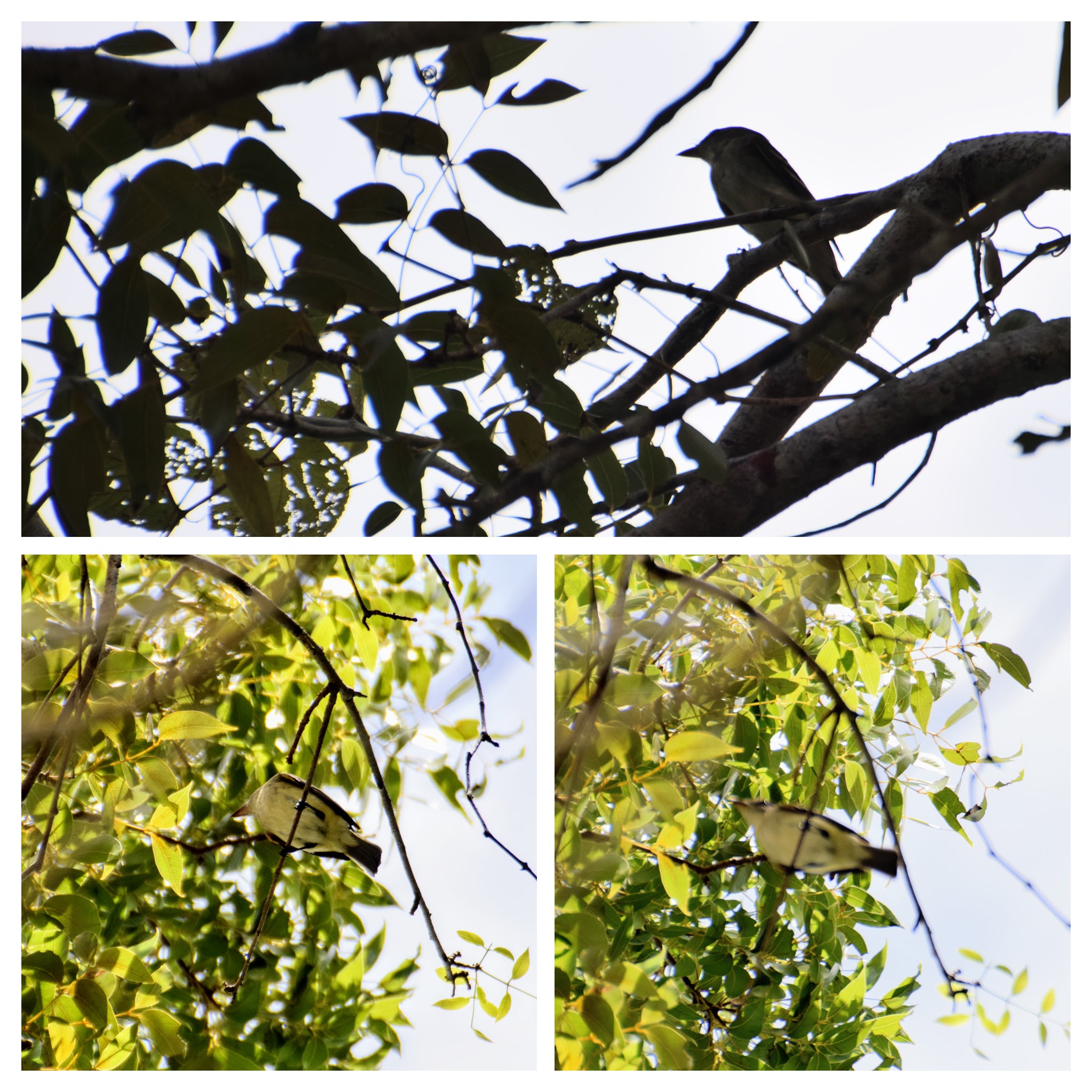
This, I believe, is an Eastern Wood-Pewee, a smaller and more elusive relative of California’s Black Phoebe, which you’ve maybe seen in my photography posts before. Pewees are so named because their call sounds like “pe-WEE”, and they’re much more often heard than seen. I heard many of them in Boston, but this is the first time I’ve been able to get even a crappy picture.
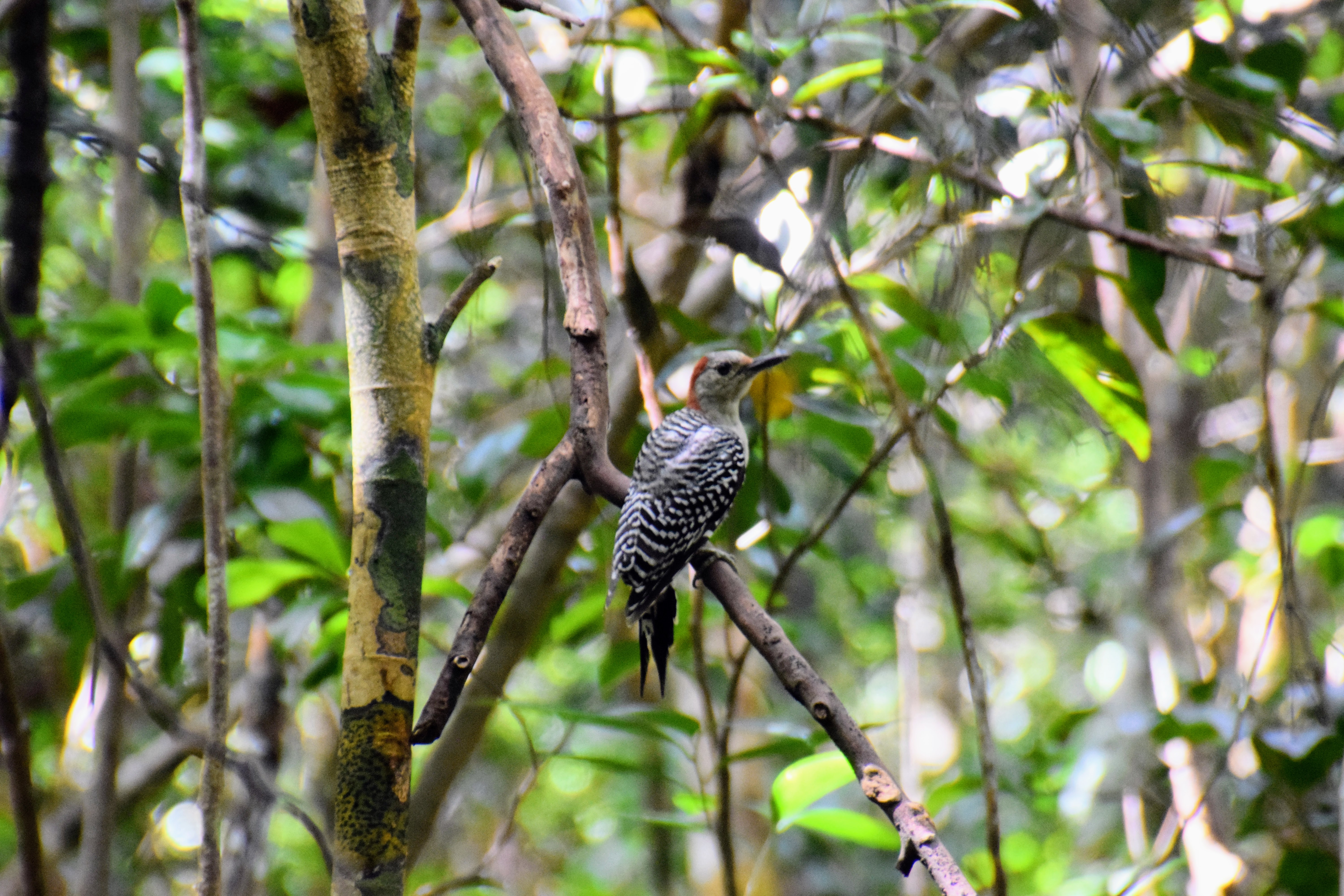
This is a Red-Bellied Woodpecker I spotted along the Gumbo Limbo rainforest trail. You can tell she’s female because the red part doesn’t cover the top of the head.
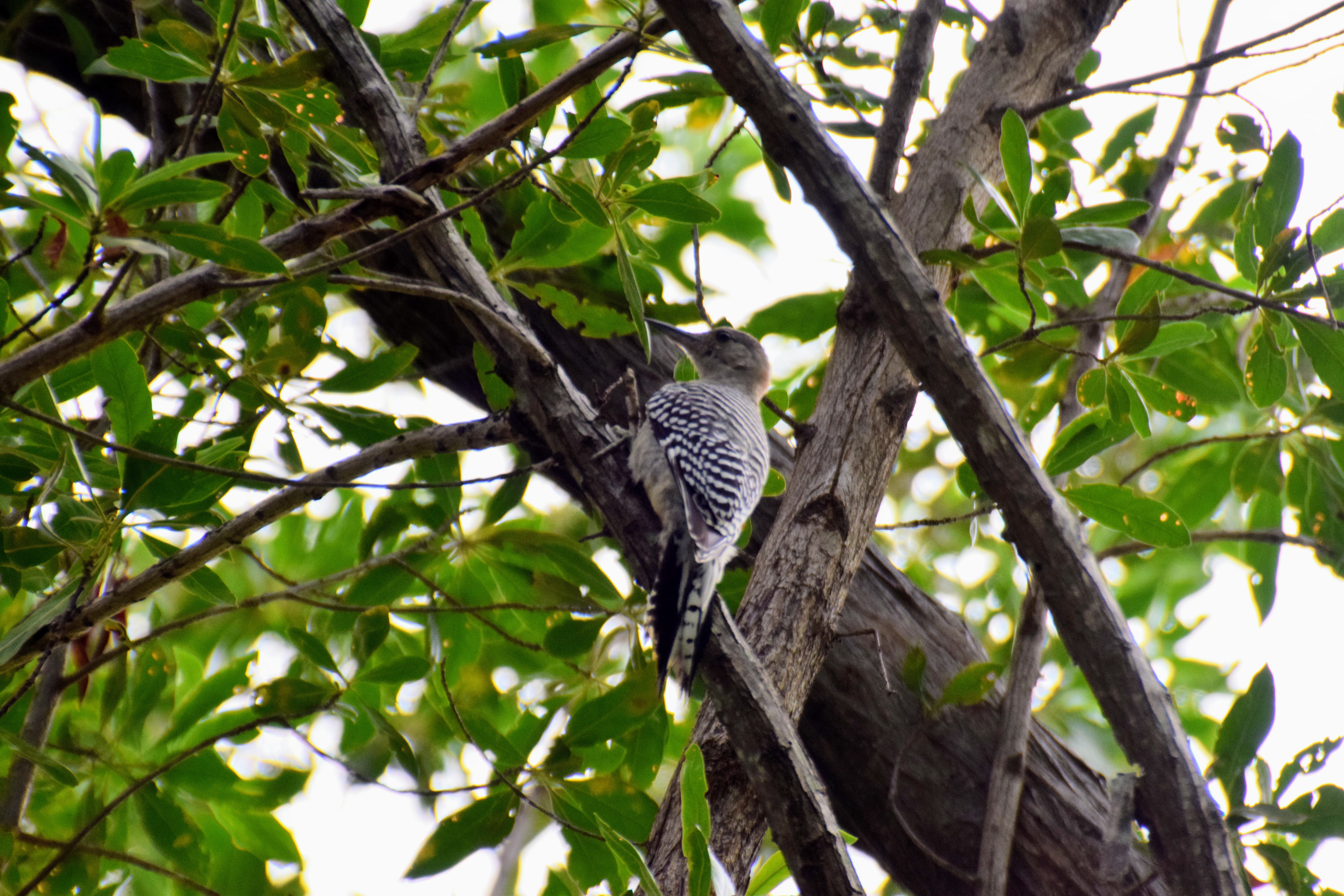
This one is a juvenile, who hasn’t developed any red on its head yet. I also spotted the much smaller Downy Woodpecker on the Long Pine trail, but I didn’t have my camera with me because of the threat of rain.
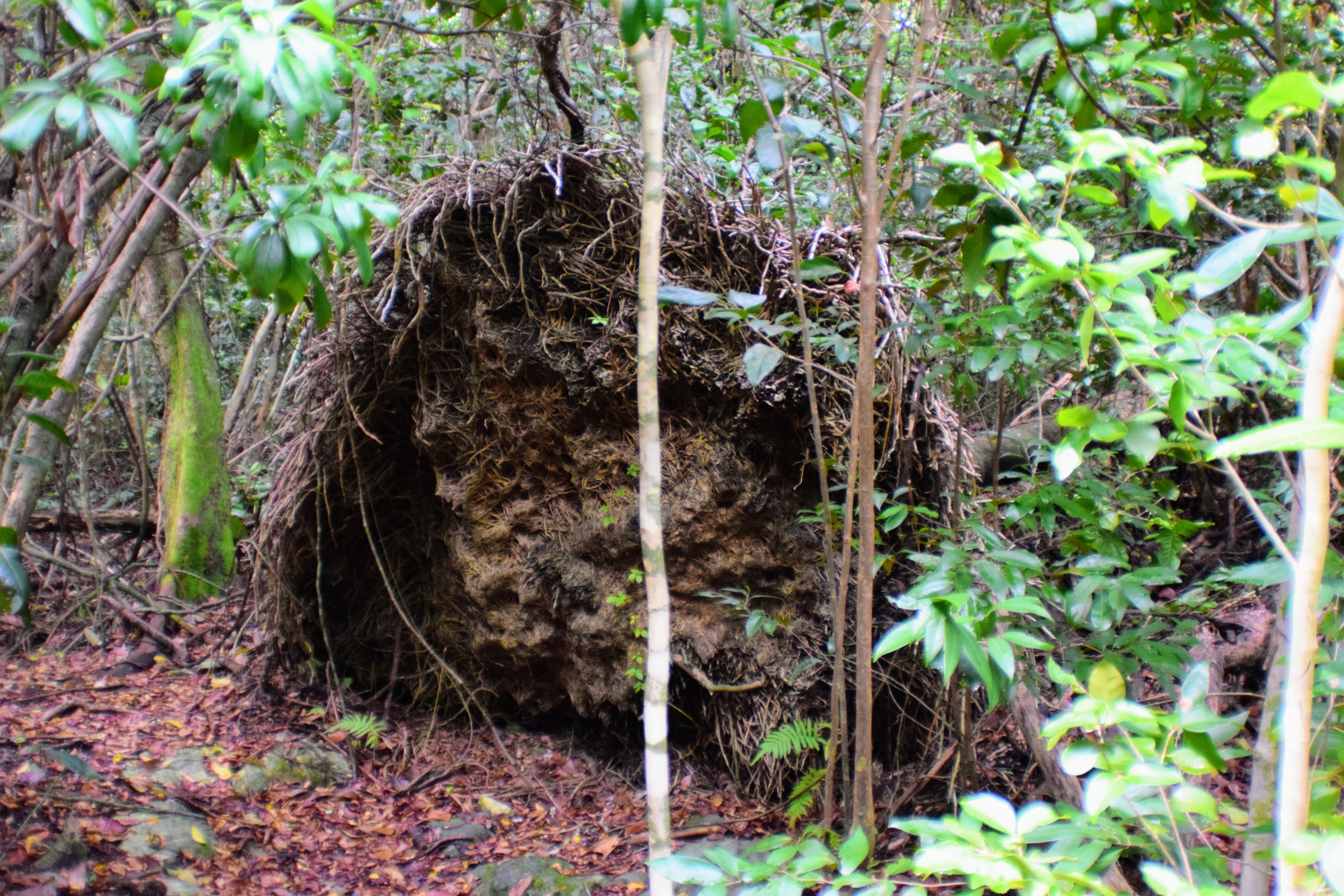
There were quite a few trees that had been knocked down by Hurricane Andrew back in 1992, but survived since some of the roots remained rooted. The trees were putting out new growth from all over, and other plants were growing in the dirt stuck to the roots.
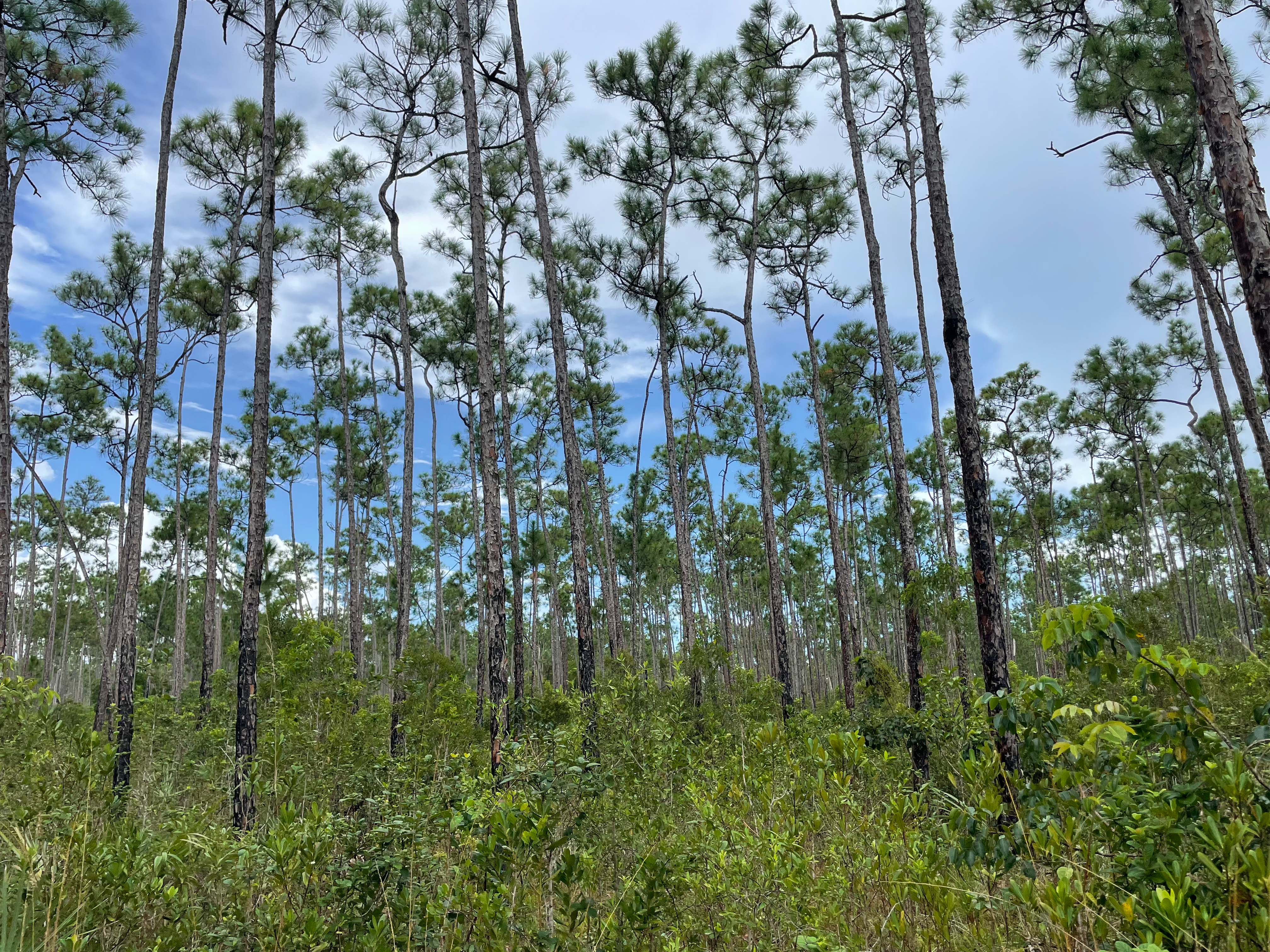
These are the “long pines”, an unexpected biome that just looked like this in all directions, totally flat. It was home to a lot of woodpeckers and gnatcatchers. It was cool, but it wasn’t such a good place for hiking, as it was flat, muddy, and uniform for miles.
Birds on the Beach
I took these photos on the beach at Virginia Key, the closest key to Miami.
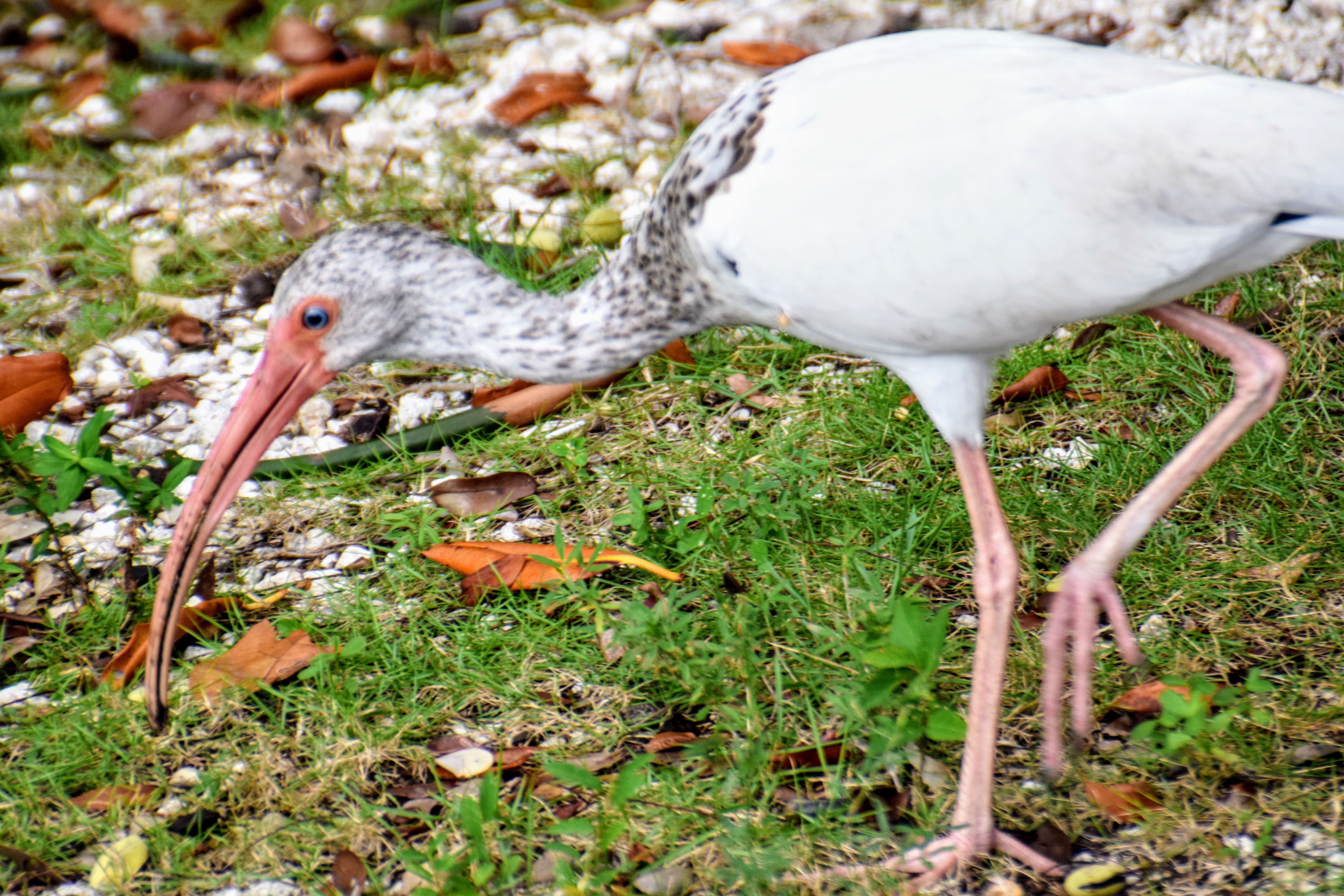
When I first arrived, I was really excited to see the American White Ibis, since I’ve never seen any kind of ibis before. However, in Miami they’re like chickens–ubiquitous and pesty. By the end of the trip I was shooing them away.
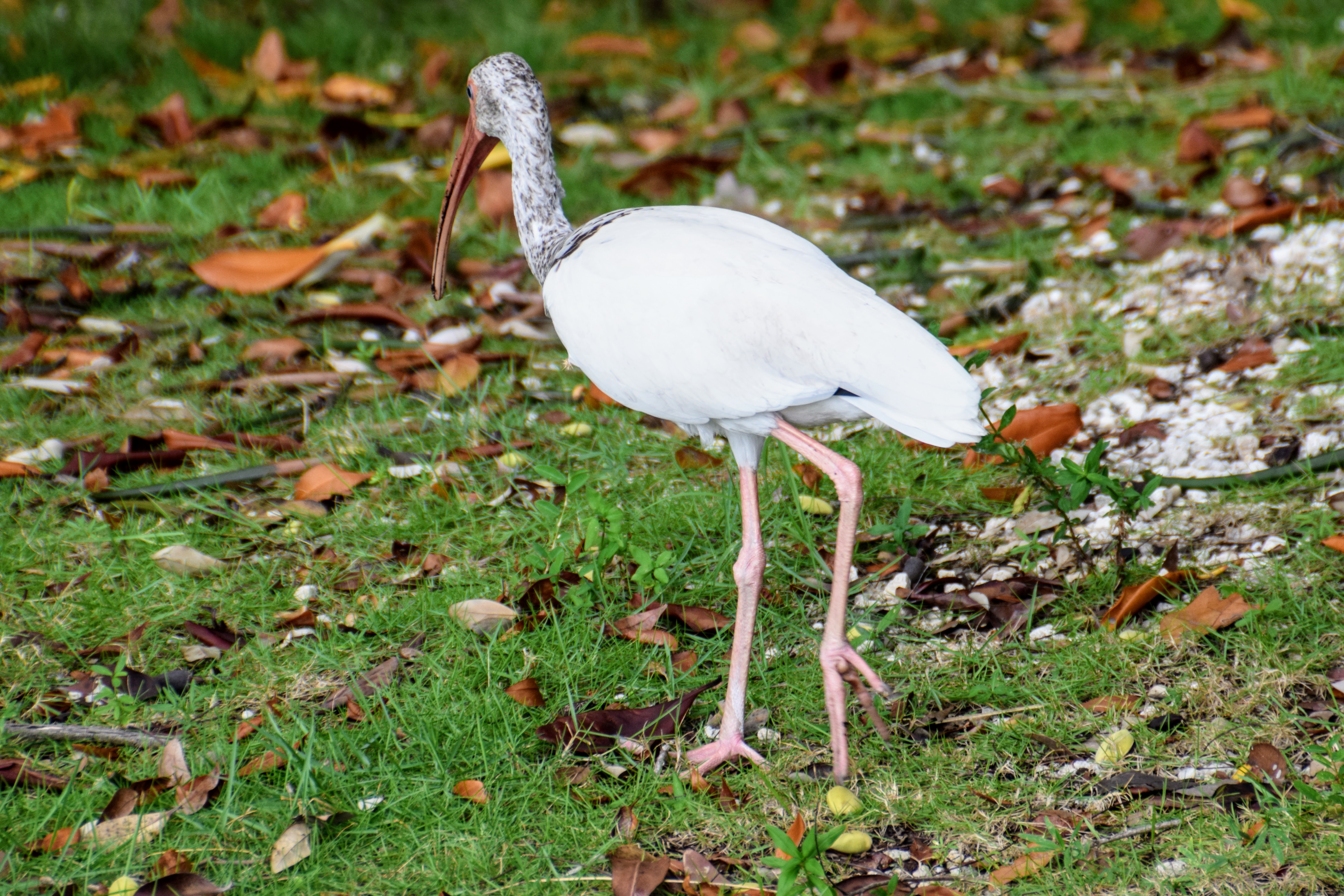
Look at his pretty blue eye! Ibises use their distinctive beaks to probe for invertebrates in the mud. This one isn’t quite mature, with some of his brown plumage left on his head and neck. As they get older, they become more and more white.
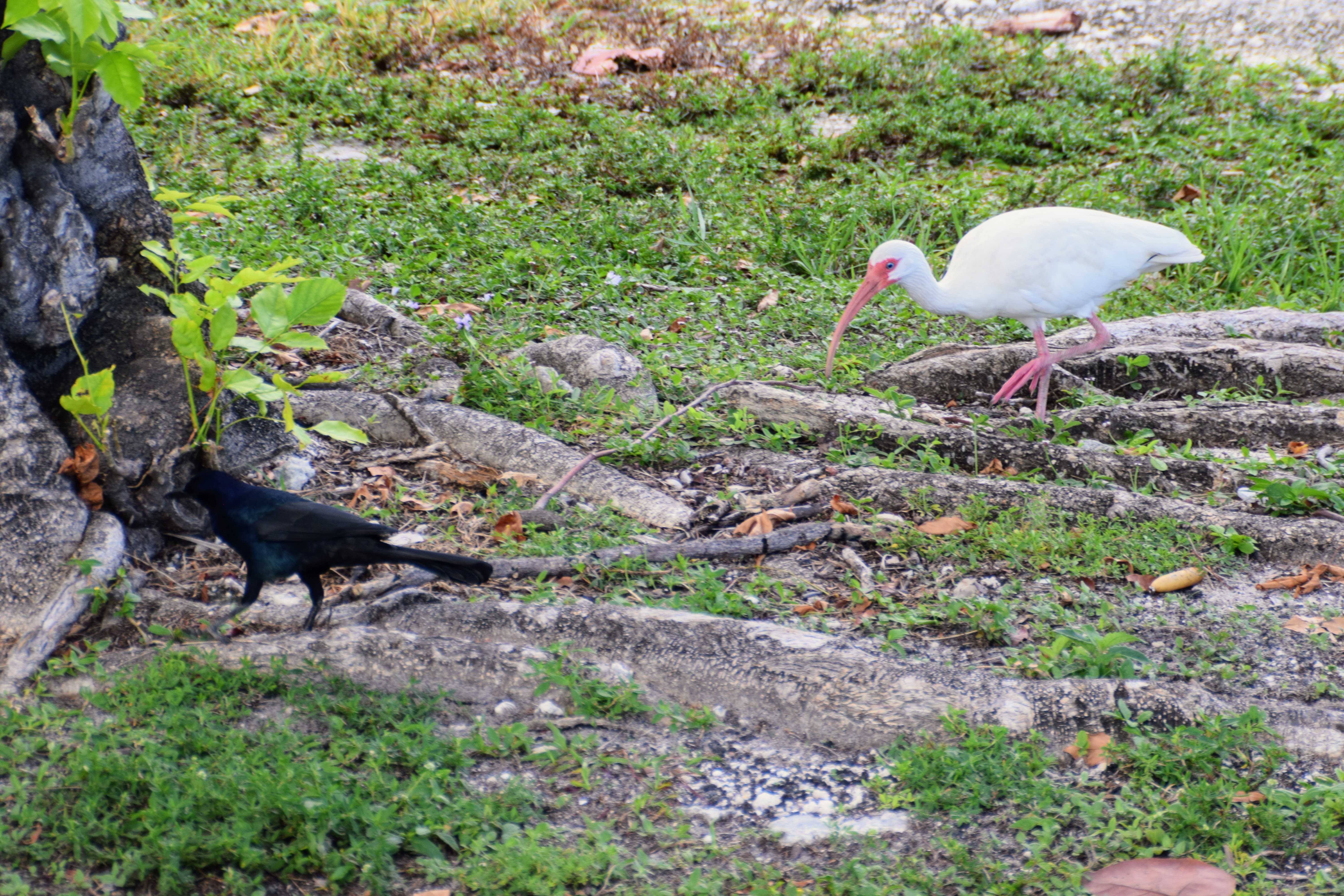
Another very common bird in Florida is the Boat-Tailed Grackle. Now I’ve taken a photo of every kind of grackle in the continental US: the Common Grackle (New York), the Great-Tailed Grackle (California), and the Boat-Tailed Grackle.
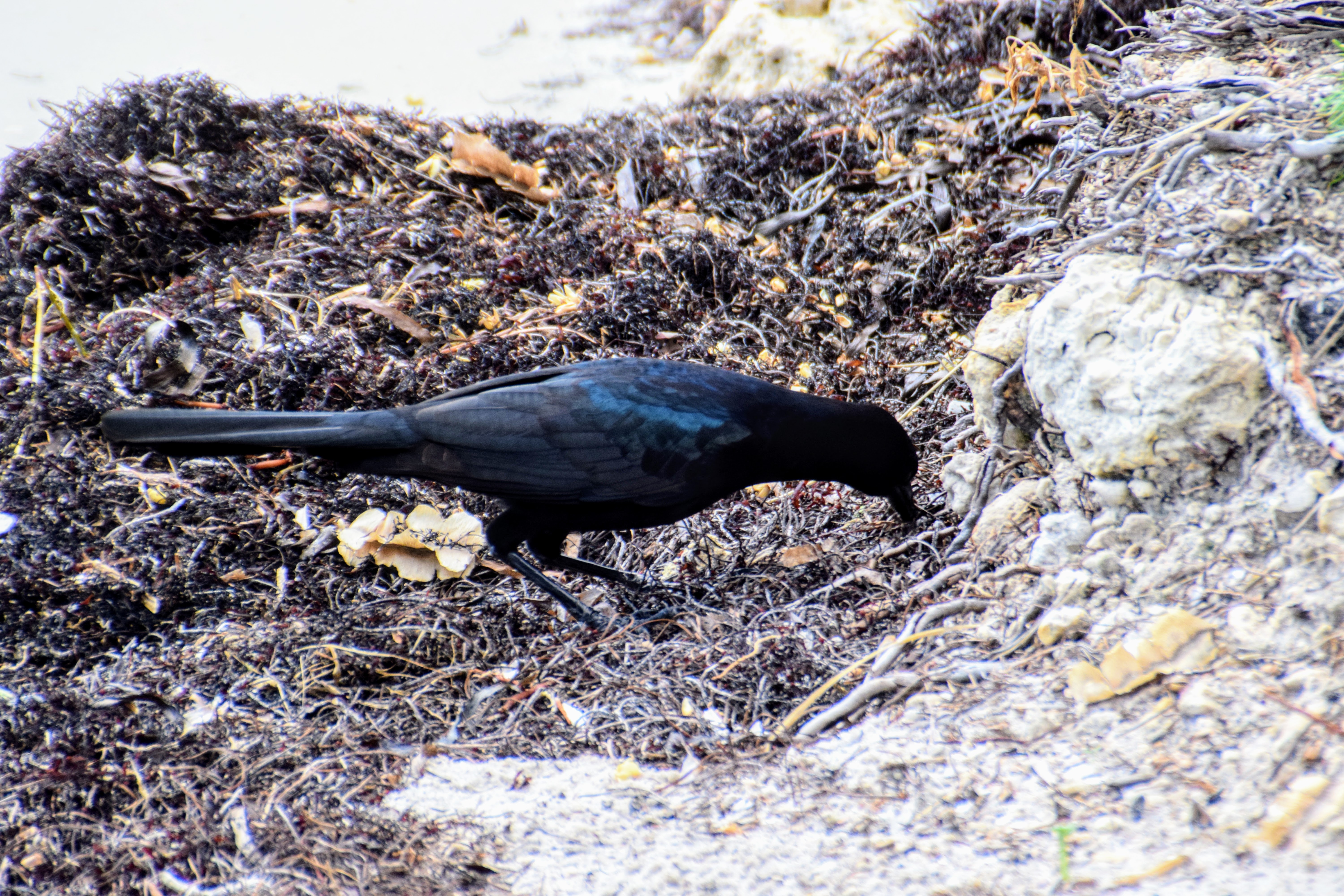
This one is probing in some seaweed along the beach. I like his iridescent blue back.
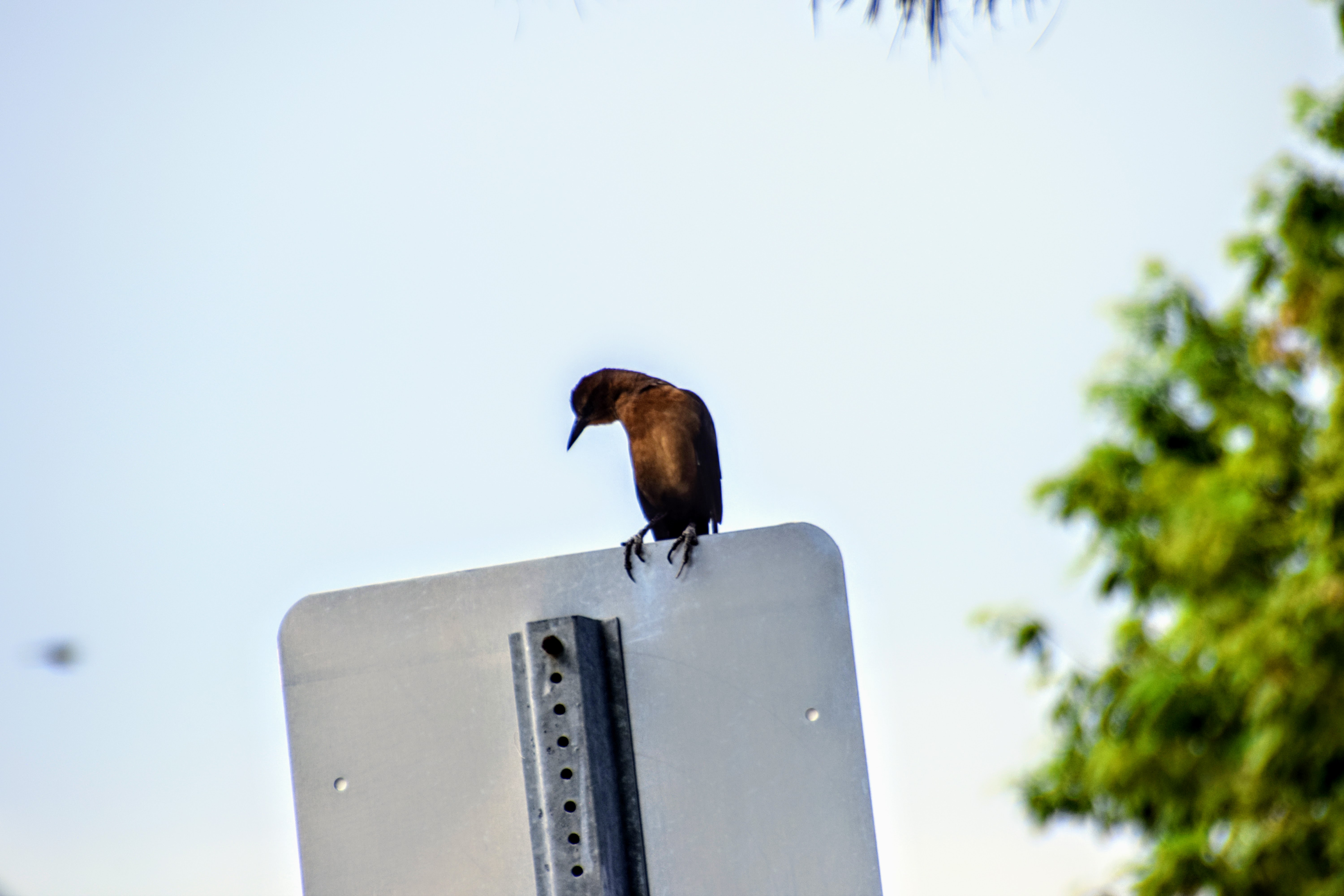
Female grackles are brown and like to look straight at me for some reason.

Instead of the Western Gulls that are common in California, in Florida there was the smaller, black-headed Laughing Gull, which, true to its name, sometimes makes sounds like a hyena. Since it’s not breeding season right now, their black heads have worn off to just a salt-and-pepper look with a black ear spot.
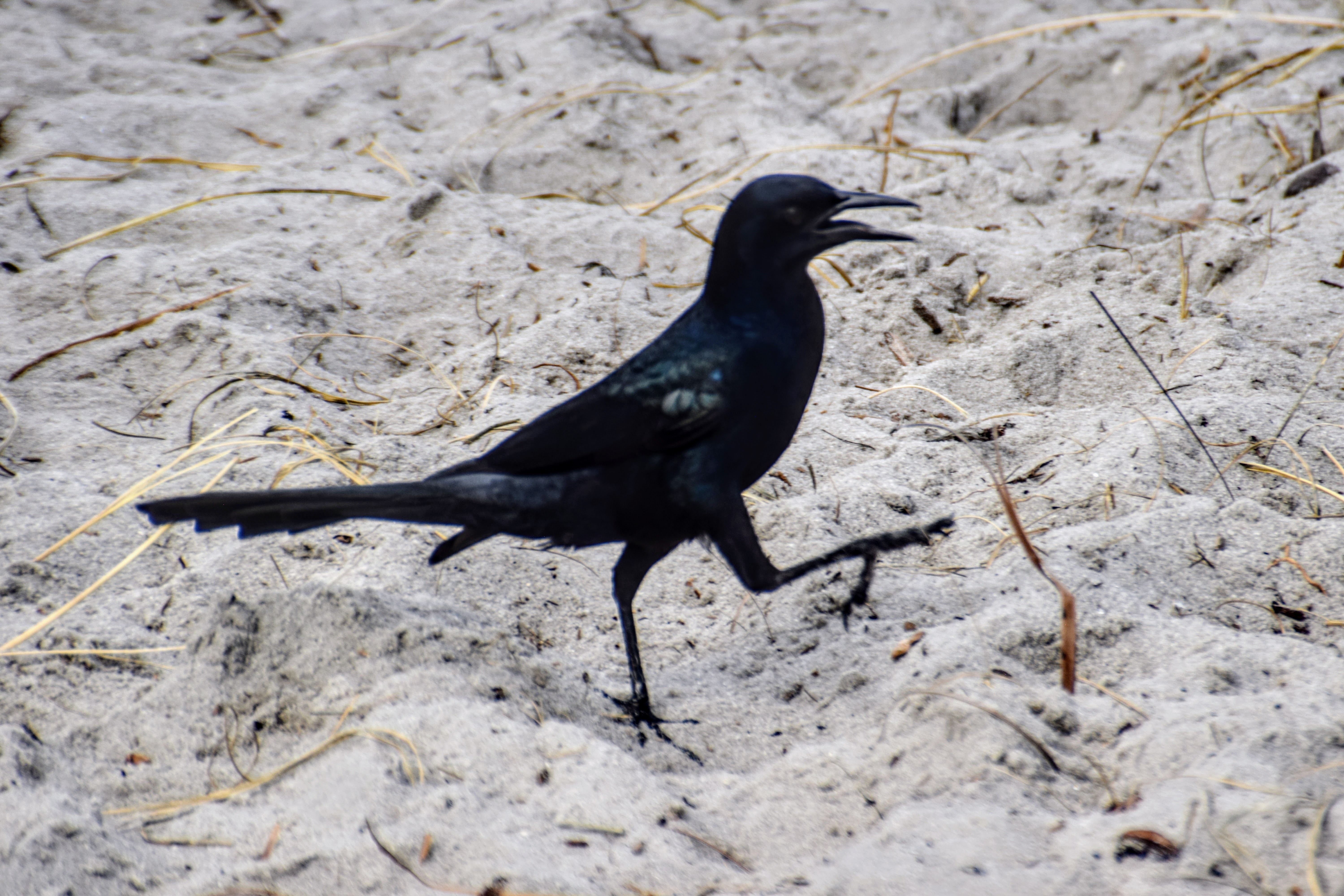
“Durrr, this is what you look like.”
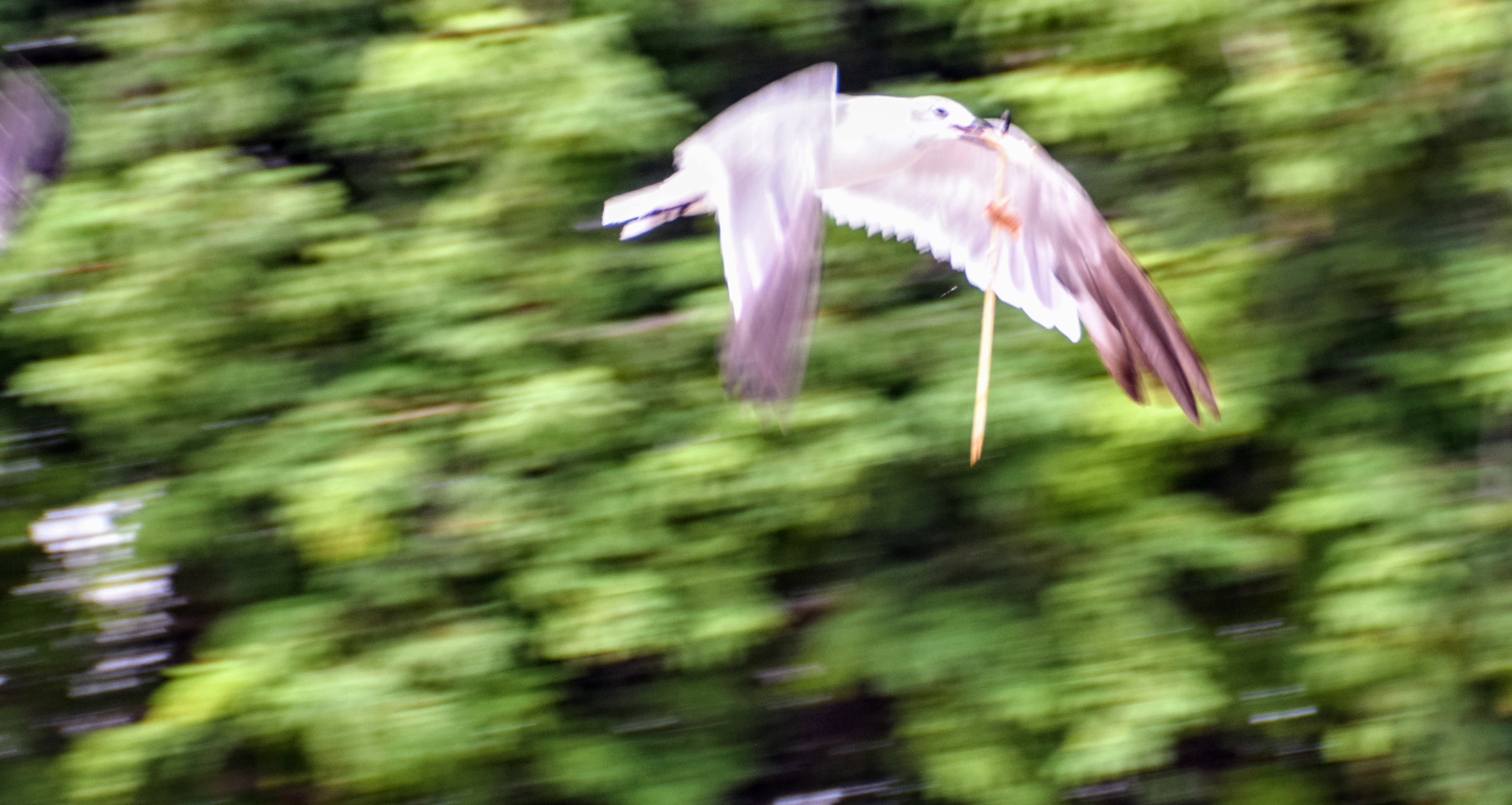
This gull found a discarded shish kebab, and was being chased by grackles, crows, and other gulls.
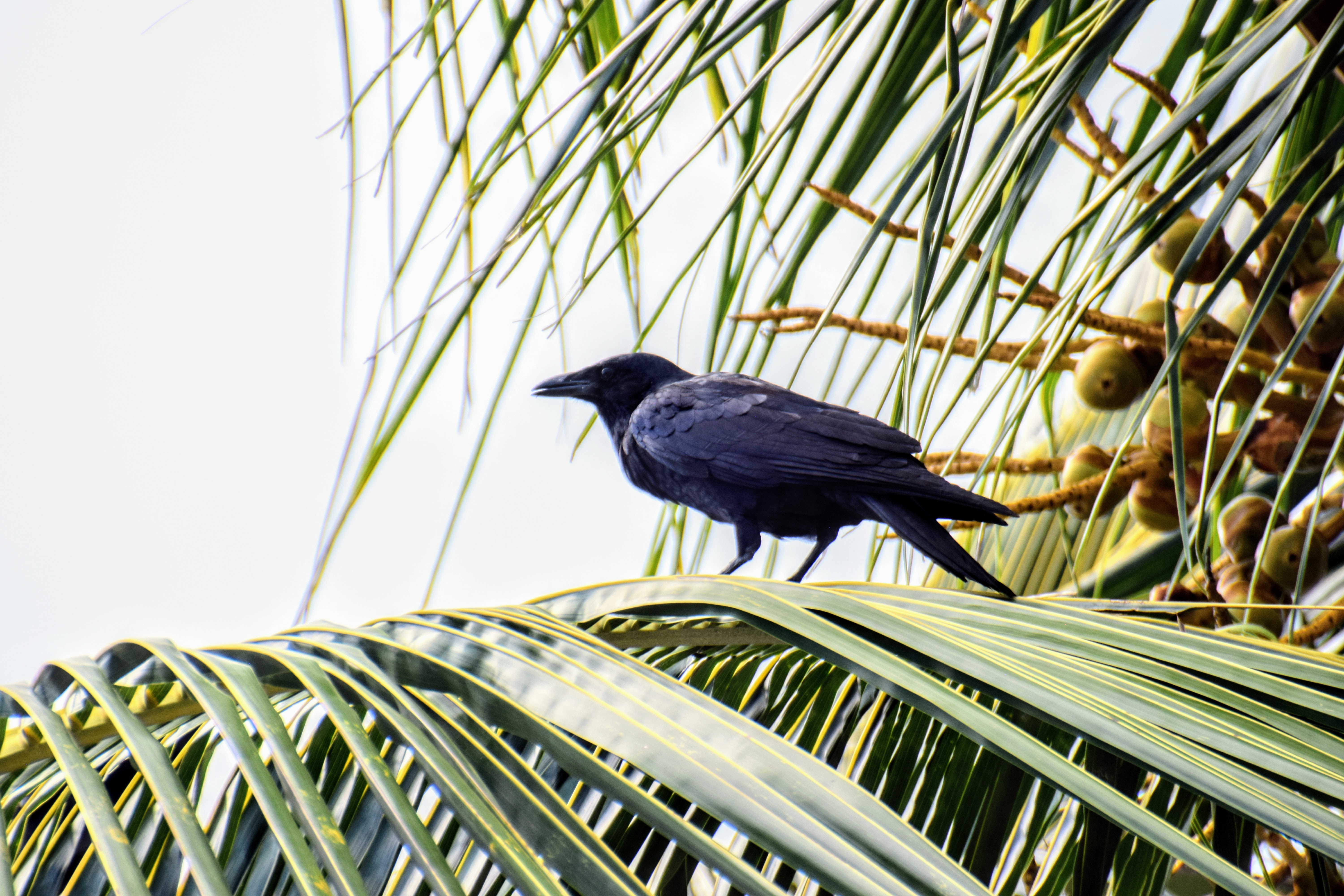
Some of the Fish Crows I saw were indistinguishable in appearance from the American crows common everywhere else in the US. But their voices were very distinctive, going “keh” instead of “caw”.
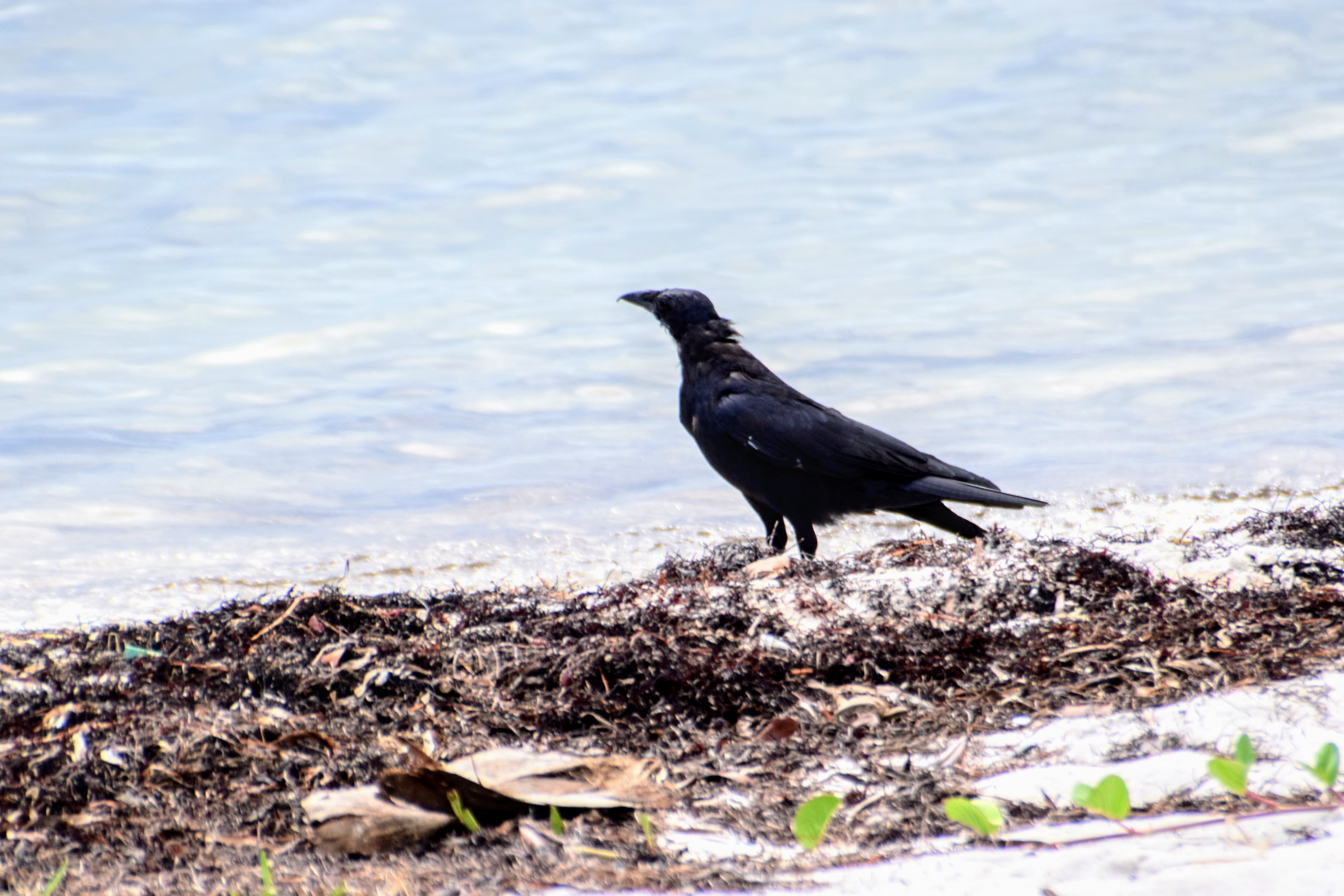
They were also often more scraggly-looking than the crows I’m used to. Either he’s wet, or being a Fish Crow is hard.

They probed among the seaweed, looking for crabs and other invertebrates. They seem less synanthropic than American Crows.
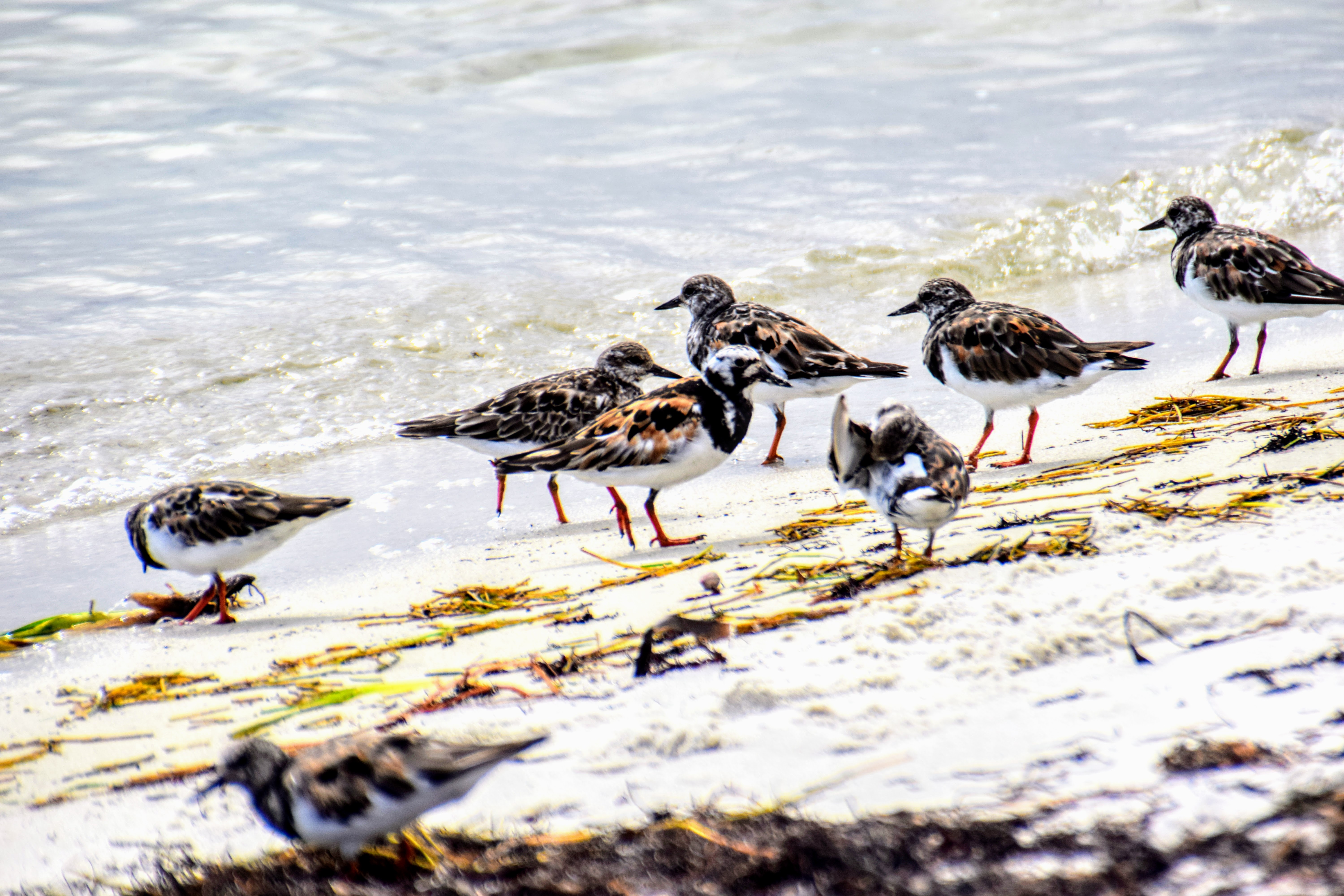
These shorebirds are called Ruddy Turnstones, since they forage by flipping over rocks to uncover invertebrates. The one in the center is a male.
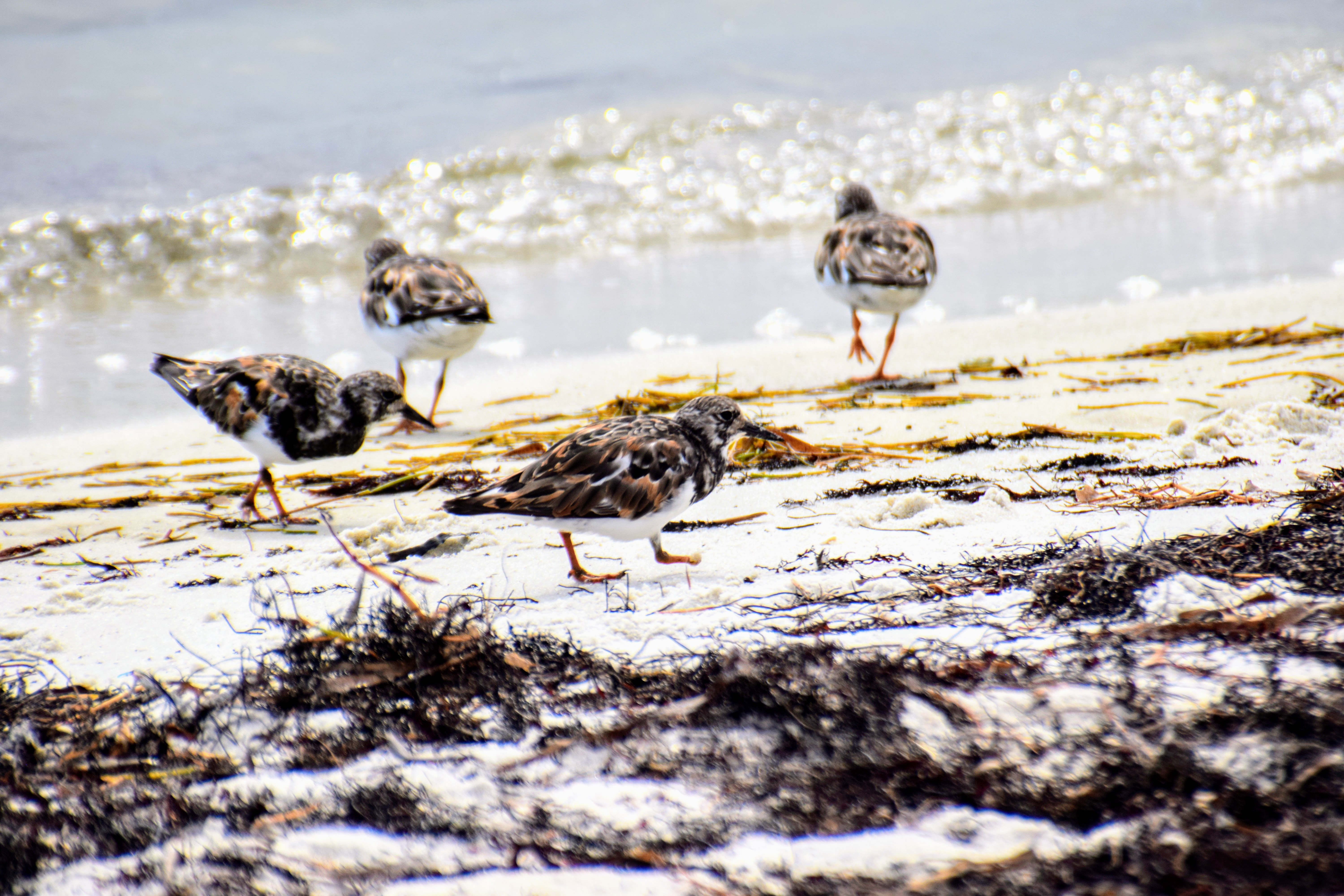
Ruddy Turnstones are found along coasts worldwide, and migrate great distances from the arctic, where they breed, to the rest of the world, where they spend the winter. I read somewhere once that there was an experiment that showed that these birds don’t know why they turn stones, they just feel compelled to–something like, the birds saw the researchers placing the stones and knew there was never anything underneath, but flipped them anyway. But now I can’t find the source. Maybe they just enjoy flipping stones for its own sake.

I have a new second-favorite bird species: the Green Heron! These little guys were so bold and charismatic with their little mohawks, and didn’t give a crap how close they got to me. They were hopping on the rocks very confidently, almost like parkour.
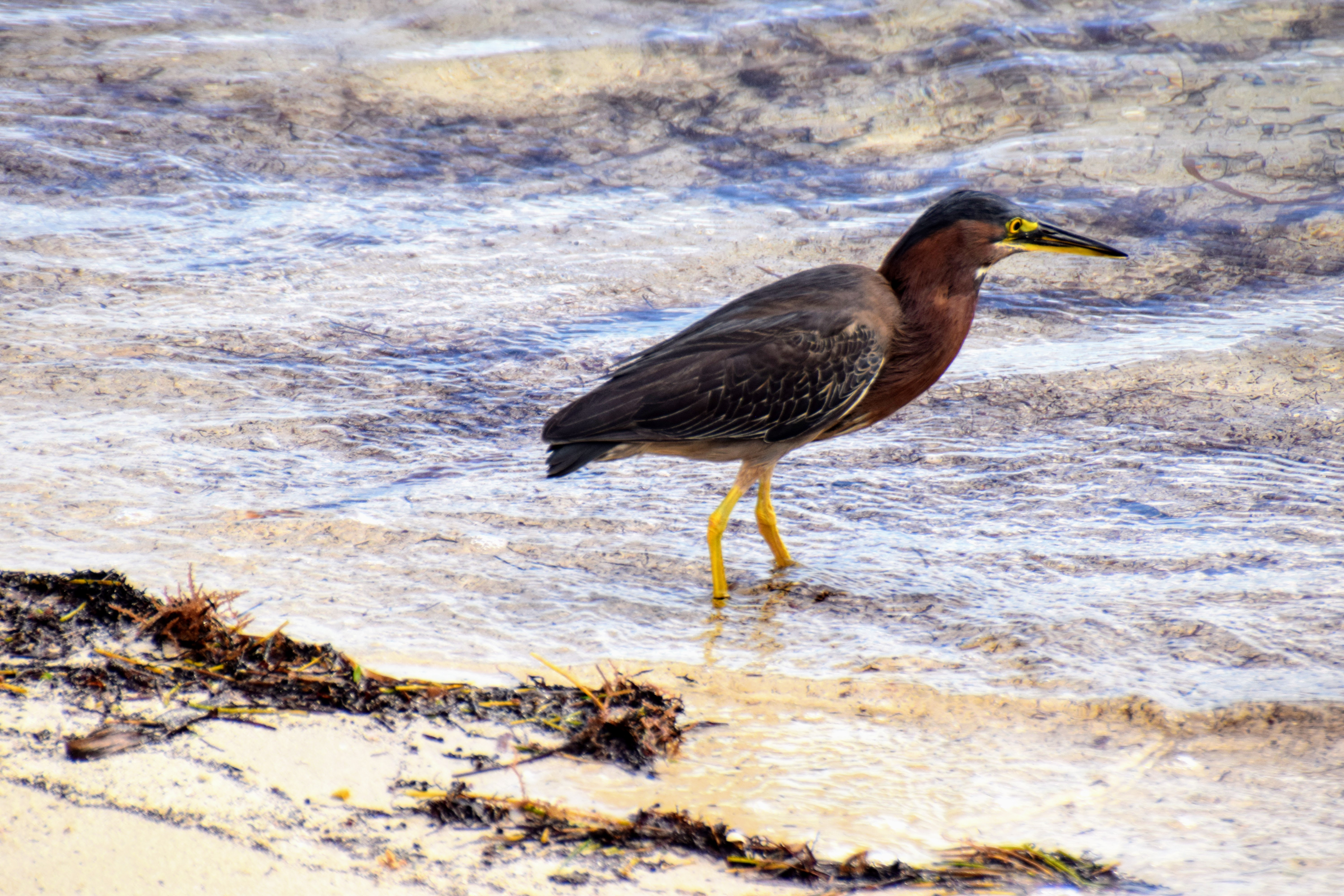
I didn’t know that herons could drink seawater, but this one was casually doing that.
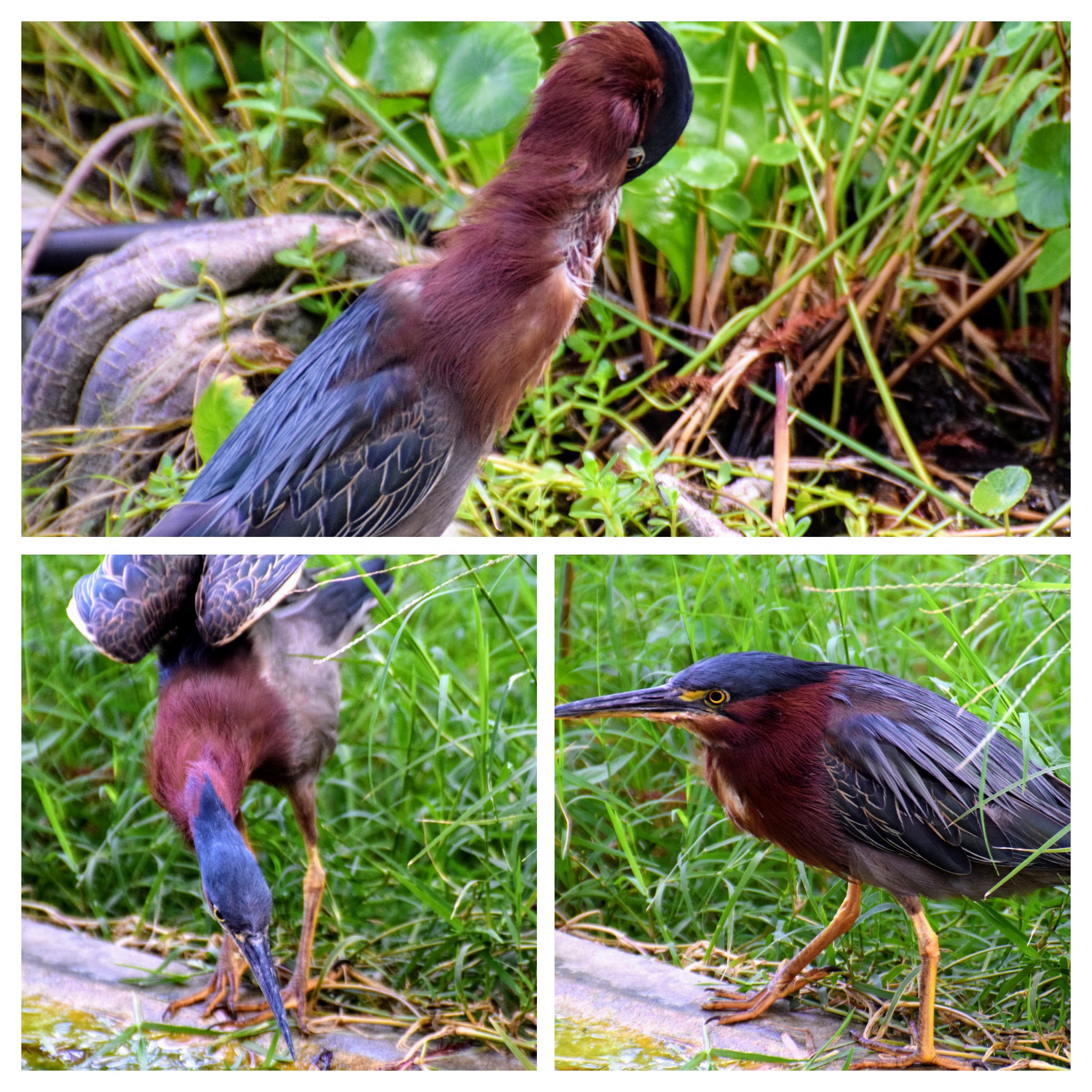
Look at that NECK! Birds can basically shape-shift by changing the contour of their feathers. Also, this one had the middle toenail on his right foot ripped off, and seemed to be favoring the other foot.
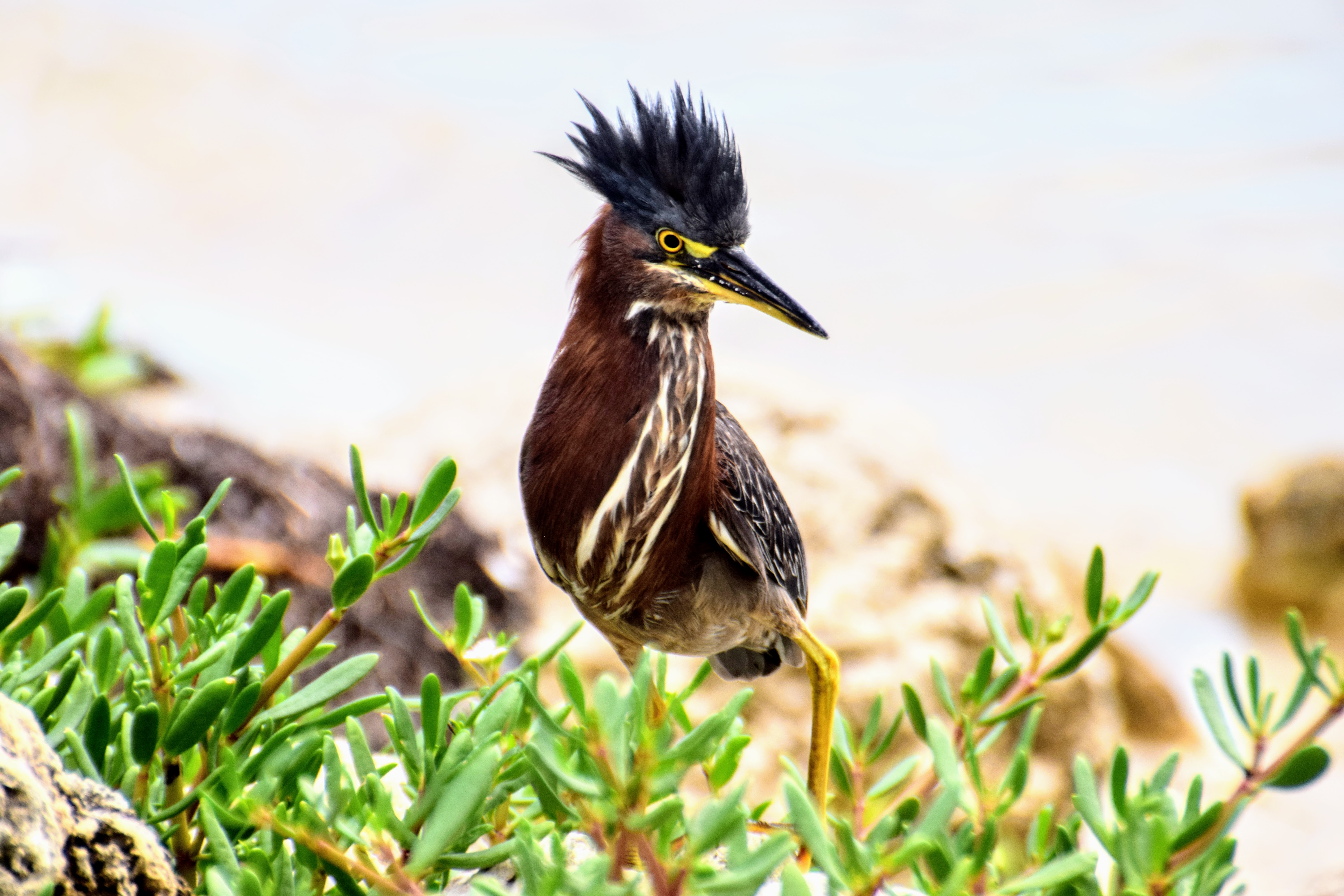
Green Herons are one of the few non-parrot, non-corvid birds known to use tools. They often use insects, bread, or other food as bait to lure fish to catch. This is the behavior that they gave to Troodon in Amazing Dinoworld (2019).
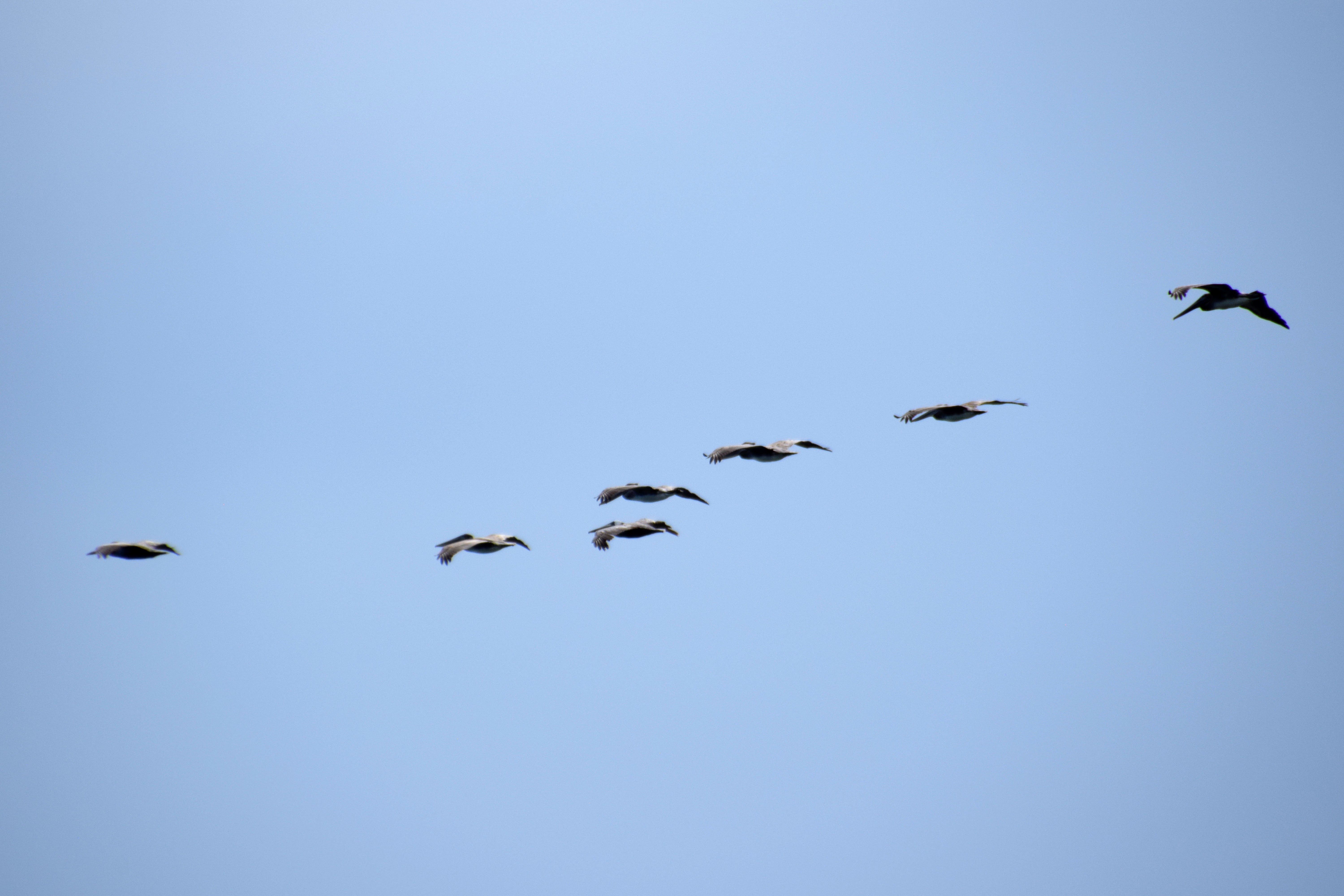
These are some Brown Pelicans. We have those in California.
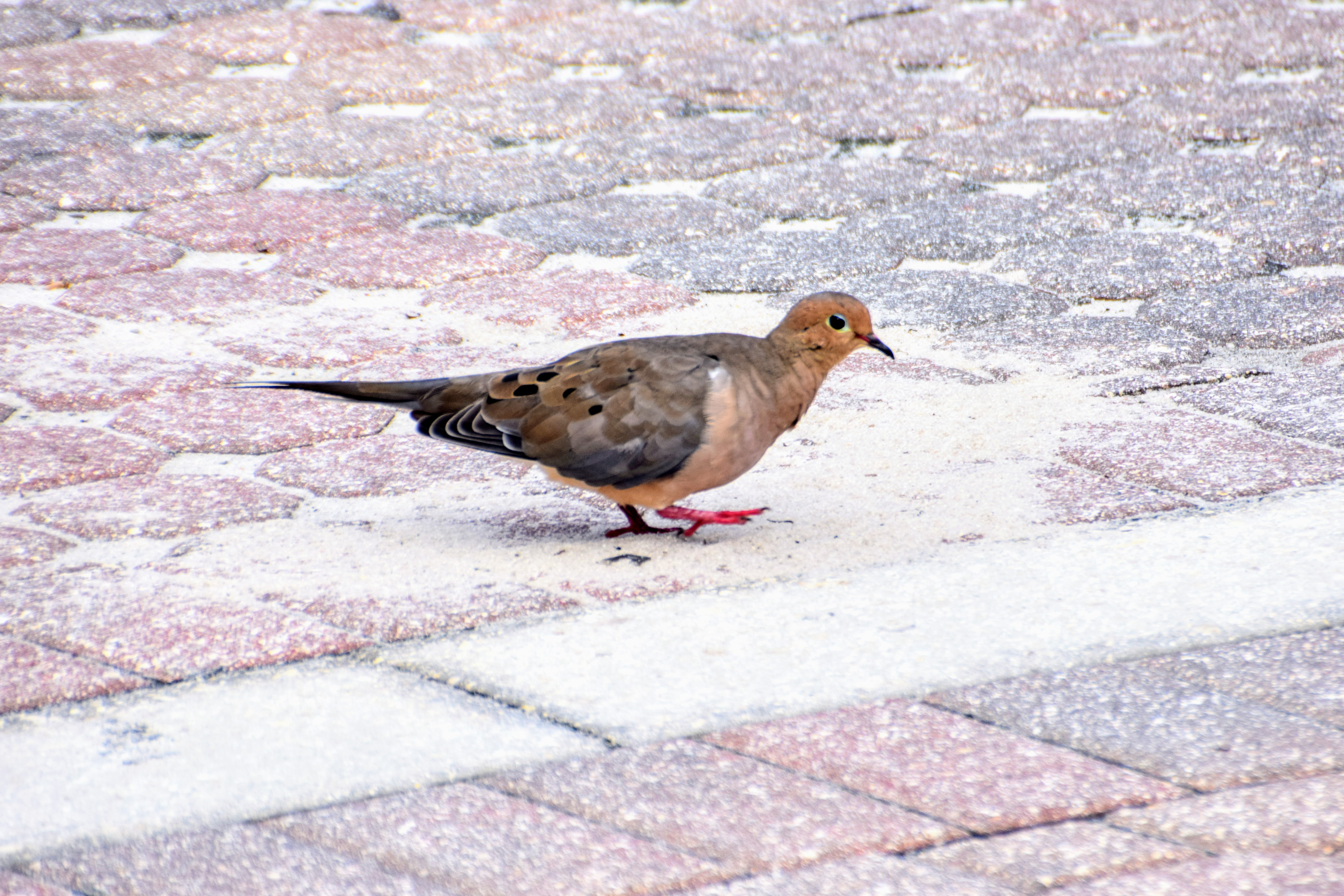
This is a Mourning Dove, looking very annoyed. We have Mourning Doves in California too.
Birds at the Park
I took these photos at Baggs Cape State Park, which has a trail dedicated for birding. Florida’s state parks advertise themselves as “the REAL Florida”. I guess the Everglades is fake Florida? To their credit, the state park was almost ten times cheaper to enter than the national park.
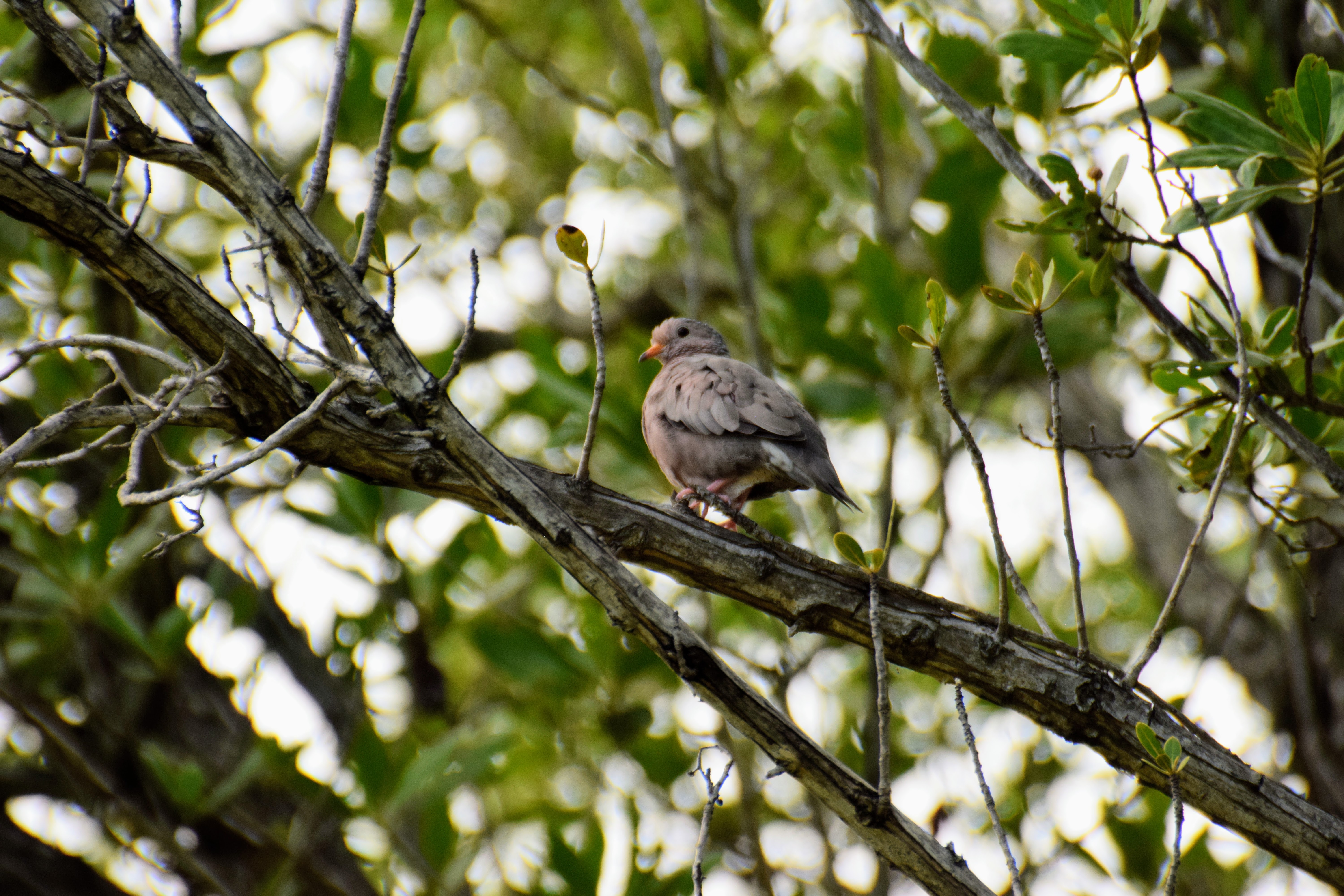
This football-shaped bird is a Common Ground Dove. Ironically, it’s in a tree, whereas the Mourning Dove I showed you earlier, AND the Eurasian Collared Dove that’s coming later, were on the ground. This one looks much friendlier than the annoyed Mourning Dove.
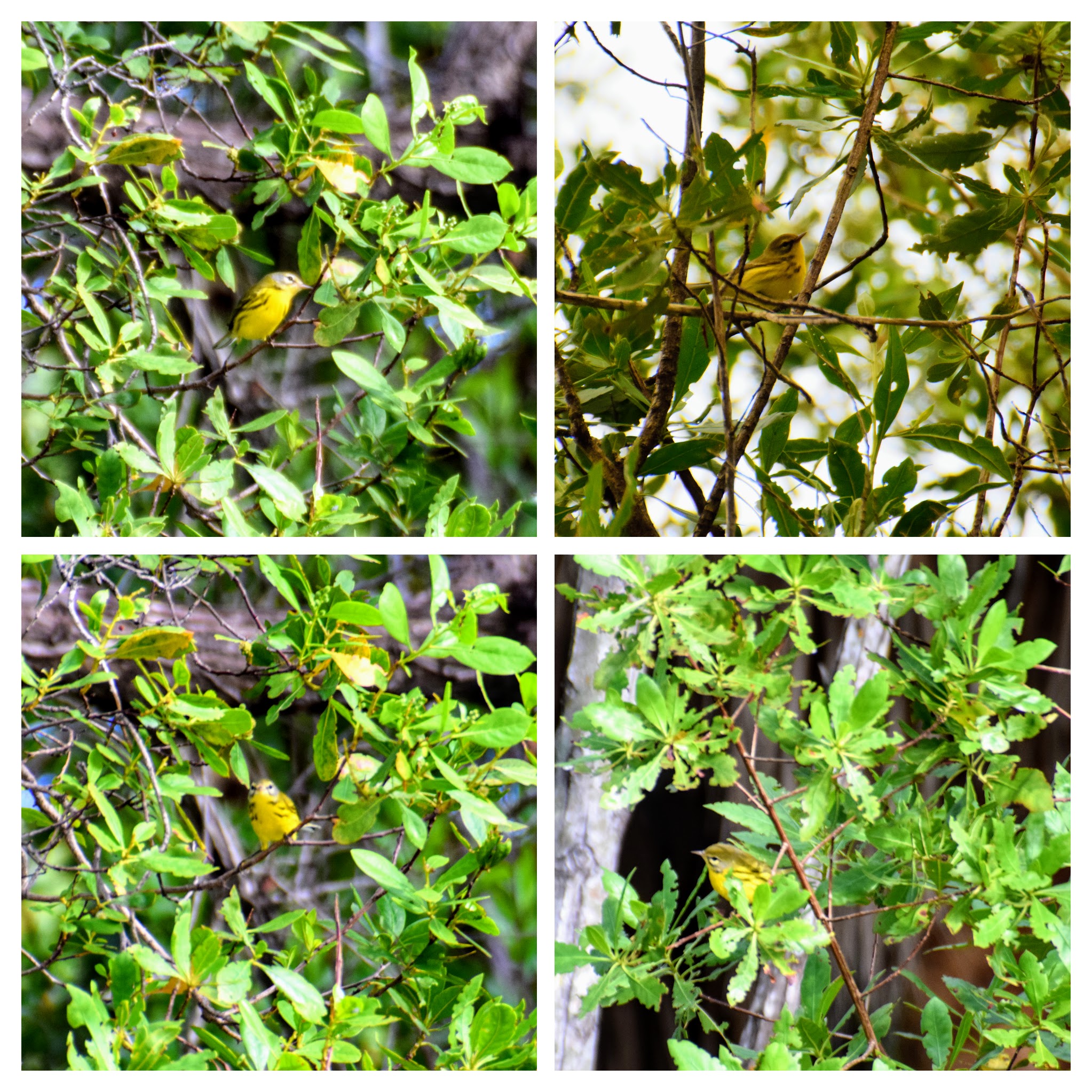
These are Yellow Warblers, spending time here to fatten up a little before their journey across the Gulf of Mexico toward Cuba. Can you imagine a bird this small travelling hundreds of miles over open ocean in the driving rain without stopping? Why not just stay in Florida? Seems easier.
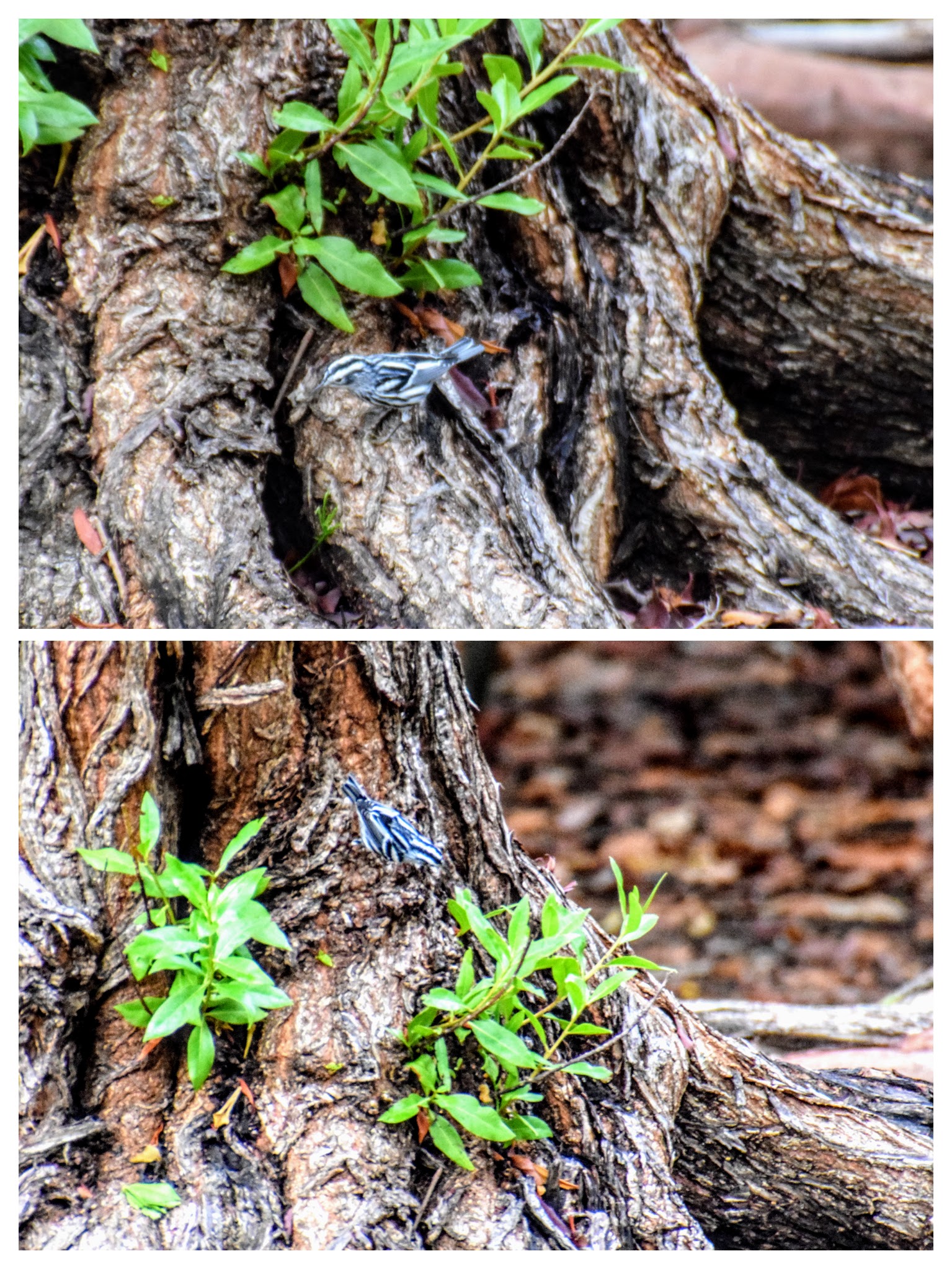
This is a Black-and-White Warbler, which climbs adroitly up and down tree trunks like a nuthatch, creeper, or woodpecker. Its colors are even convergent with that of a woodpecker. I wonder what about that lifestyle favors the black and white coloration.
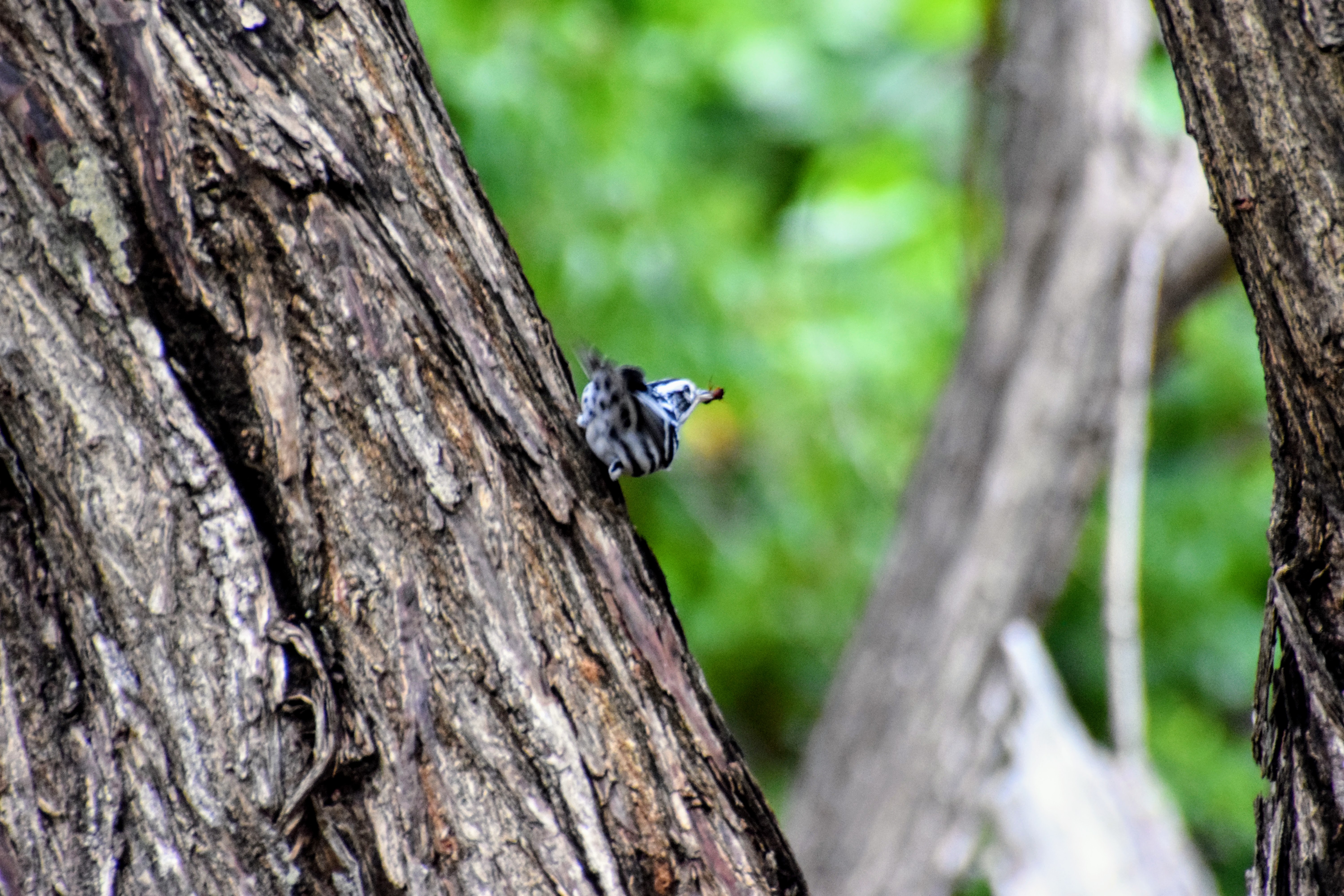
It caught a bug hiding on the bark.
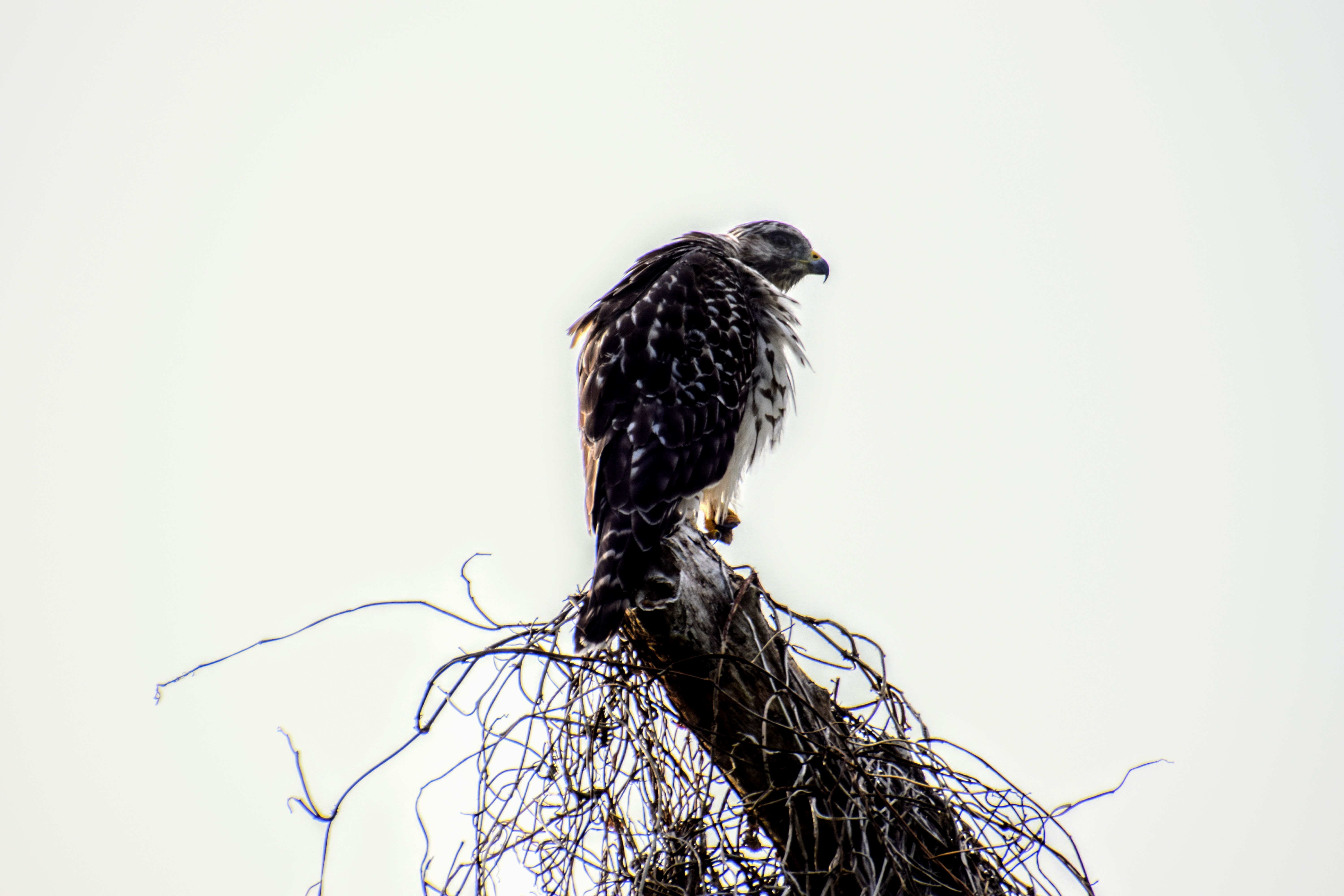
I’d just started along the birding trail when I came across this conspicuous juvenile Red-Shouldered Hawk. It seemed huge, almost as big as a Red Tailed.
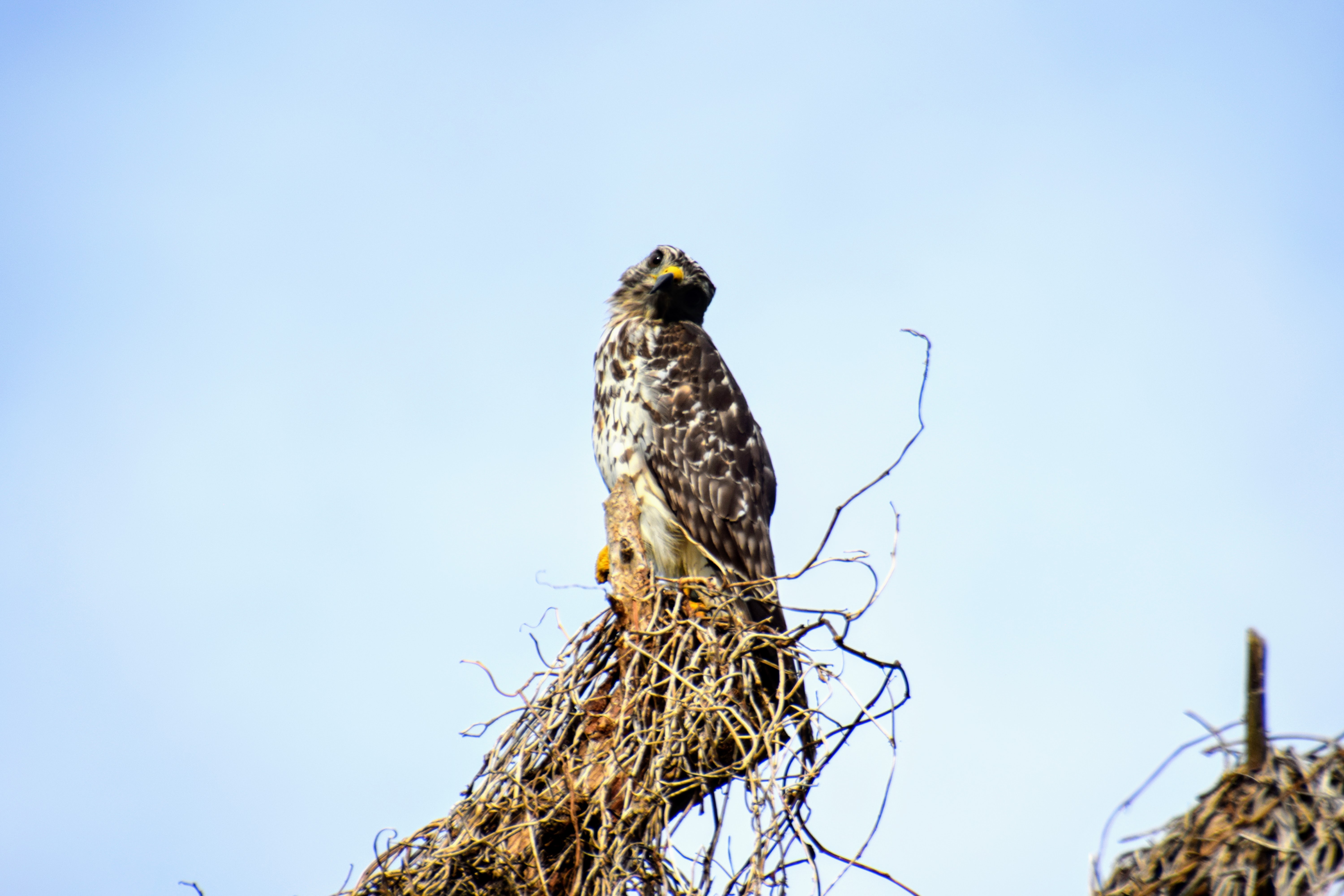
He noticed me, but wasn’t bothered enough to do anything about it.
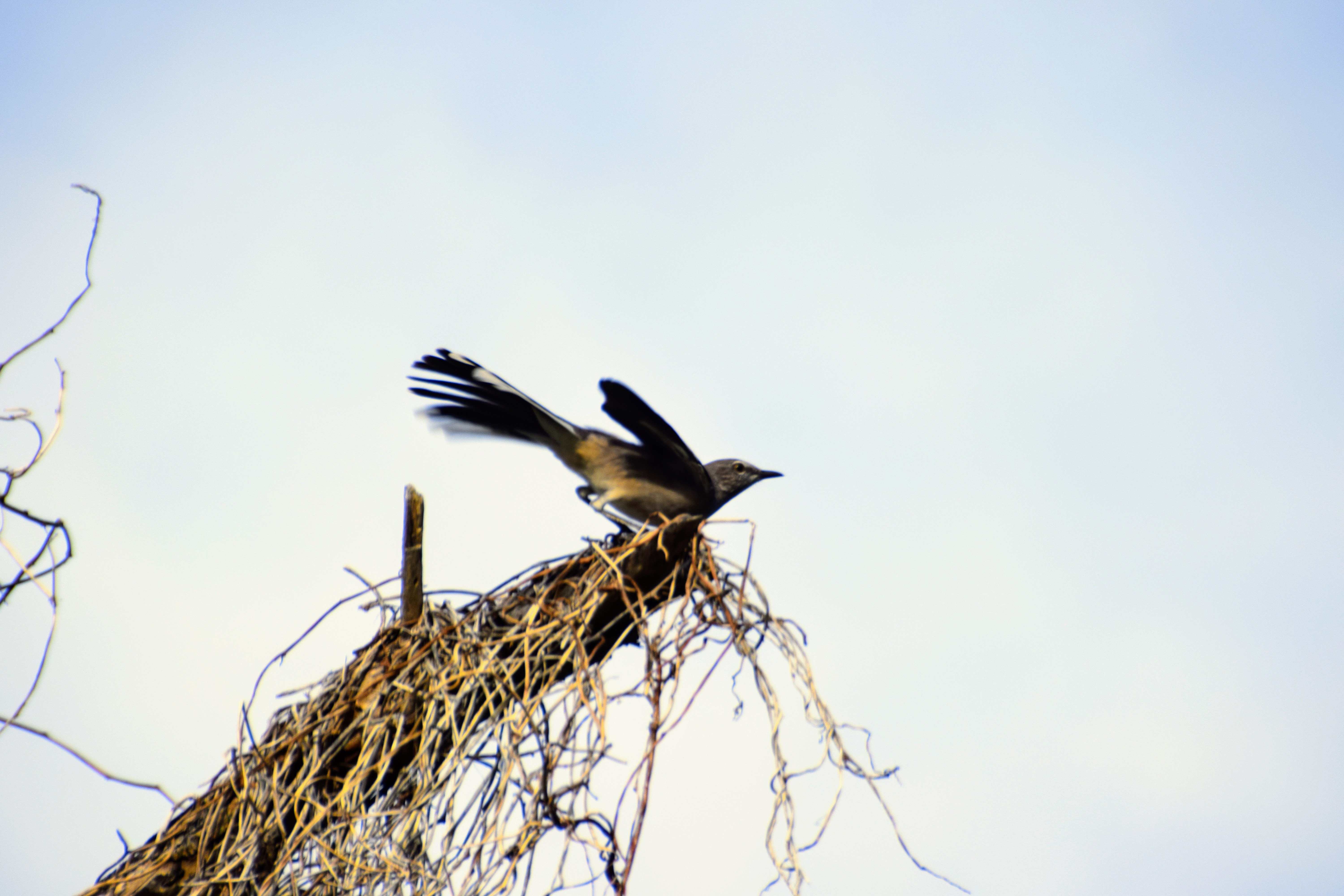
A Northern Mockingbird couple was mocking him, flitting around his perch. We have Northern Mockingbirds in California.
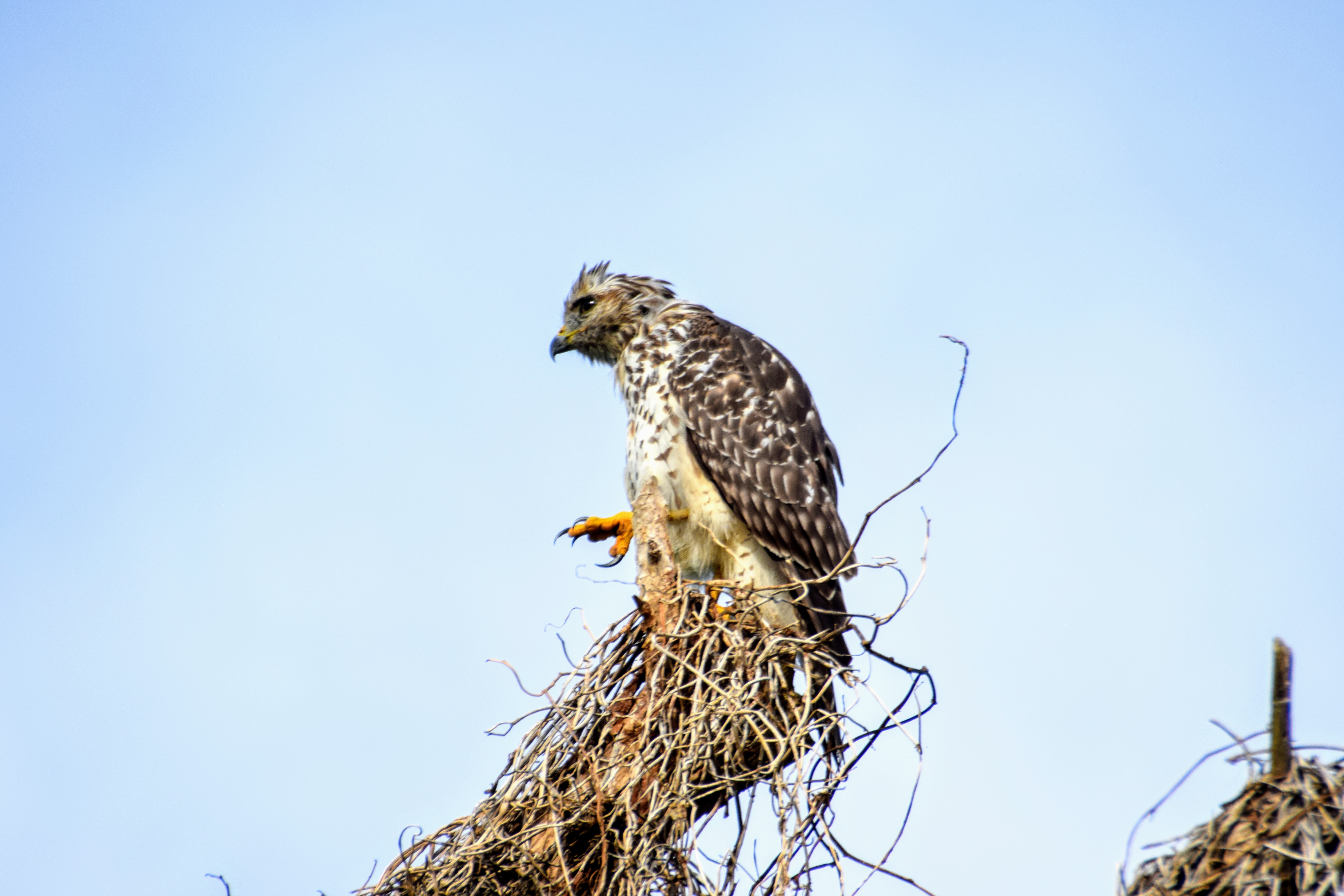
He seemed quite unsure of himself. That talon looks pretty deadly though!
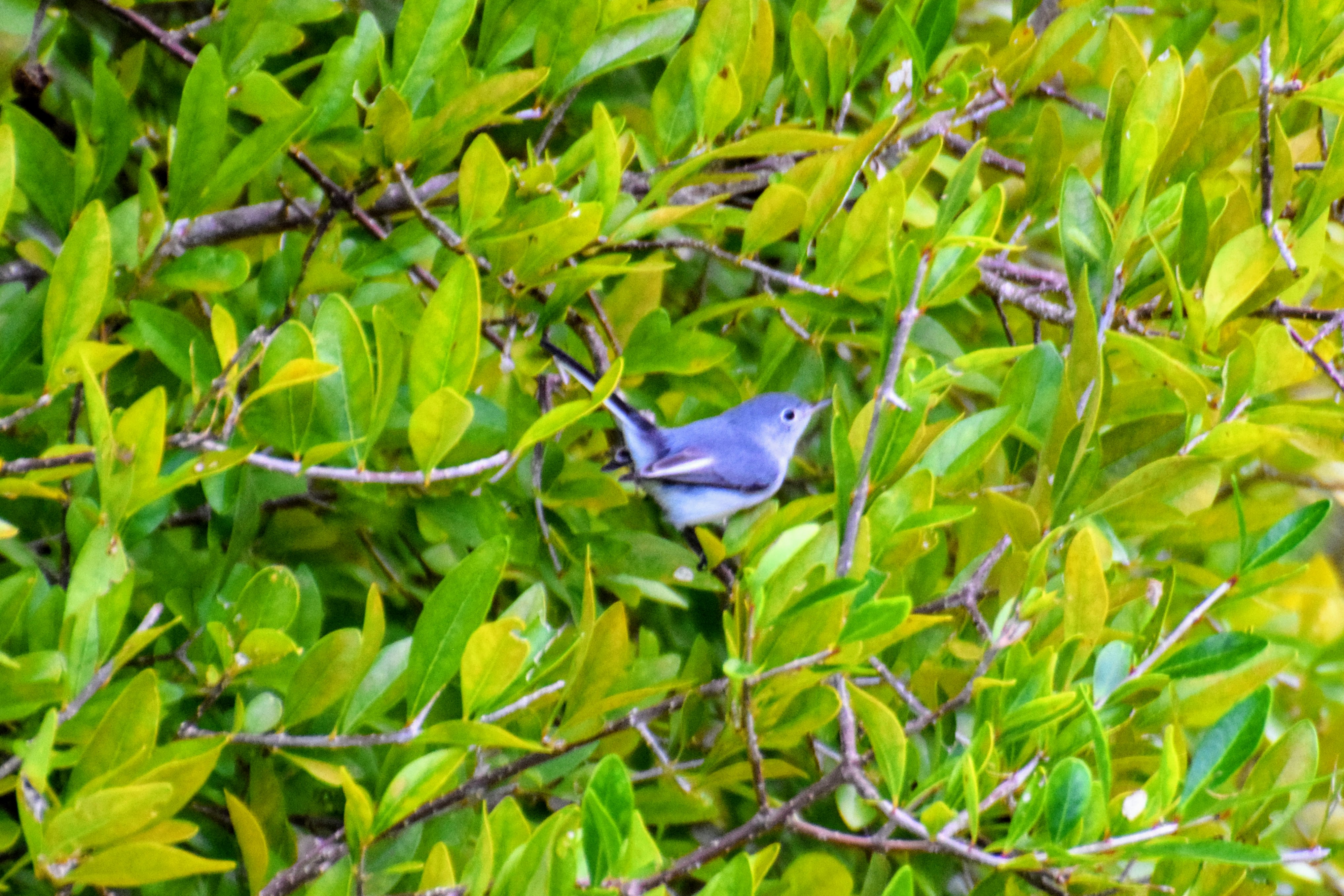
This is a Blue-Gray Gnatcatcher. They were relatively common both on Key Biscayne and in the Everglades, but were really hard to get a picture of because they hop about constantly, like a Bushtit. Apparently they don’t actually eat gnats.
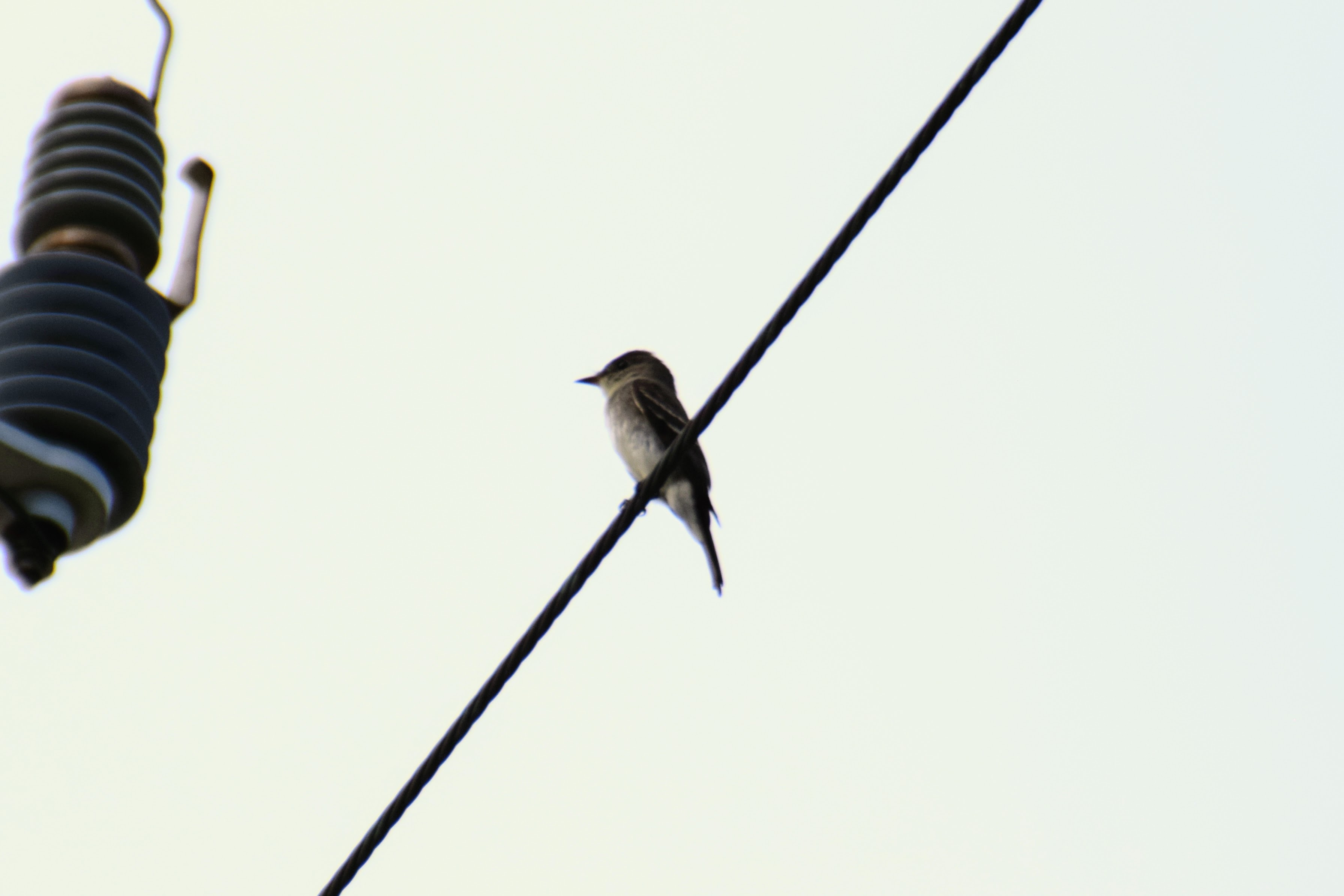
This is a Gray Kingbird, another relative of our Black Phoebe, and one with a noticeable resemblance. Supposedly, they are called kingbirds (and the family is called tyrant flycatchers) because of their take-charge attitude. They are sometimes seen defending their territory against hawks.
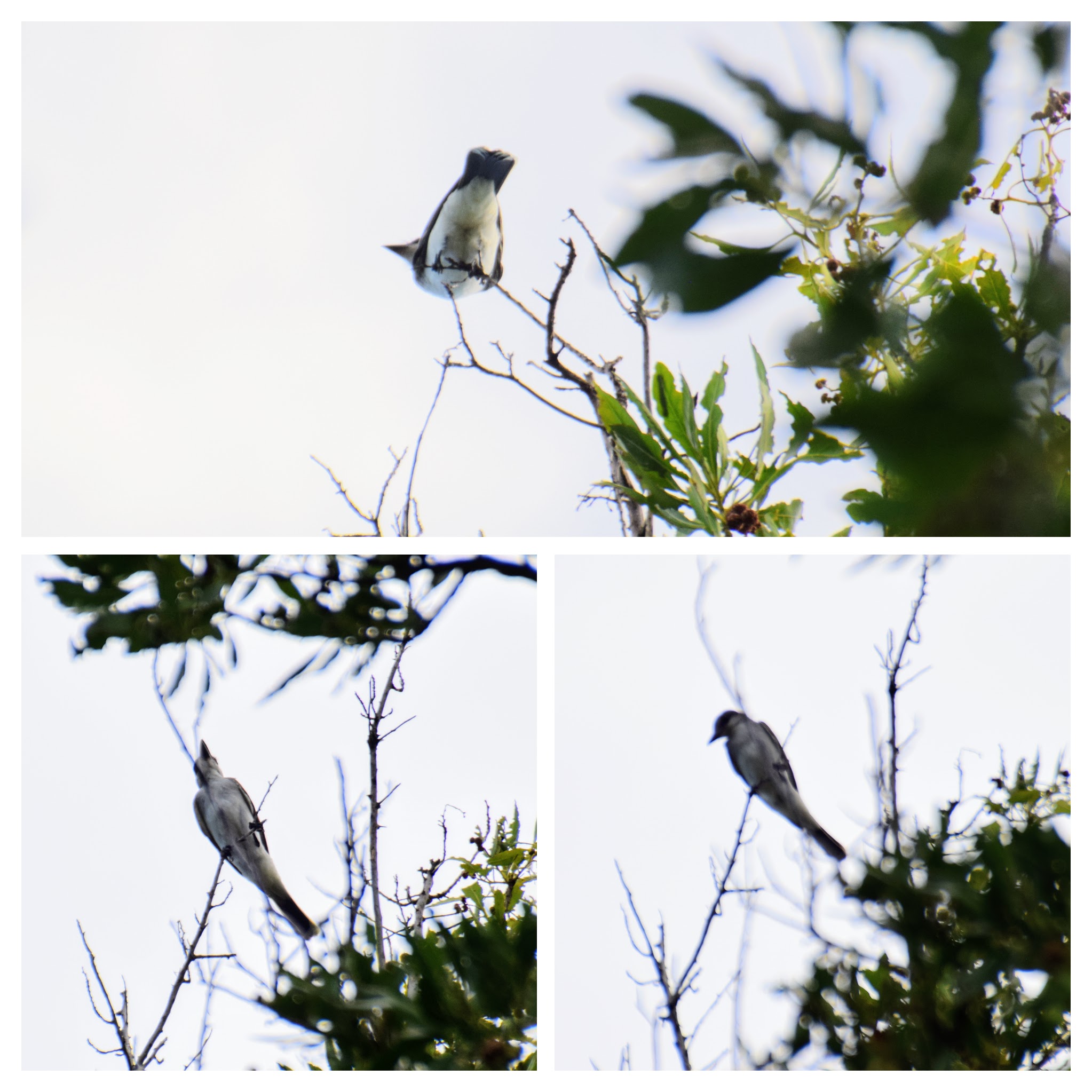
Now for the birds I could only get bad photos of. This is an Eastern Kingbird, another tyrant flycatcher, but with a much different body shape than the ones I’d seen so far. It’s shaped almost like a mockingbird–much bigger and longer than other kingbirds, and with a noticeable neck.
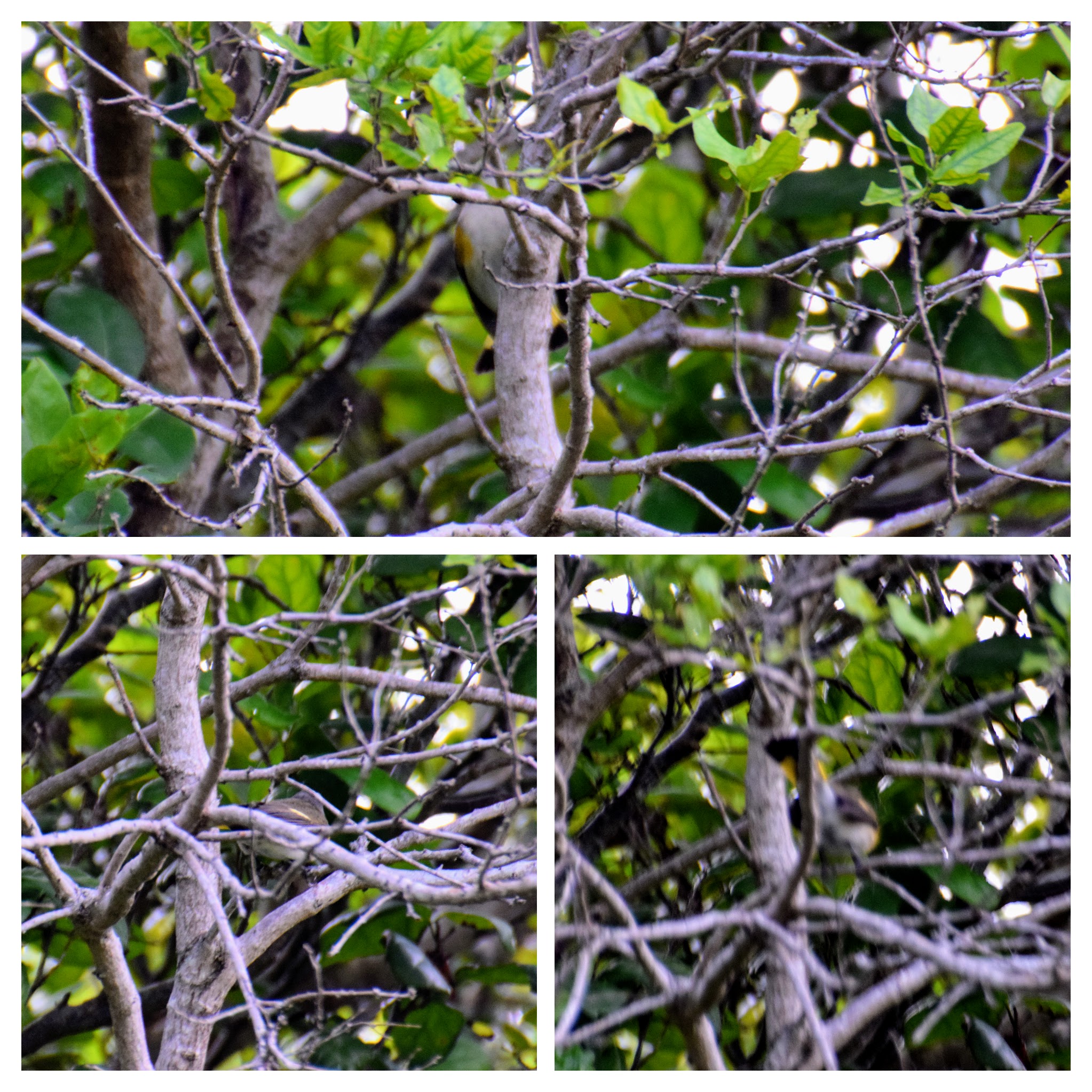
This is a female American Redstart, another type of warbler. It wouldn’t sit still, nor would it expose itself much outside the foliage.

This is an Ovenbird, another warbler that looks more like a thrush. They are extremely loud, and I was hearing them the entire time I was taking bird photos, but this was the best picture I was able to get, since they stay off the trails and blend into the dry leaves. They get their name from the kiln-shaped nests they build.
Birds in the City
Another thing I was looking forward to seeing in Florida was the feral parakeets. Many escaped pets have formed breeding populations here. The only ones I saw were Monk Parakeets, loud green birds with white faces.
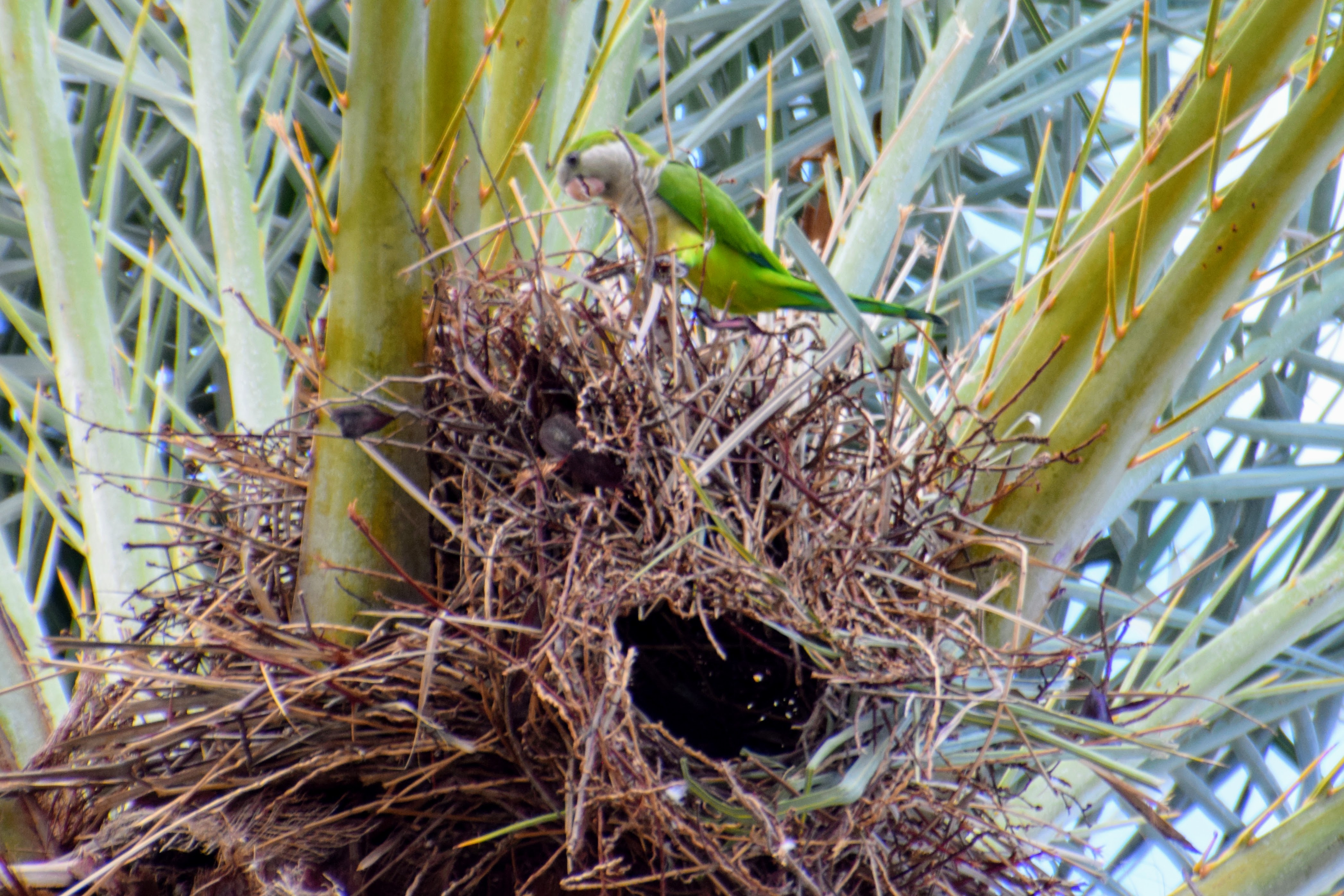
In the book The Wild Parrots of Telegraph Hill, which I highly recommend, it was a big secret where the parakeets nested, which the author only discovered after years of knowing the birds, and refrained from mentioning by name in the book. However, the Florida Monk Parakeets nest in a very obvious location–right in the middle of Lincoln Road, a famous high-end shopping strip in Miami Beach.
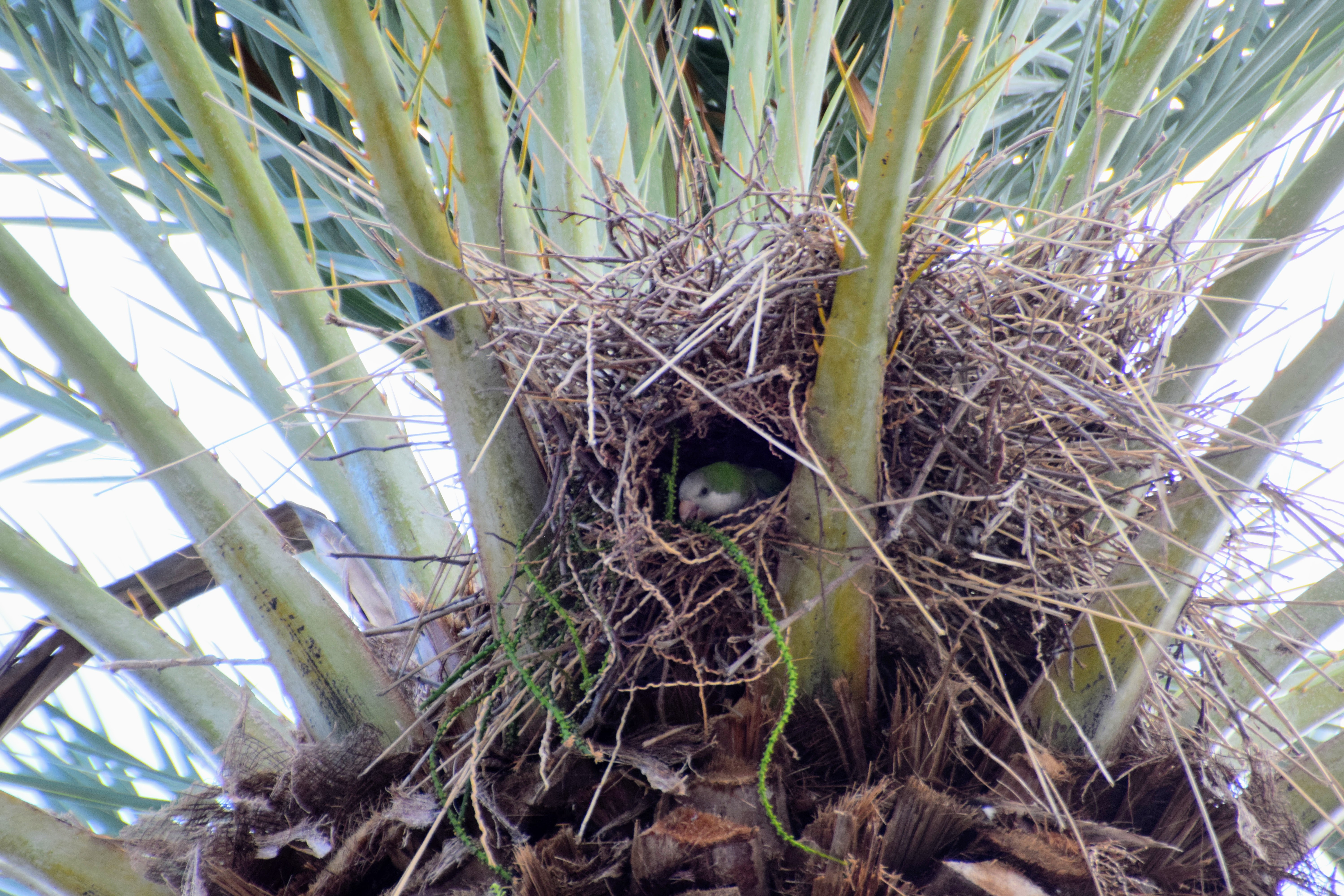
This one was futzing with a bit of greenery, either for fun or for nest maintenance. It looks like he’s concentrating quite hard!
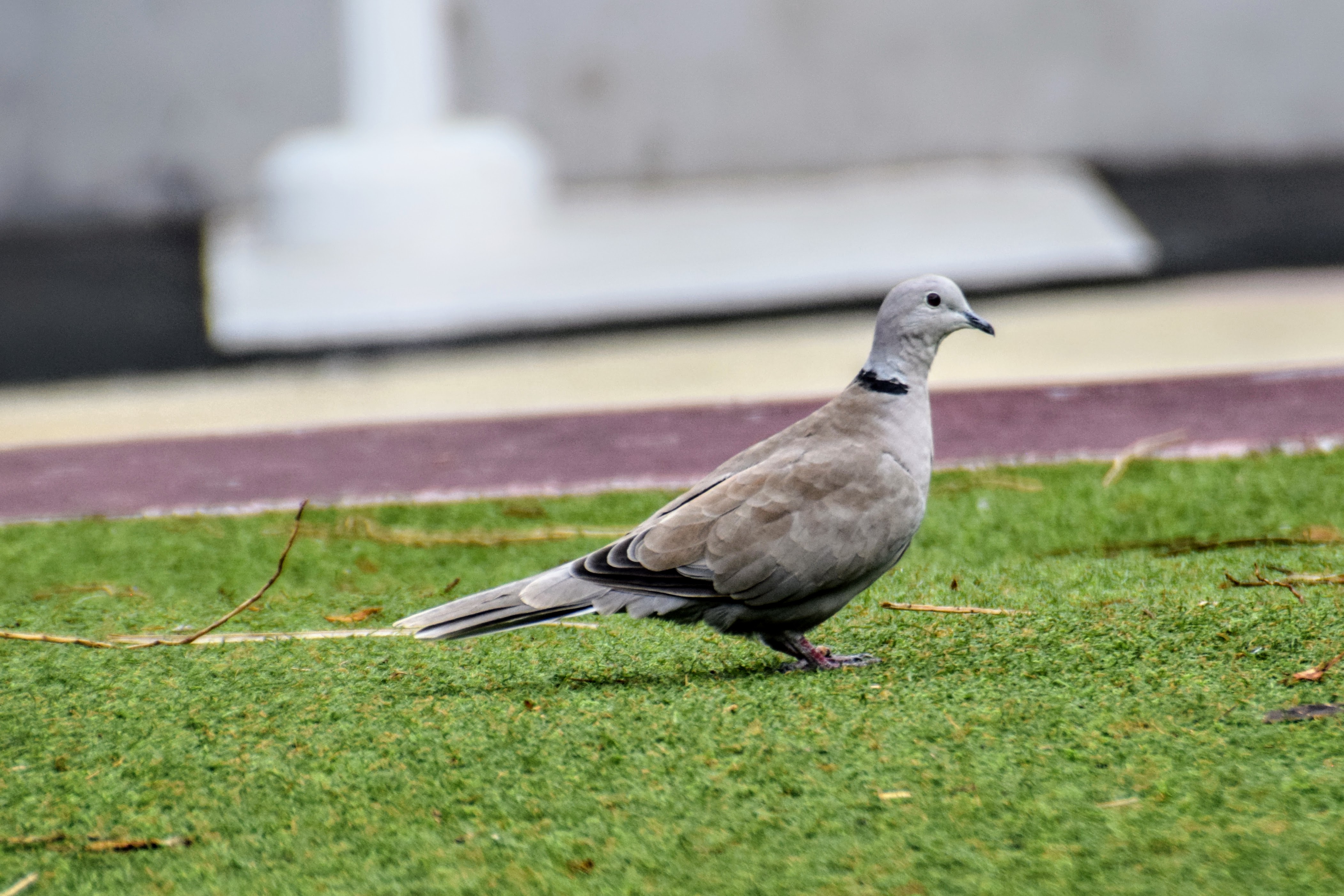
Another invasive species, but one we also have trouble with in California, is the Eurasian Collared Dove.
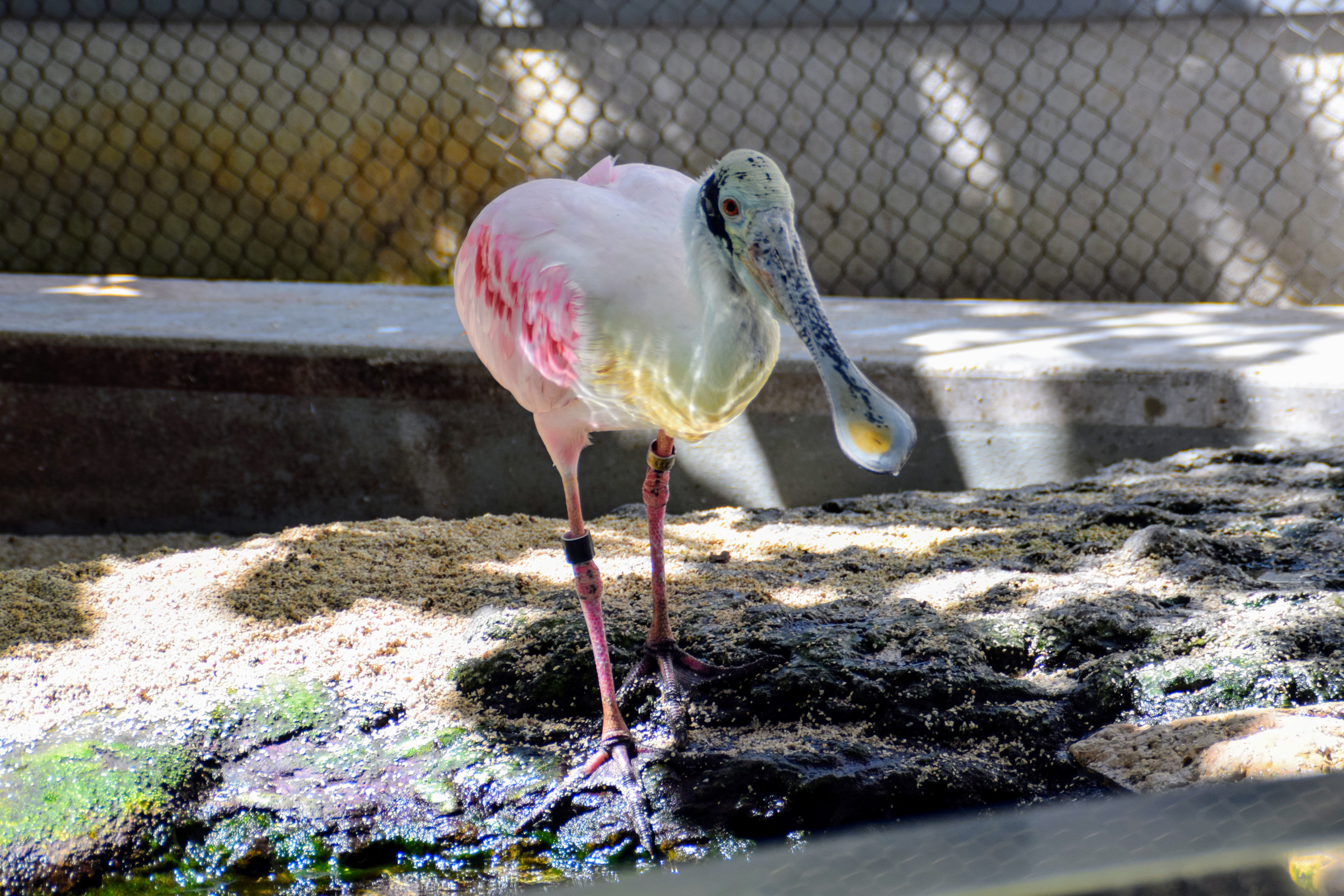
This is kind of cheating, but I went to the Frost Museum of Science and they had an aviary that housed local birds. This is a Roseate Spoonbill, which is kind of like a discount flamingo. It’s not nearly as good at filtering tiny prey out of water as a flamingo, since it lacks baleen, so it must forage for many hours every day and is not as pink as a flamingo. Spoonbills are related to ibises.
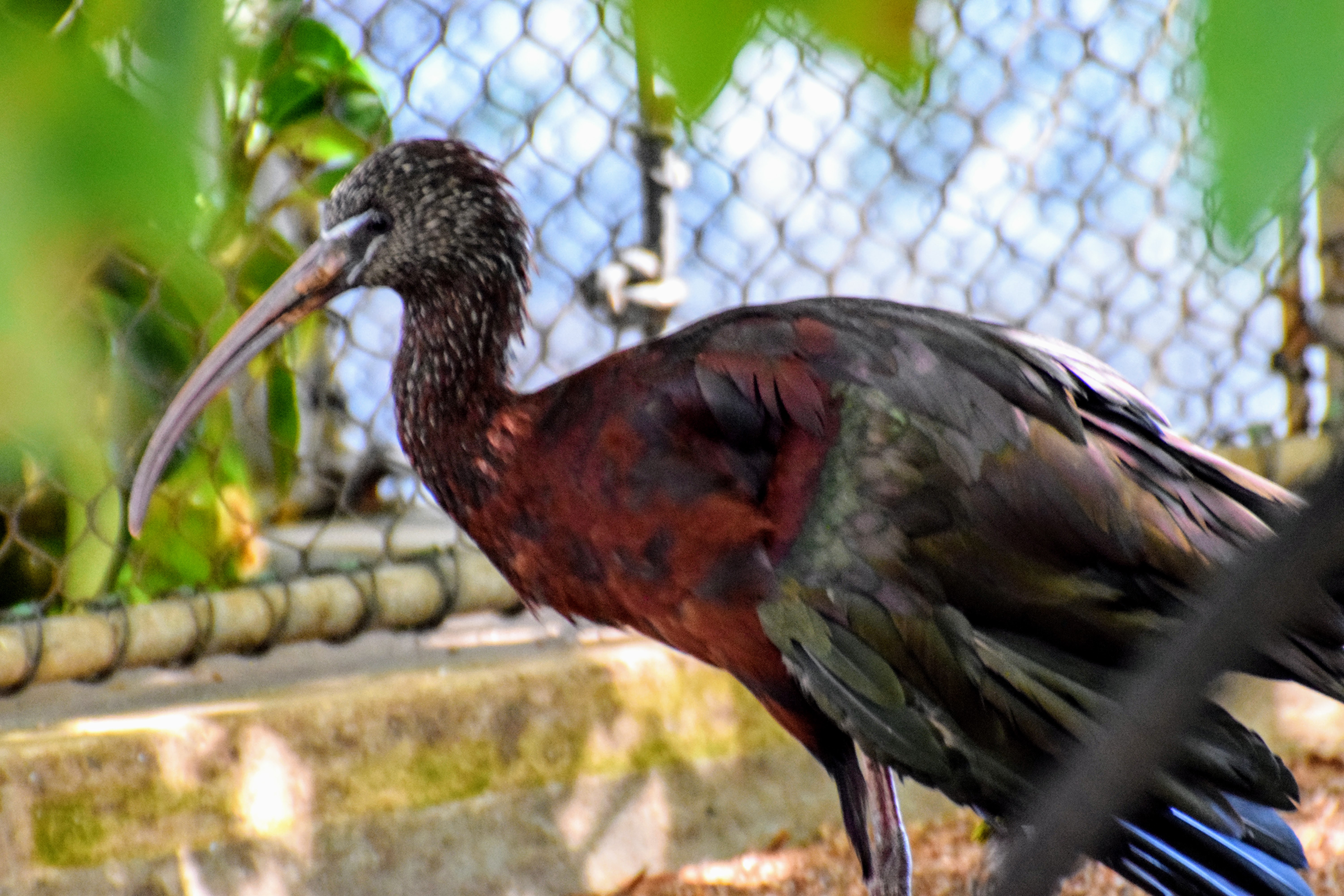
Speaking of ibises, this is a Glossy Ibis, a nomadic species with a near-worldwide distribution. This one has a problem with its wing, which is probably why it’s in the aviary.
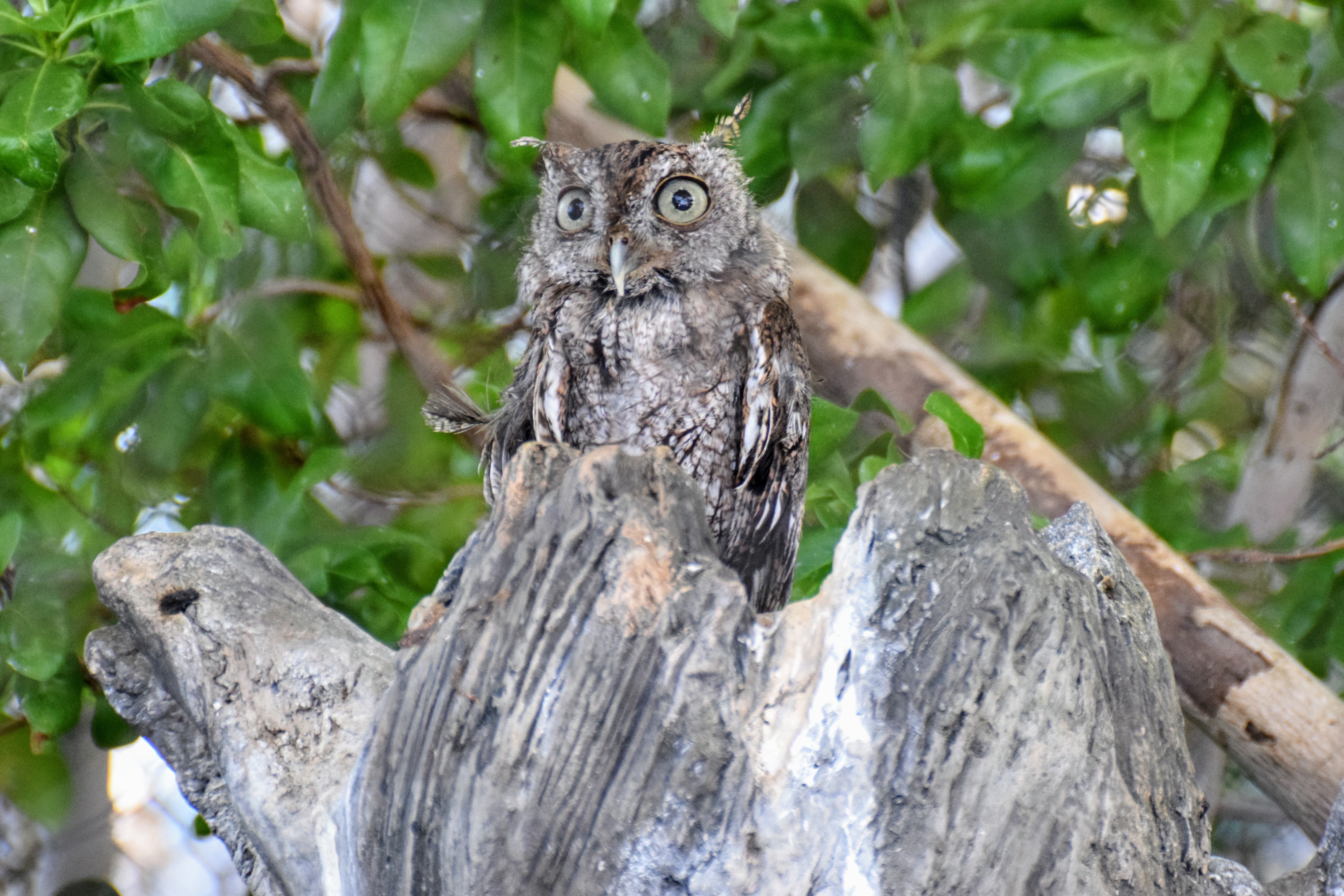
This is an Eastern Screech Owl, a small owl that doesn’t screech, but rather neighs like a tiny horse.
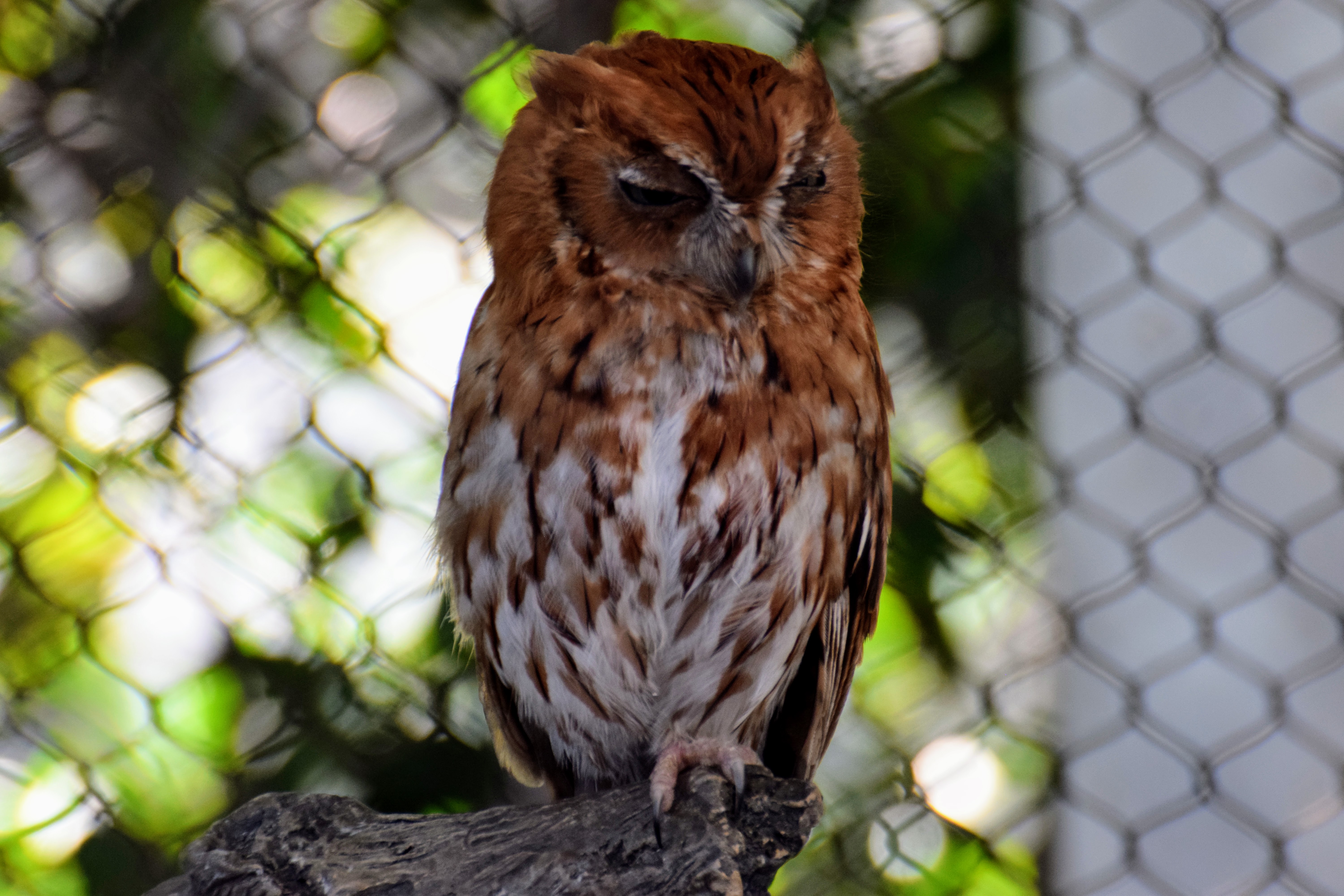
While this owl looks totally different, it’s actually the same species as the other one. They come in two color morphs, gray and rufous.
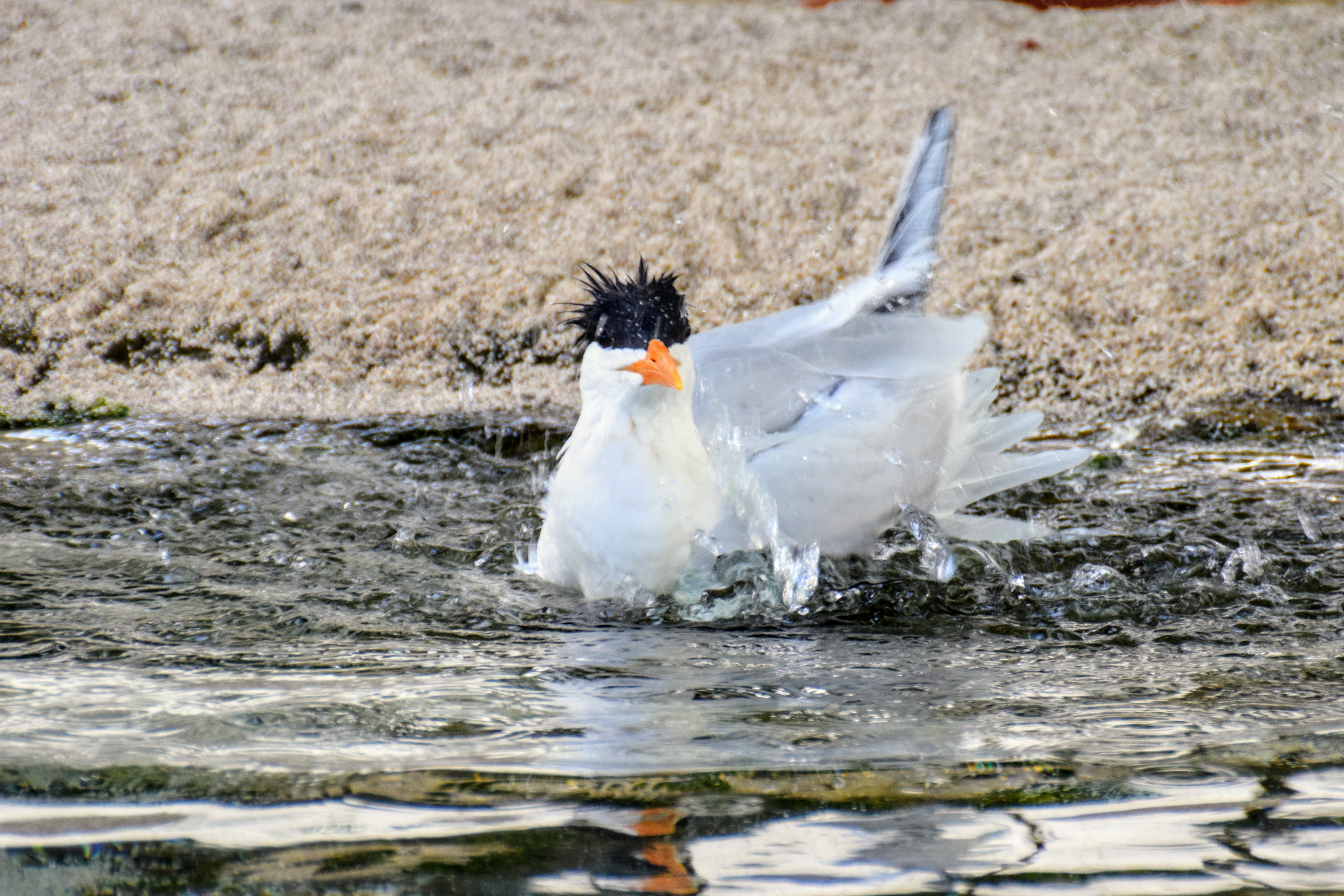
This is a royal tern in breeding plumage, enjoying a bath. Terns are like pointy versions of gulls.
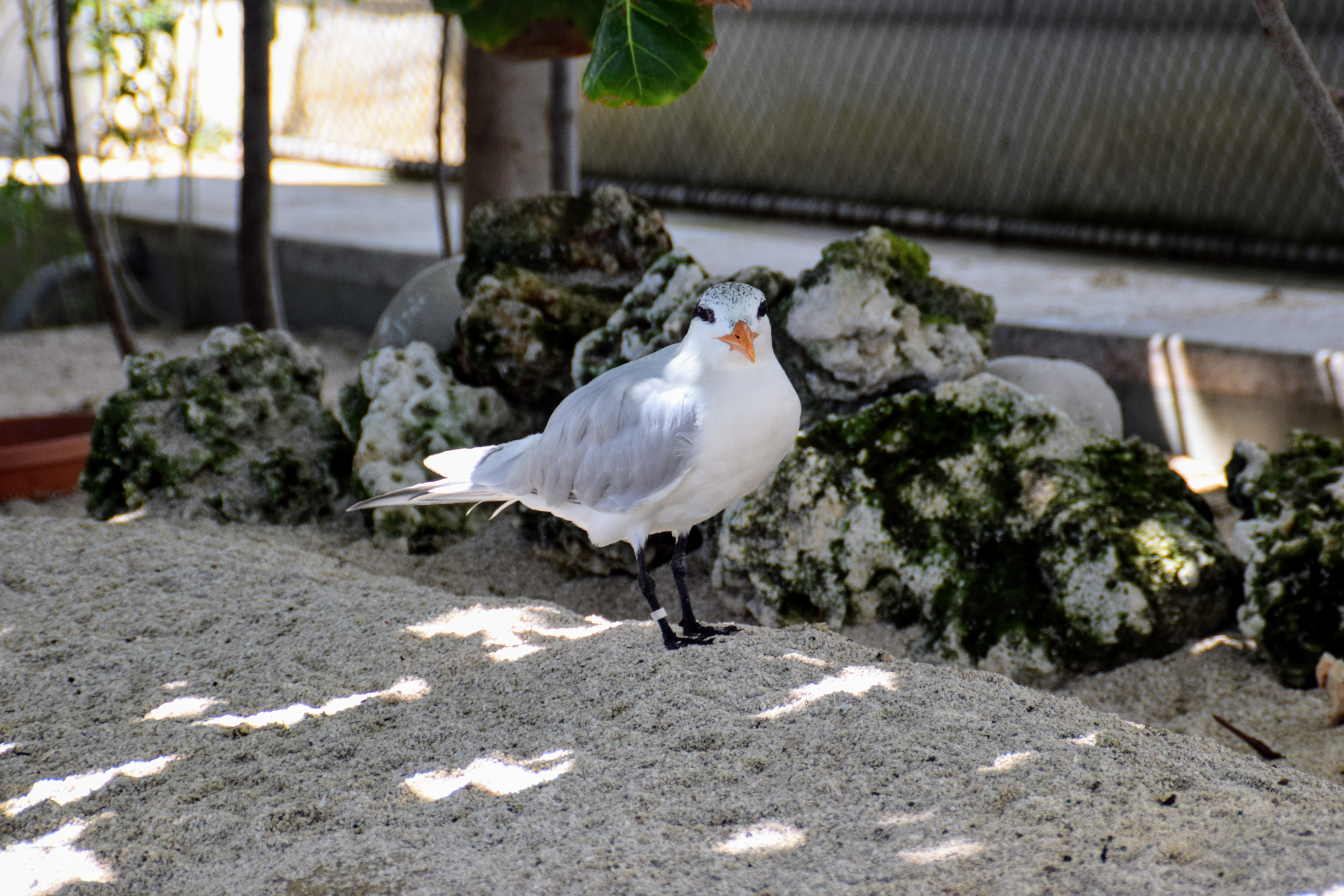
This tern is not in breeding plumage. Perhaps it’s a juvenile.
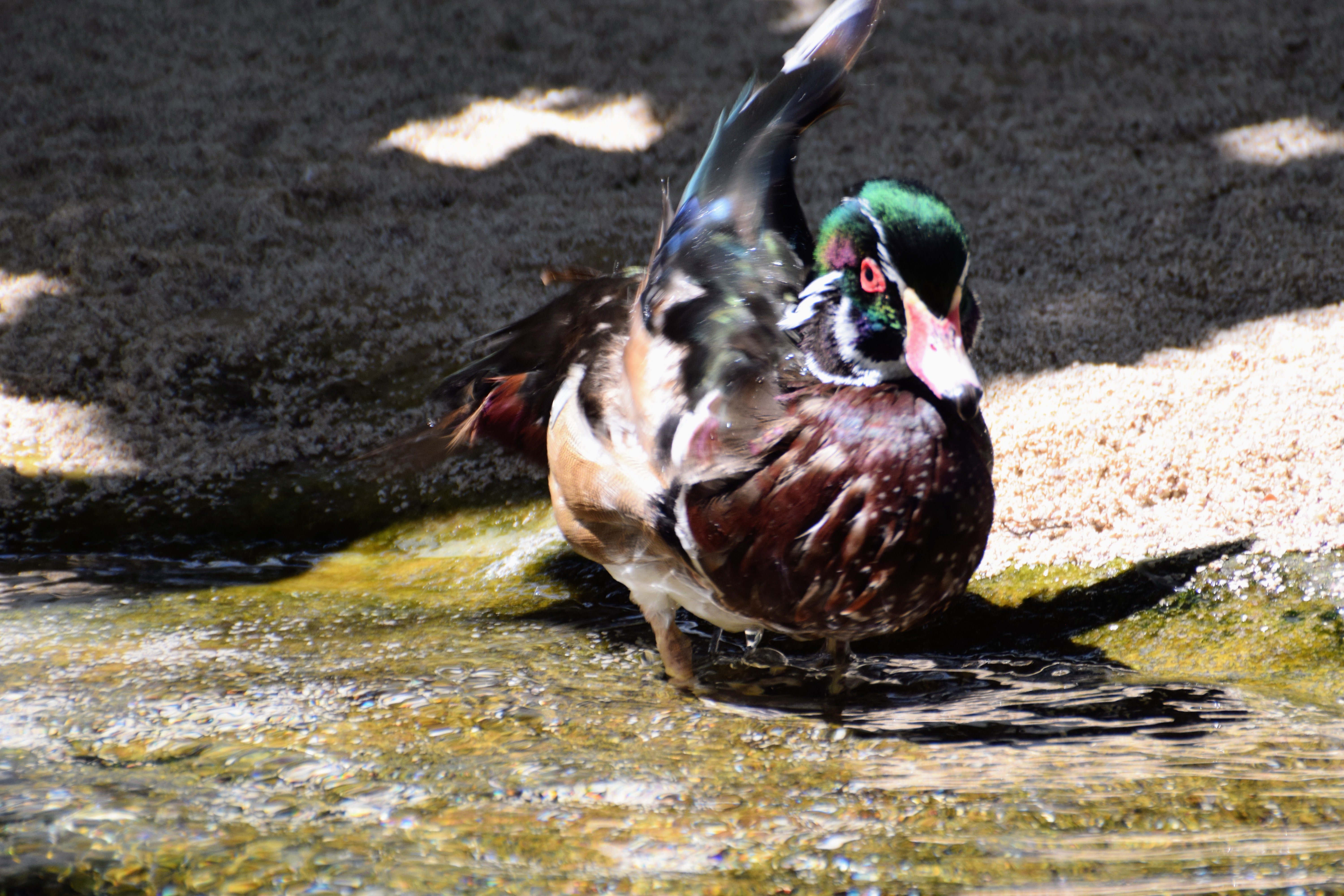
This is a male Wood Duck, a very fancy duck closely related to the even fancier Mandarin Duck, which lives in east Asia.
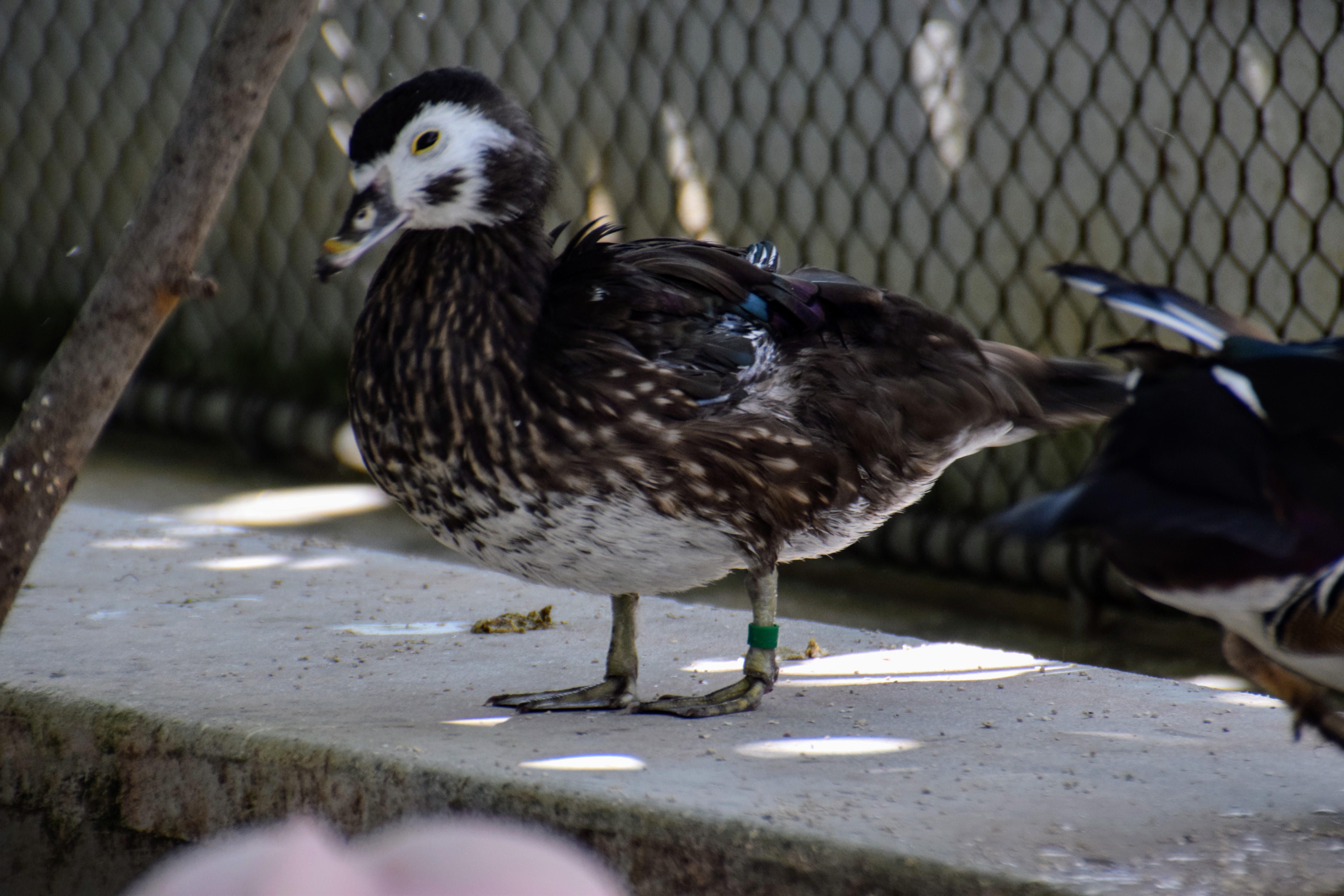
This is his wife, who is much less fancy.
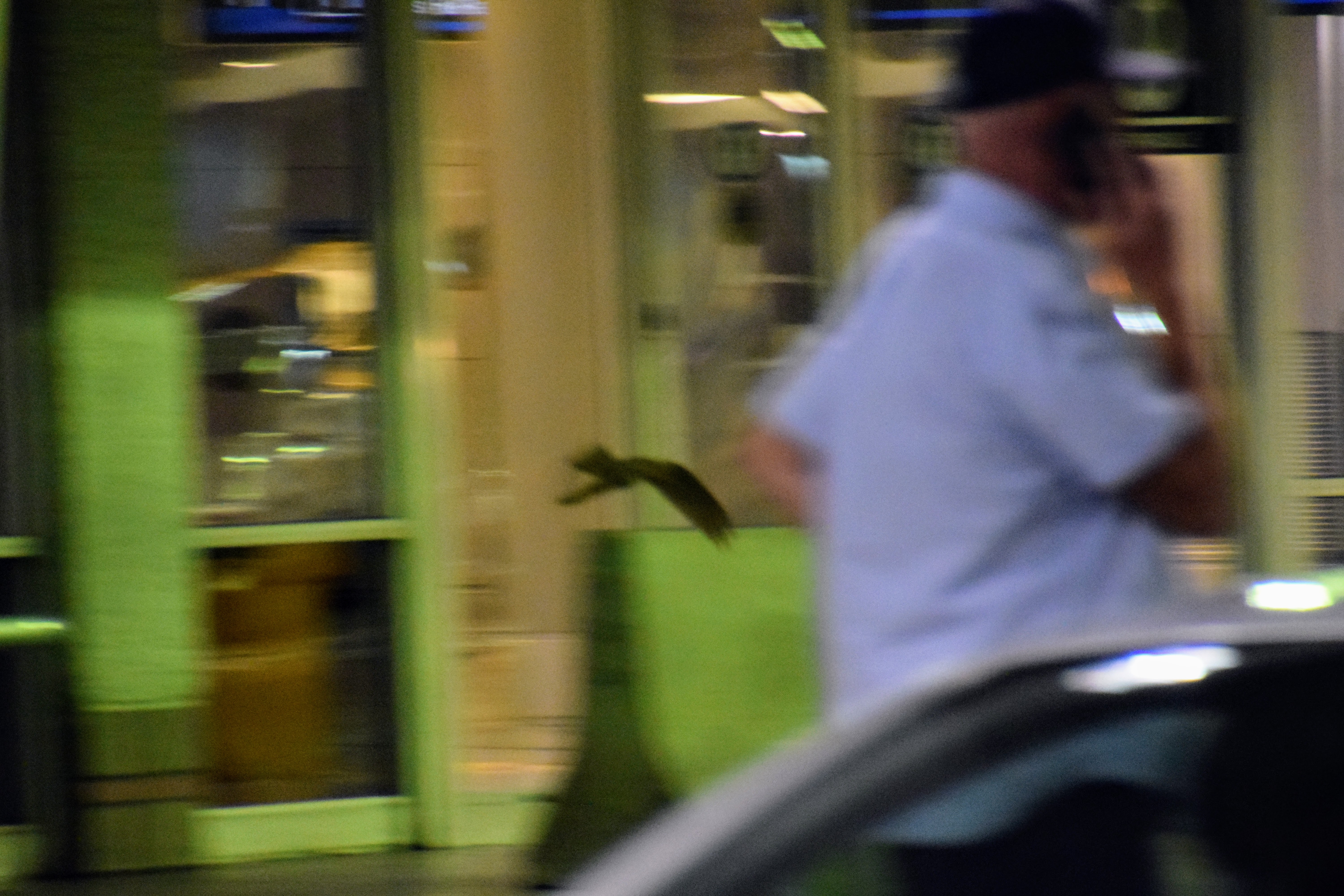
This, believe it or not, is a Chuck-Wills-Widow, a large type of nightjar. I’d just gotten off the plane, and there it was, sitting on a fence in the arrivals area of the airport. I didn’t have my camera ready, and when I took it out of my bag the lens fogged over from the sudden humidity, so I wasn’t able to get any good pictures. I didn’t realize I had to be ready for birding instantly!
Non-birds
In addition to its exciting bird population, Florida is also known for its non-avian reptiles and its tropical arthropods.
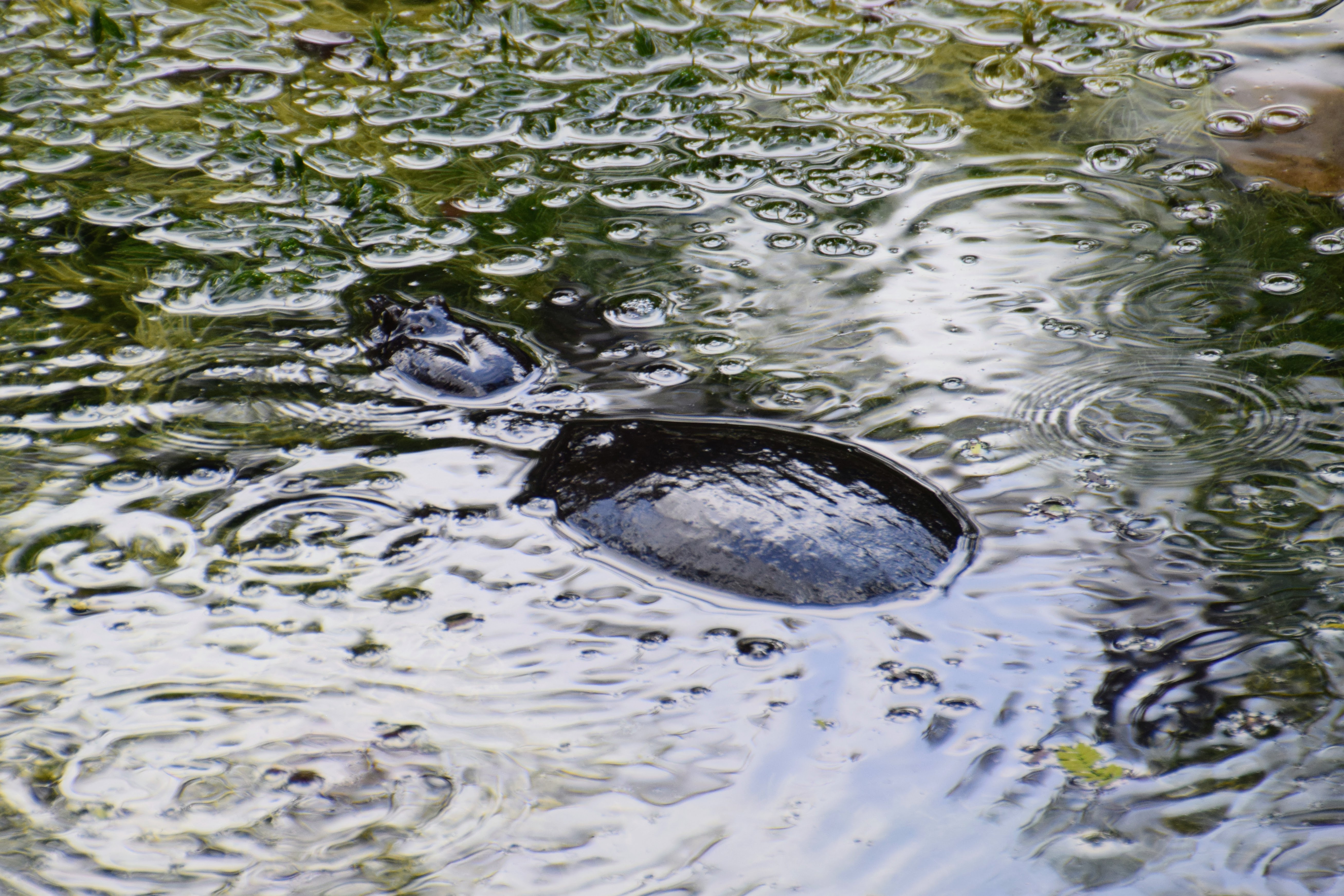
This is a Florida softshell turtle I saw in the Everglades. It’s hard to tell from this angle, but these have a very strange snorkel-like snoot. They are also very fast-moving for a turtle.
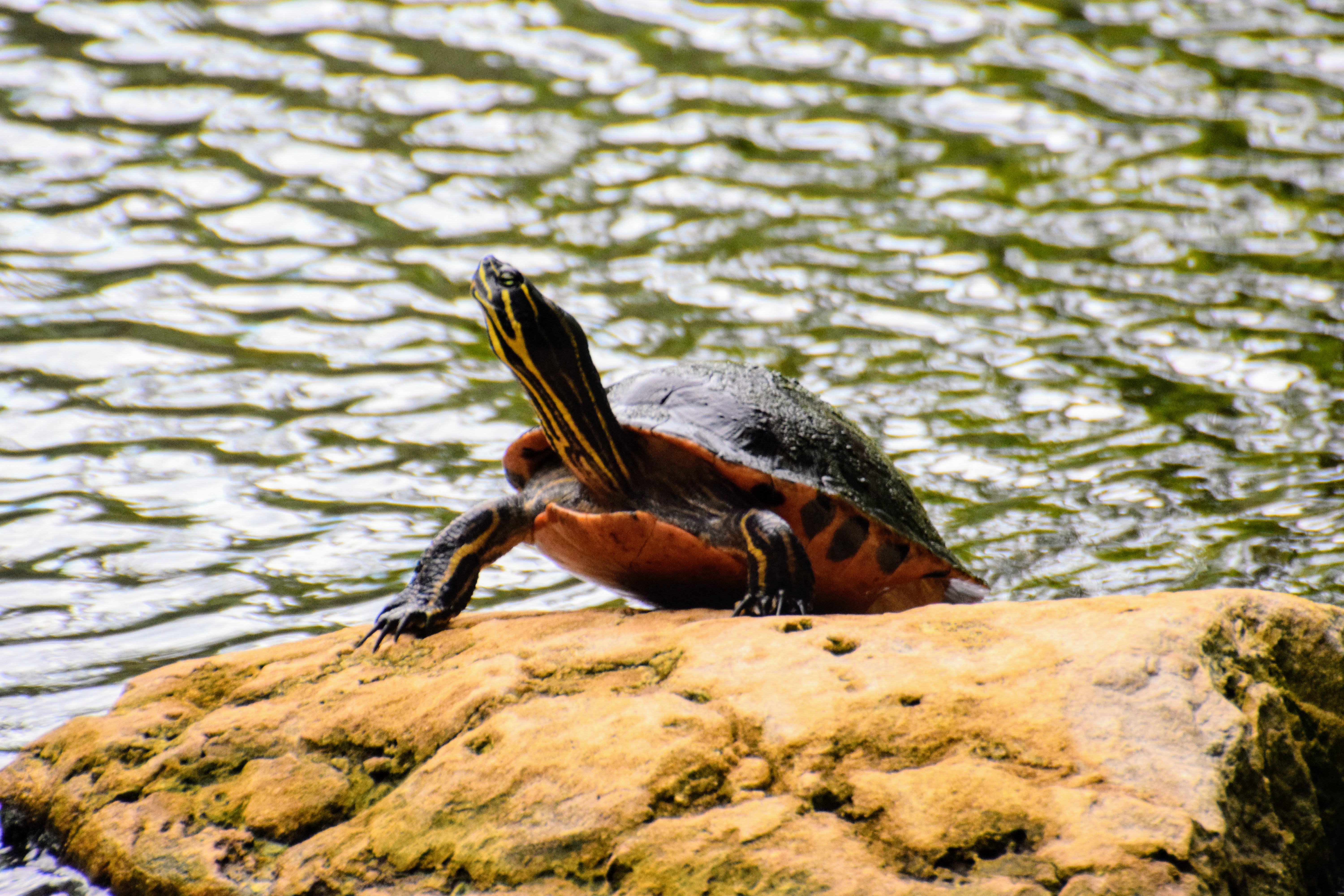
This is a yellow-bellied slider, a species native to the eastern United States but not normally found in southern Florida. I took this photo in the Miami Beach Botanical Garden, so maybe it was brought here specifically to live in this pond.
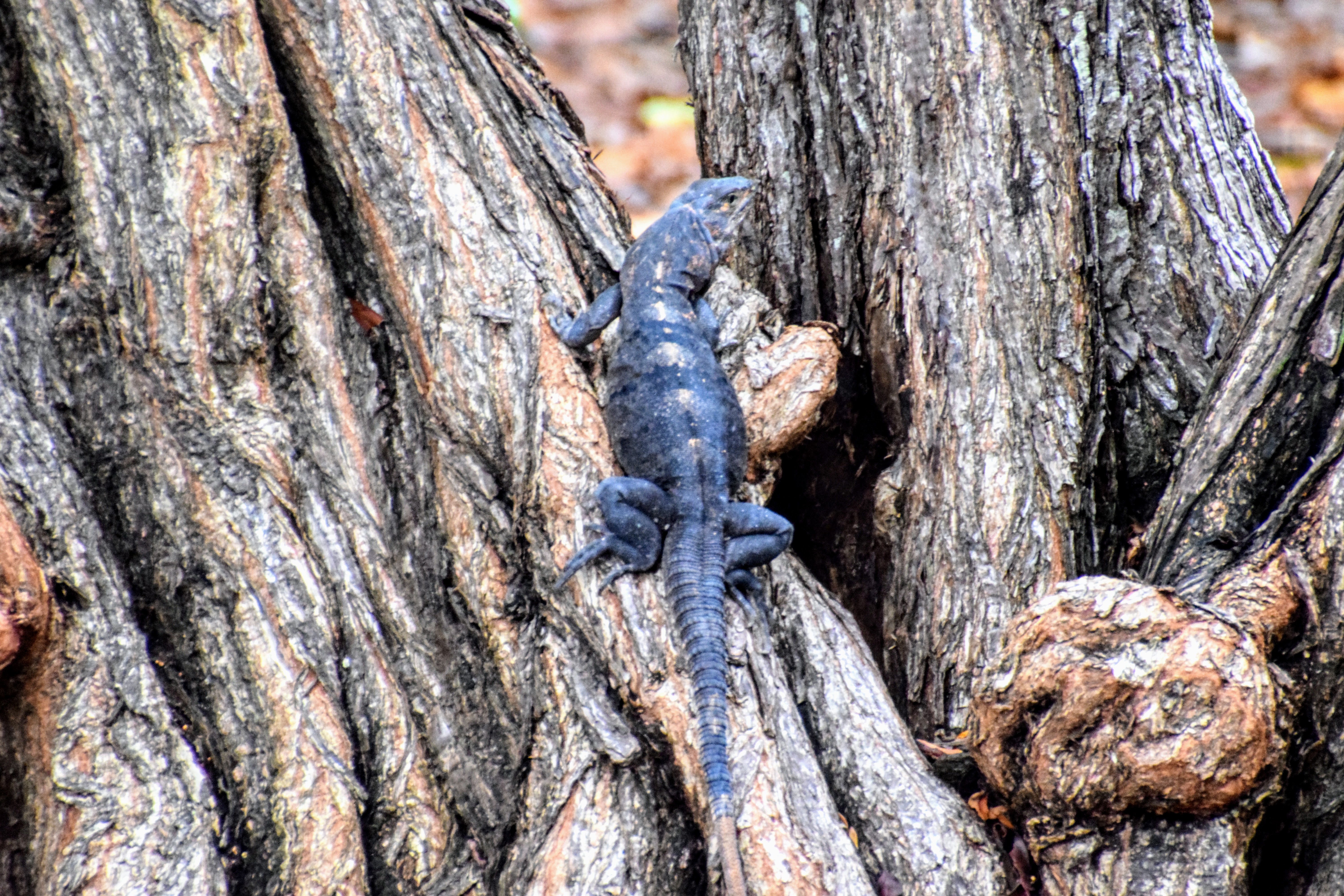
I think this is a black spiny-tailed iguana, but I’m not totally sure since it doesn’t have a comb on its back. This lizard could beat up many small dogs.
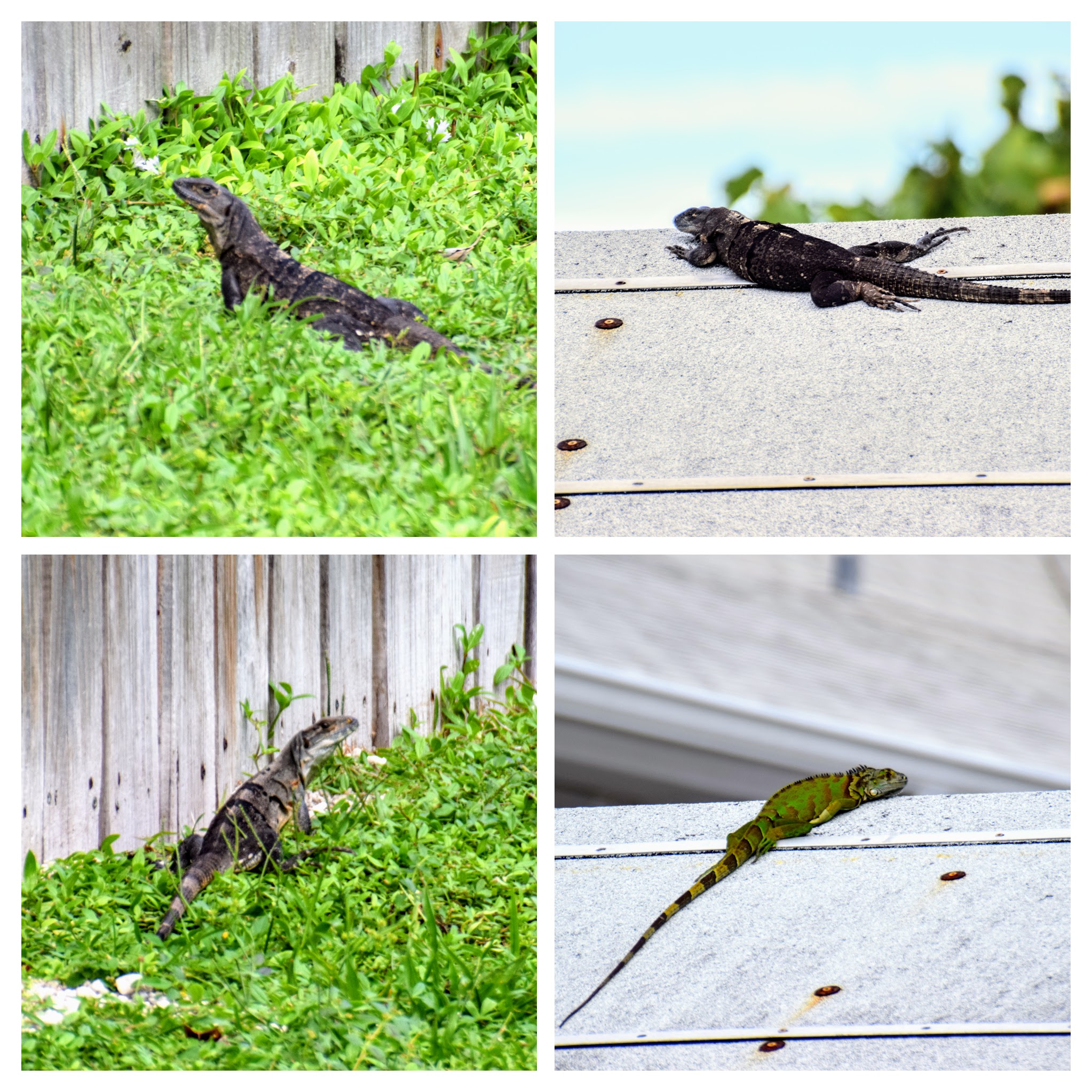
These four lizards were hanging out near a generator that was emitting heat. Even in the blistering dog days heat of Florida, these large ectotherms need more! All of them are black spiny-tailed iguanas except the green one is a green iguana. Both types of iguana are invasive, and are native to Central and South America.
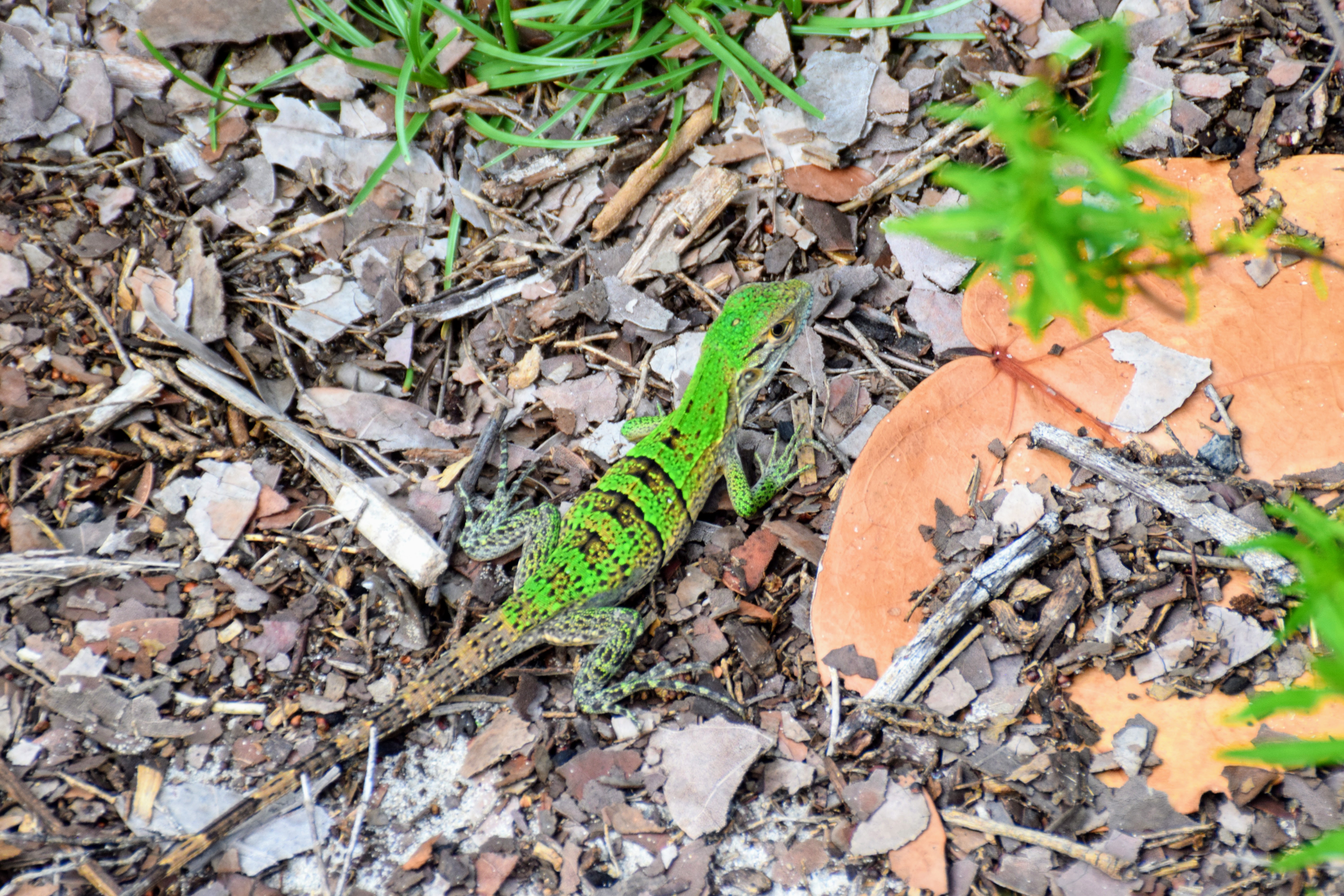
This small (foot-long), bright lizard is actually a baby black spiny-tailed iguana! Apparently they start life very green, then turn black with age. Kind of like a banana, but skipping the yellow stage.
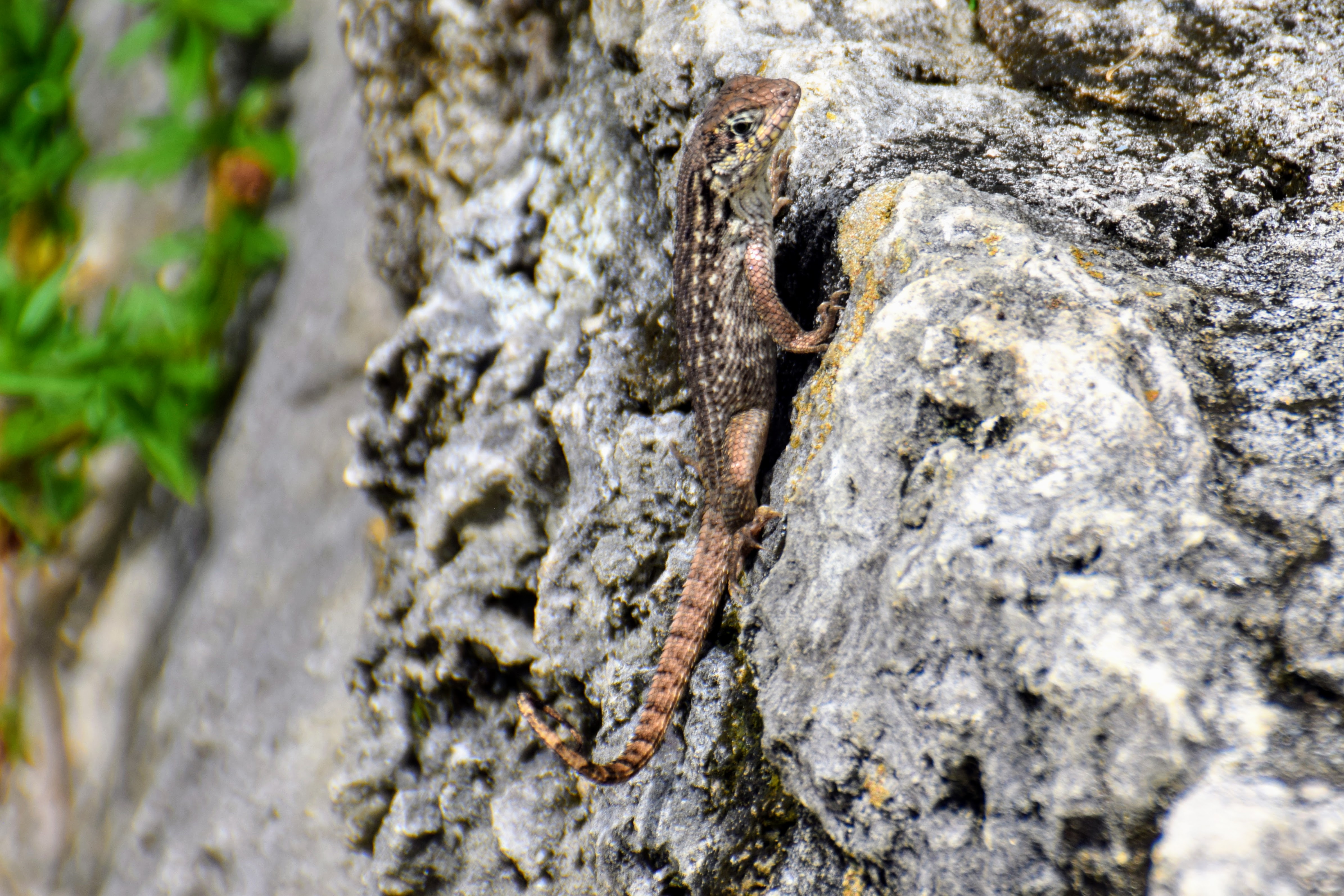
This cute fellow is a northern curly-tailed lizard. Their tail can get quite curly when they feel threatened by a distant predator; it’s unclear to me what good this does. If the predator is close by, they just run for cover. Like most lizards I noticed, this one is invasive, and is native to Cuba and other Caribbean islands.
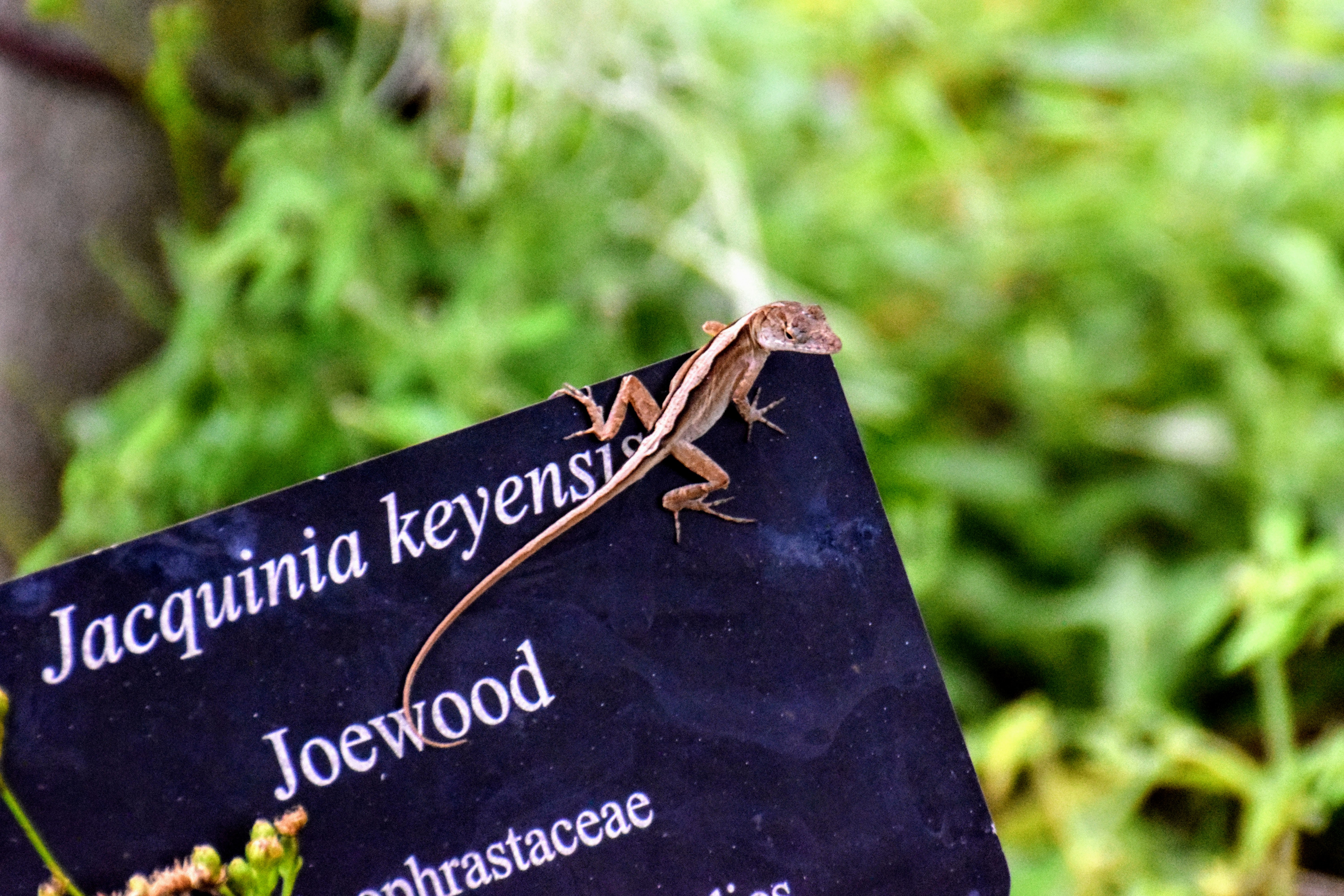
This unassuming tiny guy is a brown anole, a highly disruptive invasive species. Native to the Caribbean, they spread like wildfire in the continental US as far north as Tennessee and as far west as California. They have a foldable orange throat flag for display, and are sometimes small enough to climb a blade of grass.
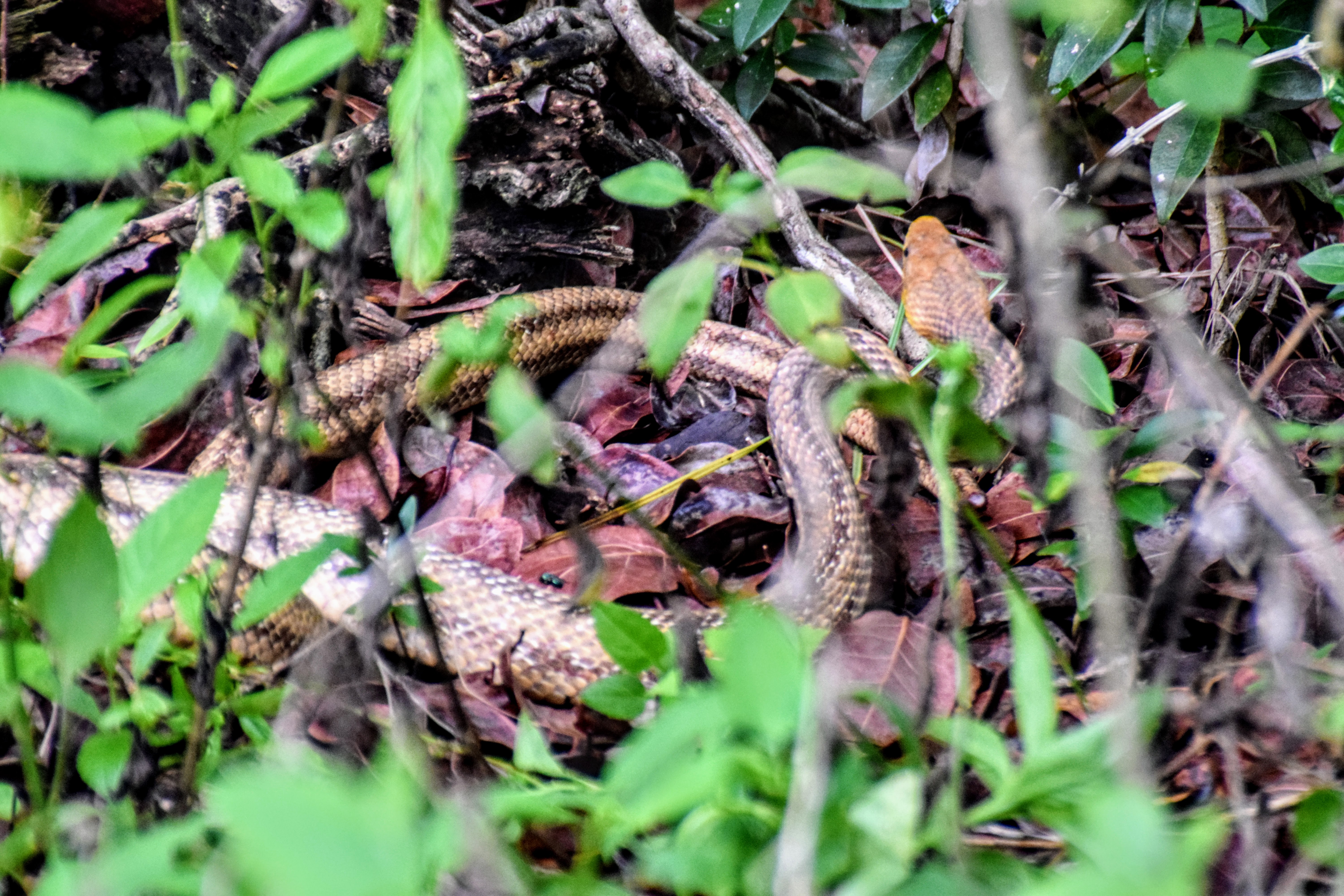
This is a yellow ratsnake, which is the same species as the eastern ratsnake found commonly in the eastern half of the United States, but everywhere outside of Florida it’s black. Ratsnakes are constrictors, and are not venomous, so a lot of herpetology nerds adore them. On Reddit, whenever someone posts a picture of a ratsnake, it’s traditional to start singing about ratsnakes to the tune of “That’s Amore” (example).
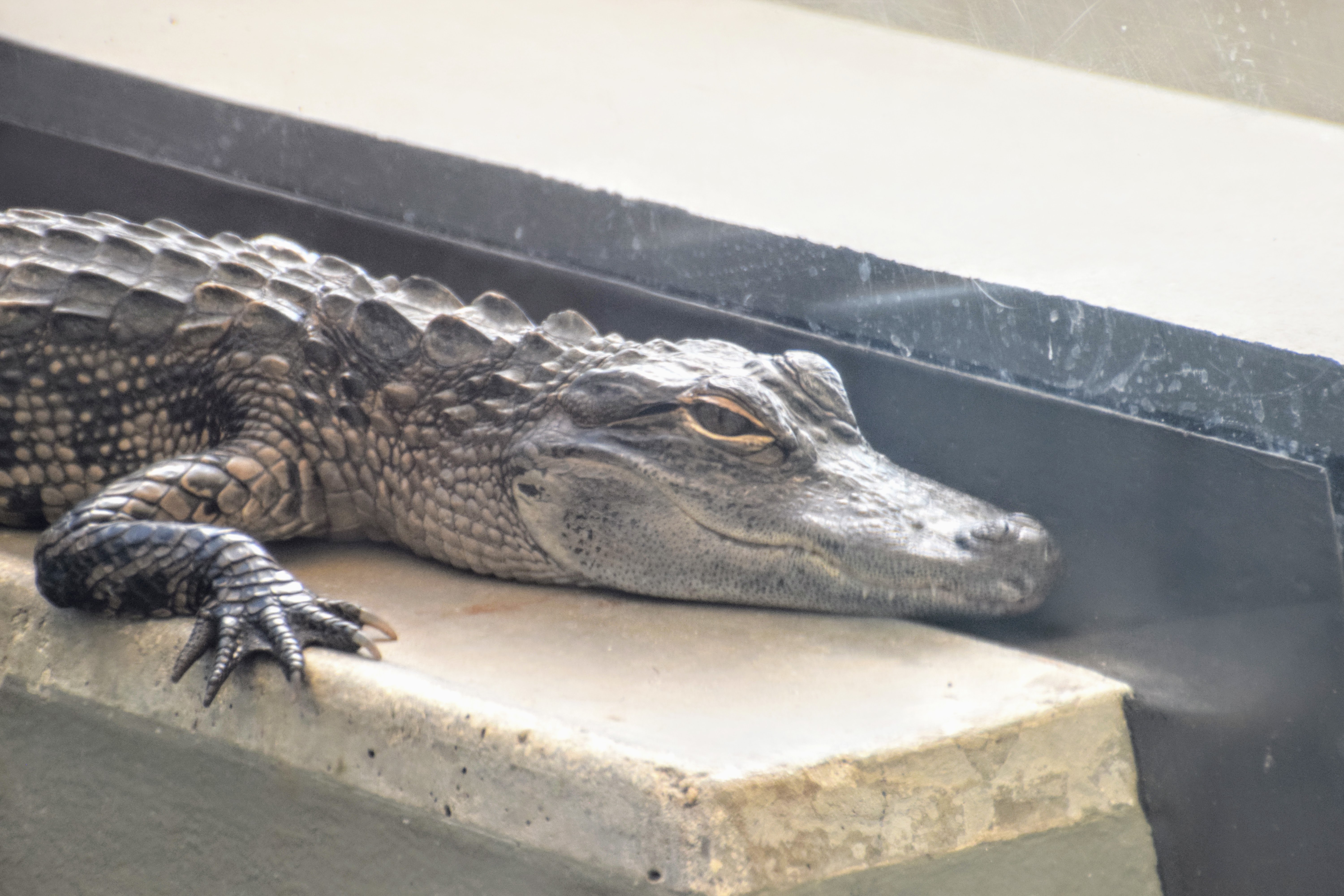
These baby American alligators were also at the museum. It was hard to get pictures of them because they were behind a warped plastic wall.
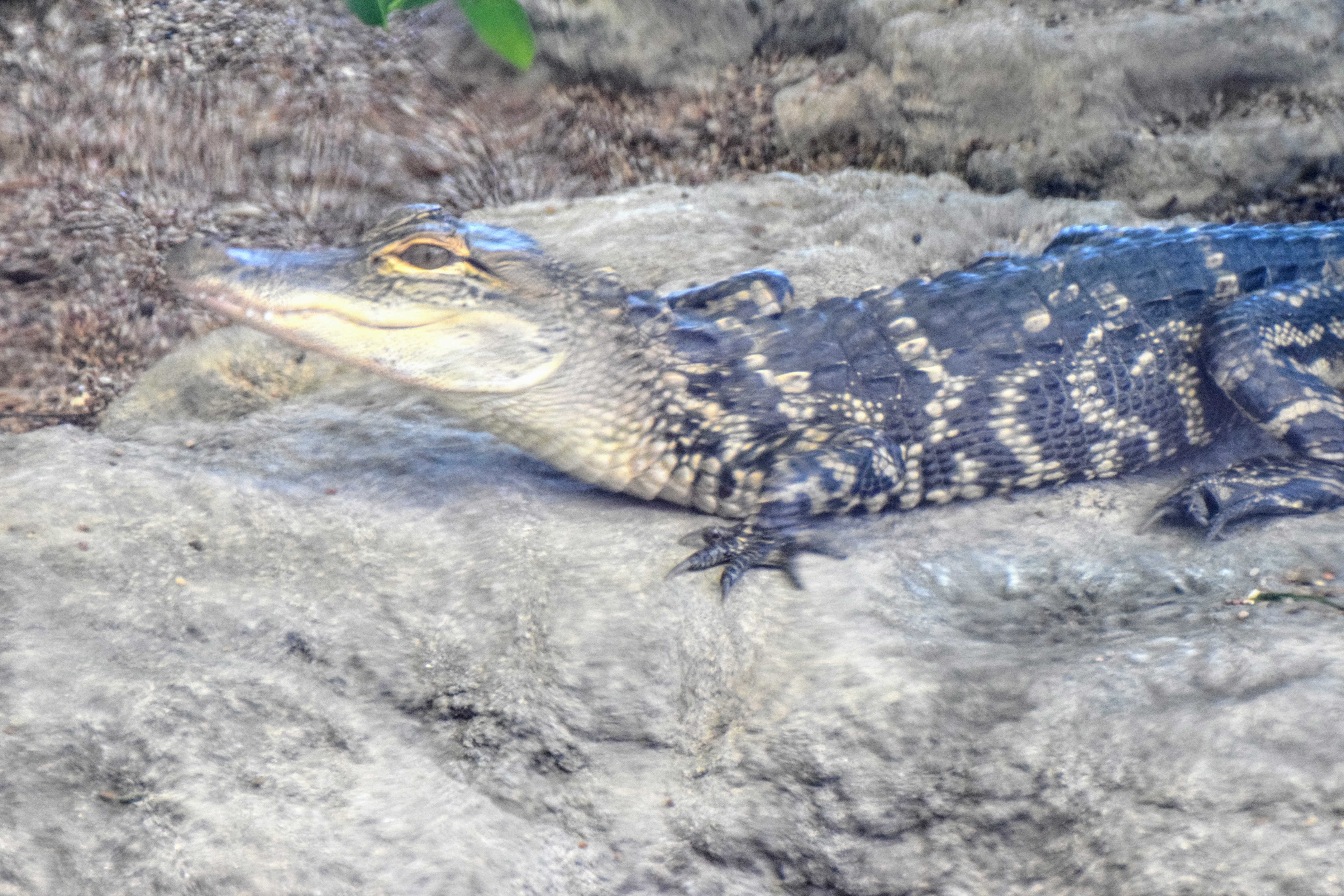
The American Southeast is the only place in the world where you have to tell the difference between crocs and alligators. Nowhere else do their ranges overlap.

This is a golden silk orb-weaver couple. The female is the large (hand-sized!) colorful one. Can you spot the male? Unlike many closely related species, this female won’t eat her mate.
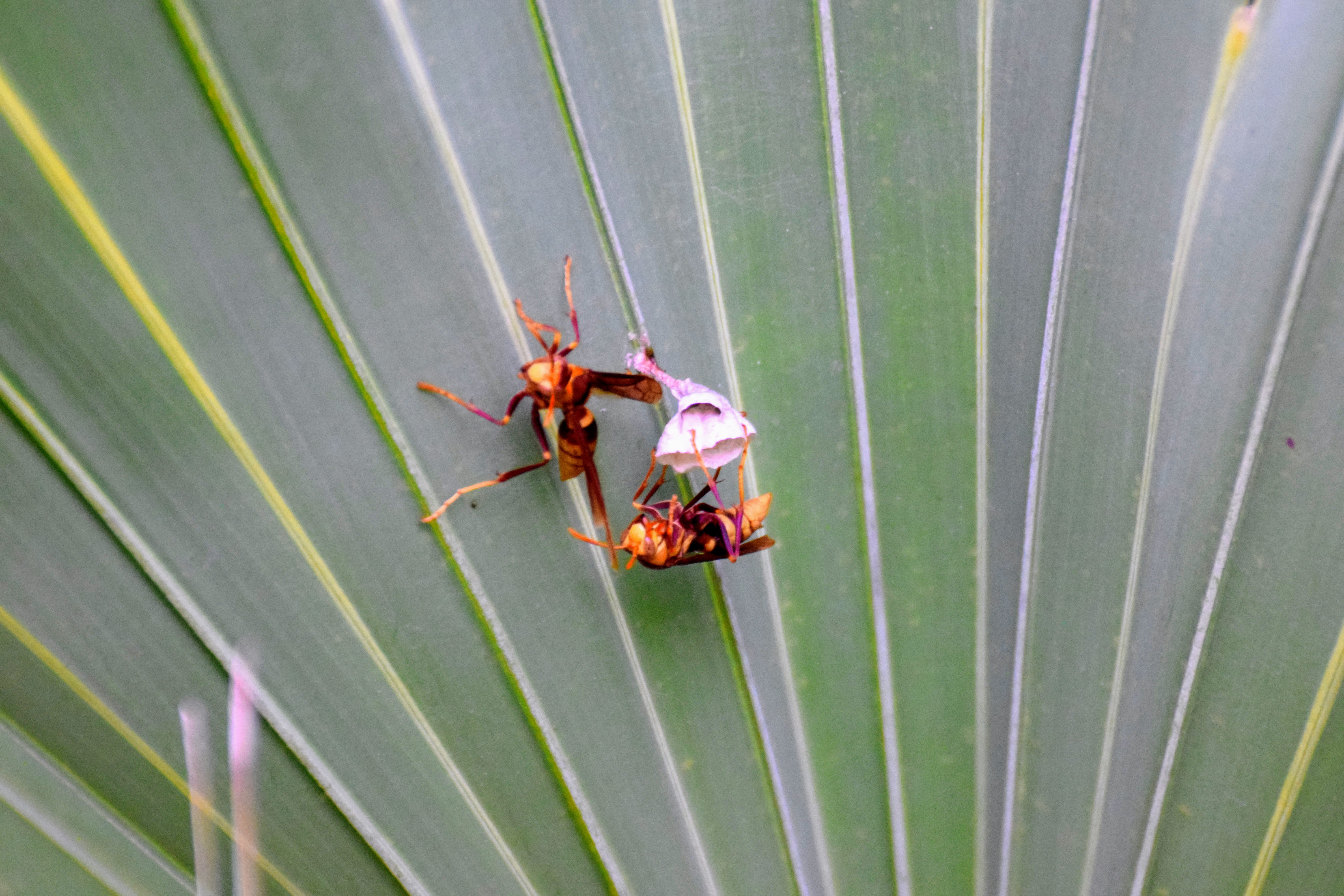
These are paper wasps of some kind, either horse’s paper wasps or Mexican paper wasps. They were on the underside of a big frond right near a big rat nest. I wonder if either group was aware of the other, and if so, what their interactions are like.
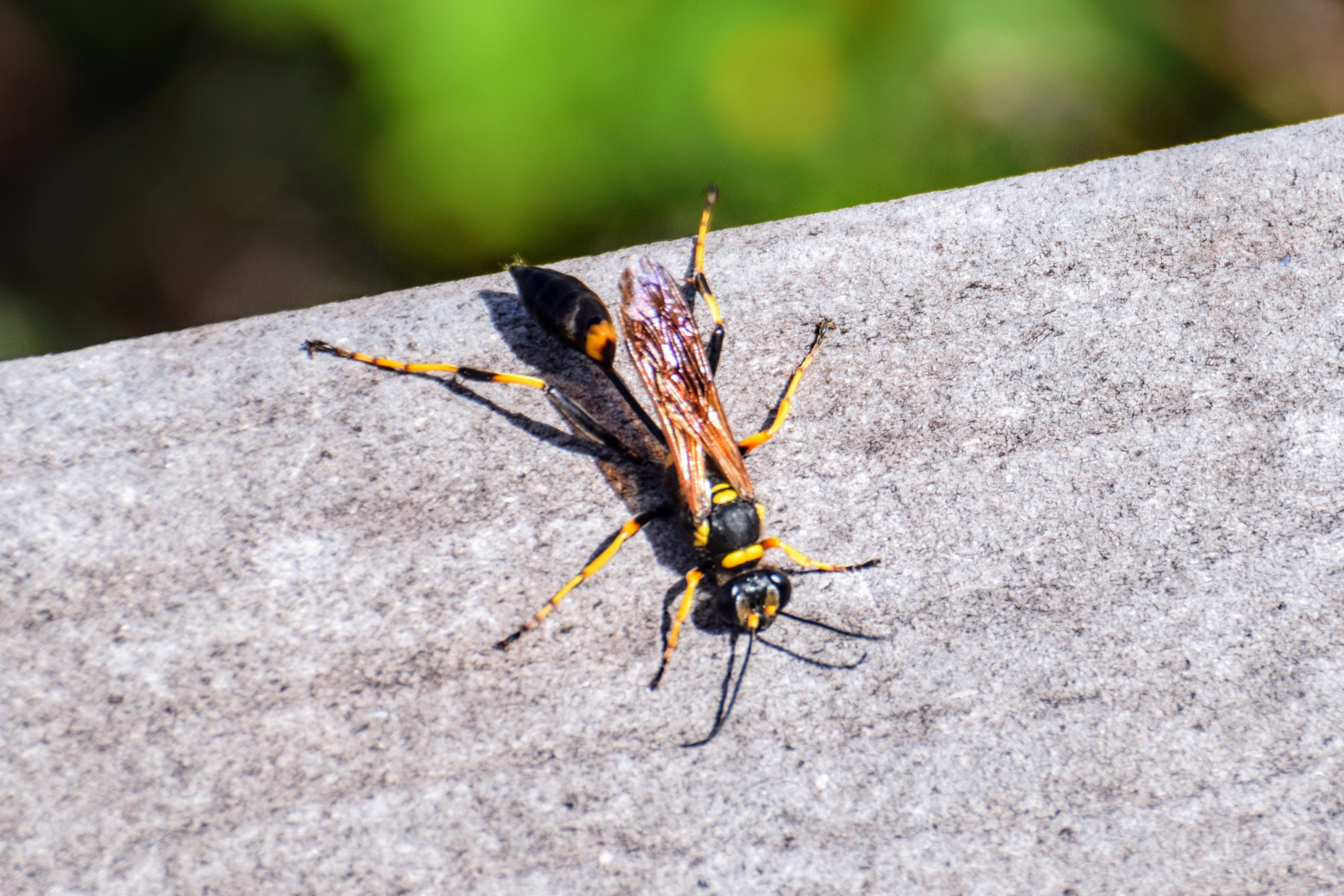
This is a yellow-legged mud dauber wasp. They have a freaky lifecycle: they build a nest made of mud that kind of looks like a swallow’s nest, then catch a bunch of spiders, paralyze them, and seal them inside the nest with the eggs. The larvae then have an easy, fresh food source to sustain them while they grow. If you see one of these nests, don’t break it open unless you want to be showered with a variety of large, dead spiders.

Here are some monarch butterflies. I didn’t know monarchs had such a worldwide distribution! Monterey Bay and Santa Cruz are famous for their impressive numbers of monarchs, so I thought they were a western species.

This is a carpenter-mimic leafcutter bee, a type of solitary (non-colonial) bee that gathers pollen specifically from flowers in the aster family. We don’t know that much about them, similarly to a lot of common bugs. If you want to write a novel scientific paper, just follow a bug around for a whole day and you’re bound to observe something new.

This is a Florida strangler fig just beginning to climb up a palm tree. Strangler figs aren’t technically parasites, since they don’t sap nutrients from their hosts, but they use the host as a scaffold to reach better light conditions without being self-supporting. They grow around the host, putting out more vertical supports that somehow take root, usually killing the host by restricting its growth and access to light. Eventually, it becomes free standing.
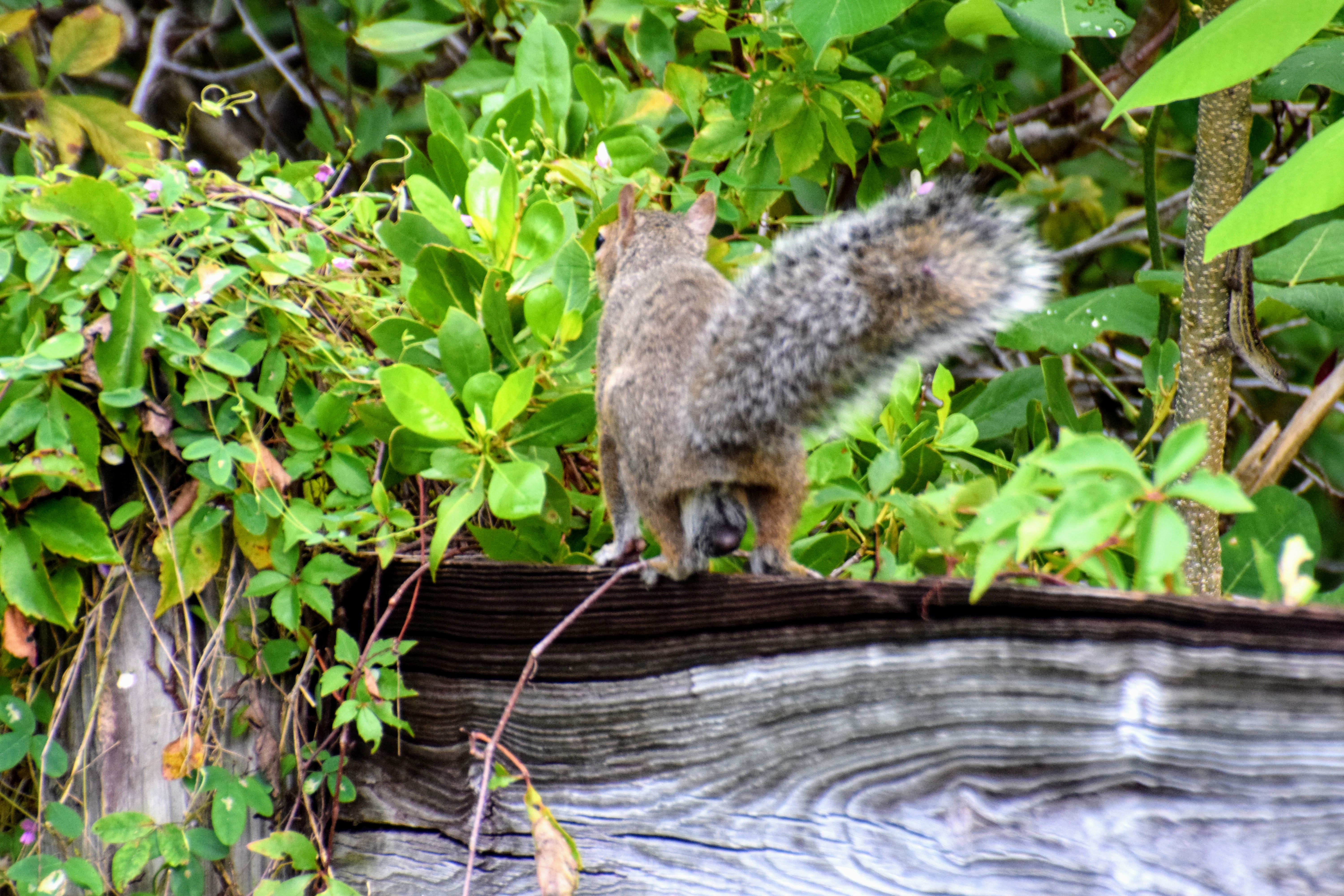
This is a squirrel with the largest testicle to body size ratio I’ve ever seen. How can it climb vertical trees? Doesn’t its giant nutsack get in the way?
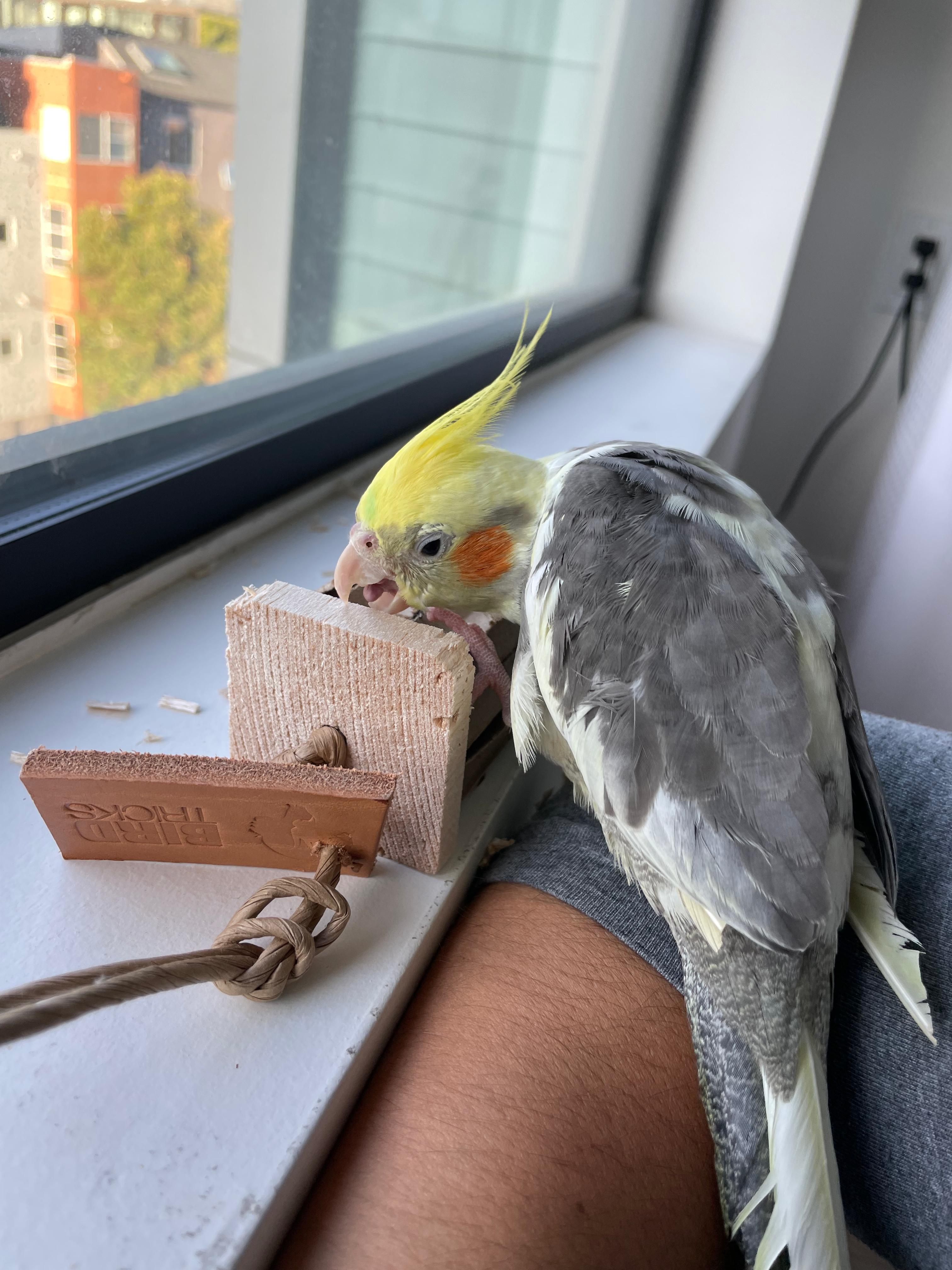
And lastly, a bonus–I recently got a Cockatiel named Cooper! Here he is grasping a favorite toy. He’s not so good at grasping things with his feet yet.
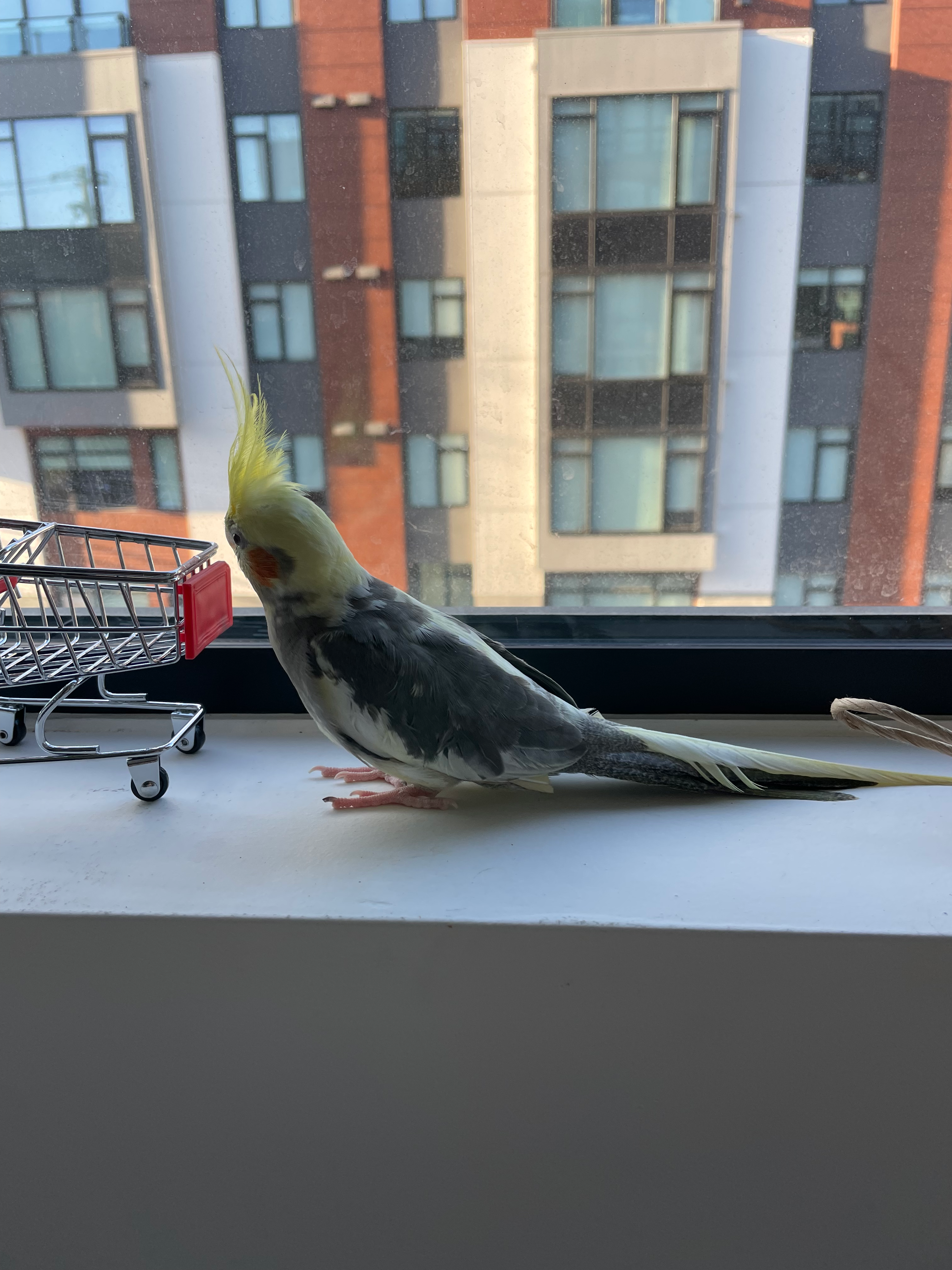
Here’s Cooper birdwatching. He is very interested in crows, gulls, and planes that go by outside our window.

